Highlights and access methods of Atsuta Shrine (Aichi Prefecture)
English | Japanese
Atsuta Shrine is a Shinto shrine located in Nagoya City, Aichi Prefecture. Atsuta Shrine was founded in the year 113, making it about 1900 years old. It is known for housing the Kusanagi Sword (also called Ame-no-Murakumo-no-Tsurugi), one of the Three Sacred Treasures of Japan. The shrine complex includes a treasure hall that stores about 6,000 artifacts, a large camphor tree said to be over 1,000 years old, and the Nobunaga Fence, which was donated by Oda Nobunaga as a token of gratitude for his victory in the Battle of Okehazama.
In this article, we will explain the attractions of Atsuta Shrine in Aichi Prefecture and how to access it for those who are traveling to Japan from overseas.
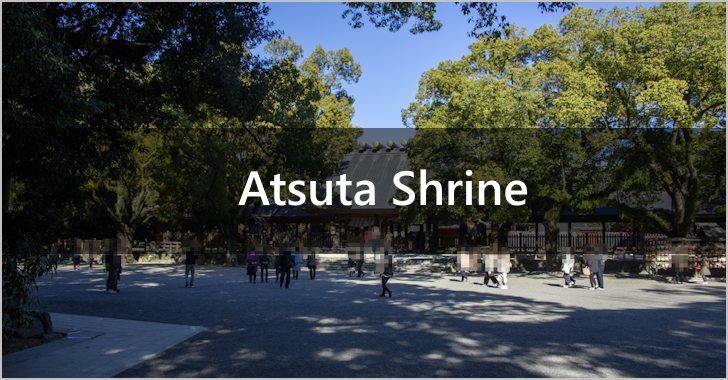
(Last modified: )
(Prefecture : Aichi , Category : Shrines)
Table of contents
- Highlights of Atsuta Shrine
- Visiting hours for Atsuta Shrine
- Main gate (South gate), West gate, East gate
- Hongu
- Kitoden and Nagadoko
- Juyosho and Goshuin(Goshinin)
- Kaguraden
- Kokoro no Komichi and Ichinomisaki Shrine
- Shimizu Shrine and Oshimizu-sama
- Atsuta Shrine's Great Camphor Tree and the Seven Camphor Trees
- Nobunaga-bei
- Homotsukan
- Betsugu Hakkengu
- Kamichikama Shrine
- Shimochikama Shrine
- Seisetsu-mon
- Hisakimiko Shrine, Hikowakamiko Shrine, Minamishingu Shrine, Mita Shrine, Ryu Shrine
- Kusunomimae Shrine, Sugawara Shrine
- Tsurugi no Houko Kusanagi-kan
- Kusanagi Hiroba
- Nijuugojo-bashi
- Atsuta Shrine chicken
- Atsuta Shrine Food & Cafe
- Snowy landscape of Atsuta Shrine
- List of photos related to Atsuta Shrine
- Festivals and Rituals at Atsuta Shrine
- Address and access method of Atsuta Shrine
- Attractions near Atsuta Shrine
- Other information about Atsuta Shrine
Highlights of Atsuta Shrine
We will introduce the highlights of Atsuta Shrine.
Visiting hours for Atsuta Shrine
Atsuta Shrine can be visited at any time, 24 hours a day. However, please note that only the West Gate parking lot is available for use at night. There is no admission fee.
The offering hall is open daily from around 7:00 AM until sunset. Additionally, the reception for prayers and Kagura xis available every day from 8:30 AM to 4:00 PM.
Also, for information on the proper etiquette for visiting Atsuta Shrine, please refer to 「Shrine Visitation Etiquette」 at Atsuta Shrine's Official Website.
Main gate (South gate), West gate, East gate
Atsuta Shrine has three gates: the Main Gate (South Gate), West Gate, and East Gate.
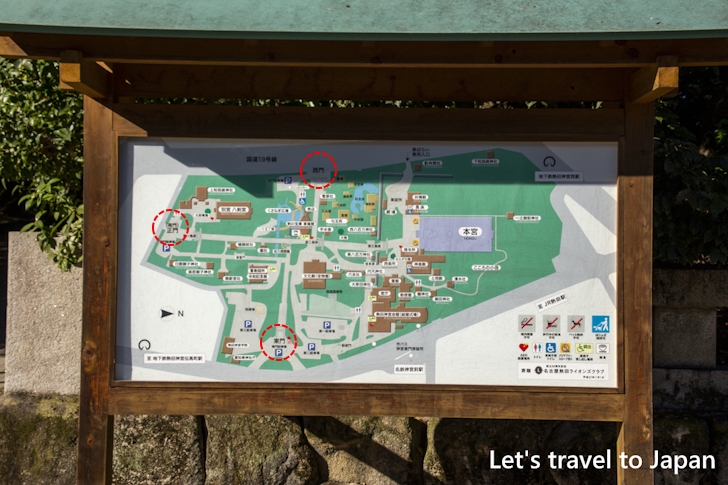
For accessing Atsuta Shrine, if you use the Nagoya Municipal Subway Atsuta-Jingu-Nishi Station, the West Gate is closer.
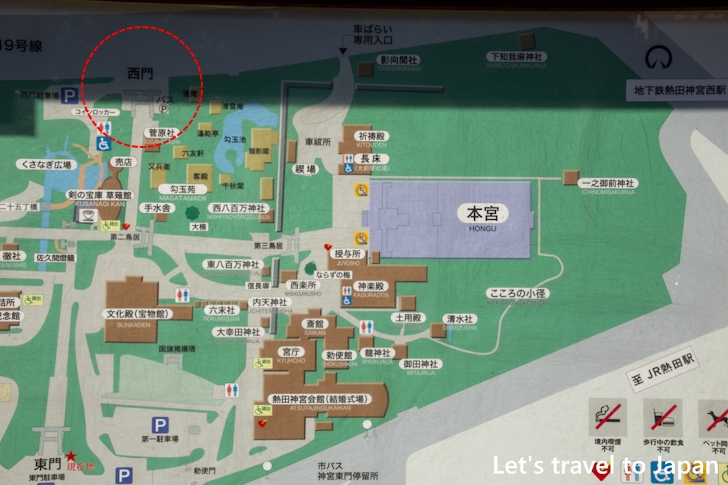
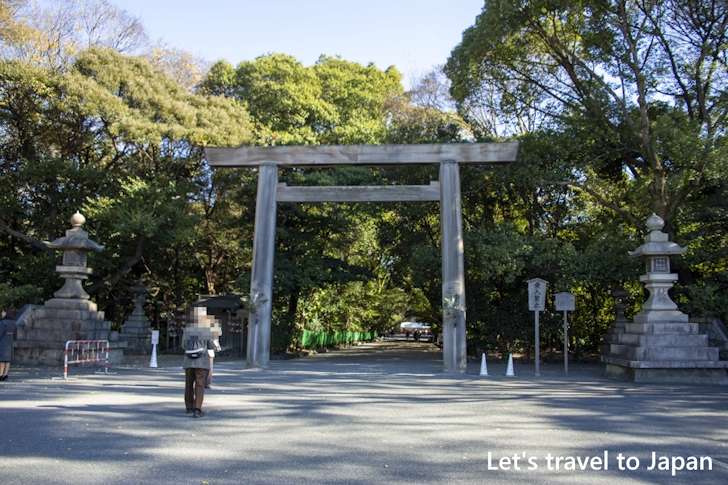
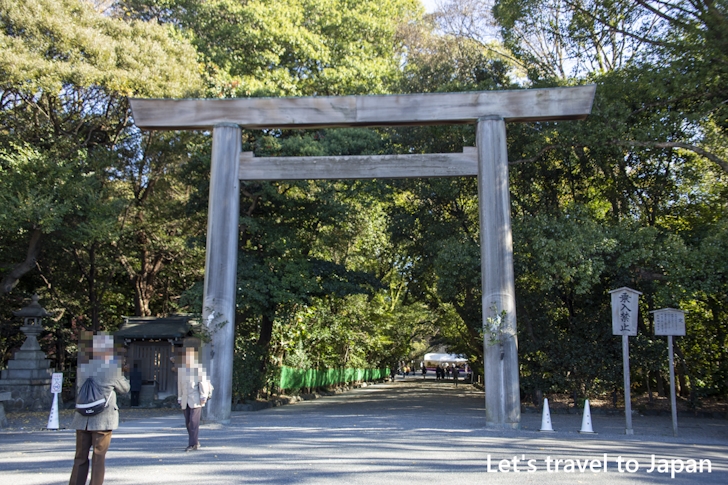
For accessing Atsuta Shrine, if you use the Meitetsu Jingumae Station, JR Atsuta Station, or Nagoya Municipal Subway Atsuta-Jingu-Tenmacho Station, the East Gate is closer.
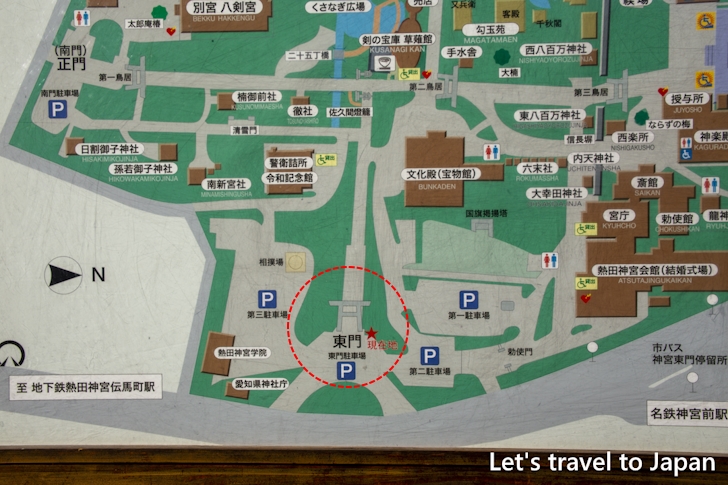
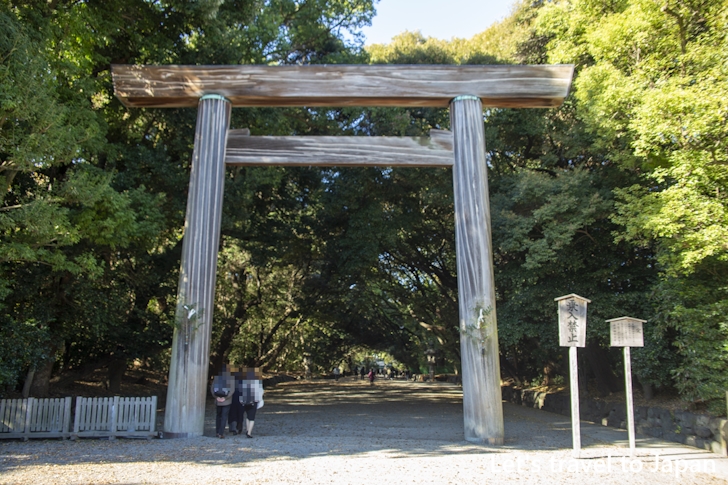
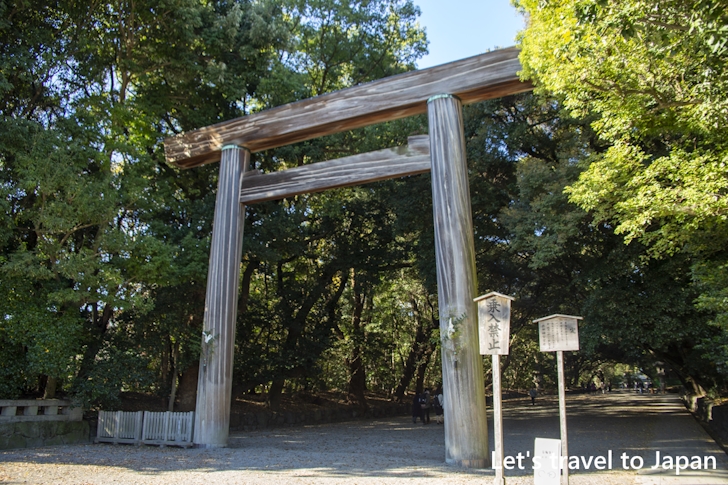
For accessing Atsuta Shrine, if you use the Nagoya Municipal Subway Atsuta-Jingu-Tenmacho Station, both the Main Gate (South Gate) and East Gate are approximately at the same distance. The torii gate in front of the Main Gate is the first torii gate of the shrine.
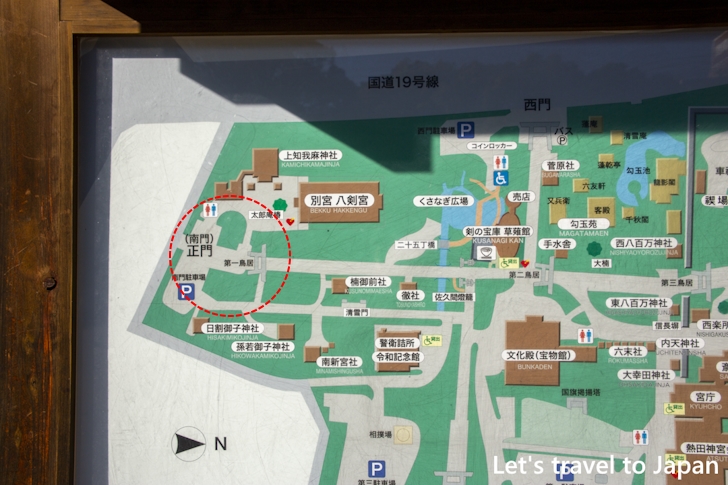
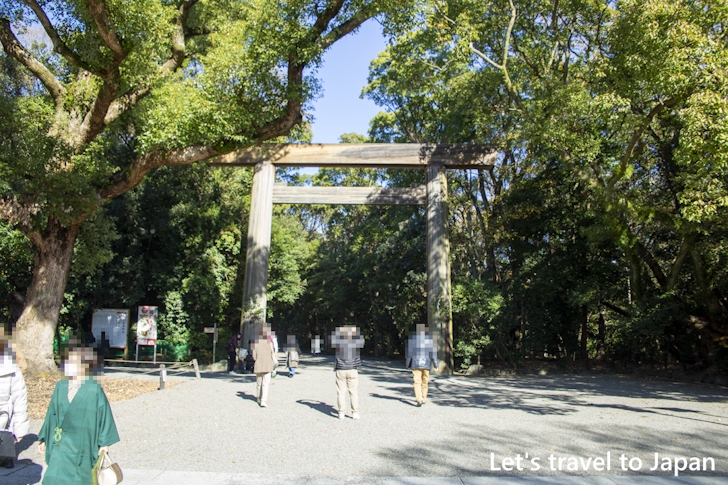
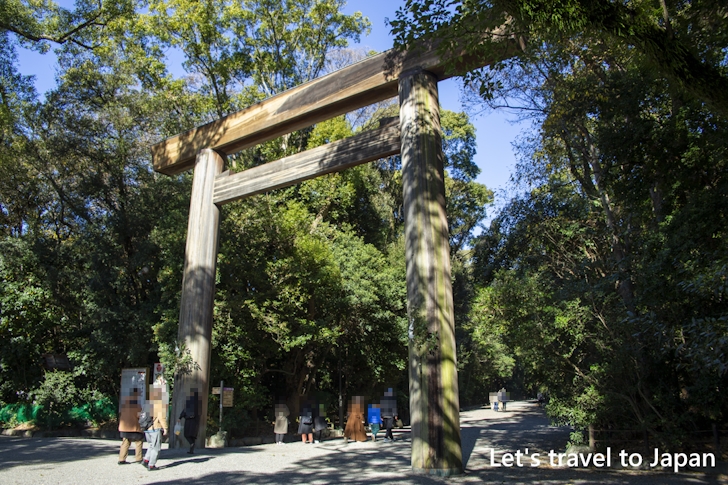
Hongu
When visiting the Hongu, regardless of whether you enter from the Main Gate, East Gate, or West Gate, you will find the second torii gate near the treasure hall.
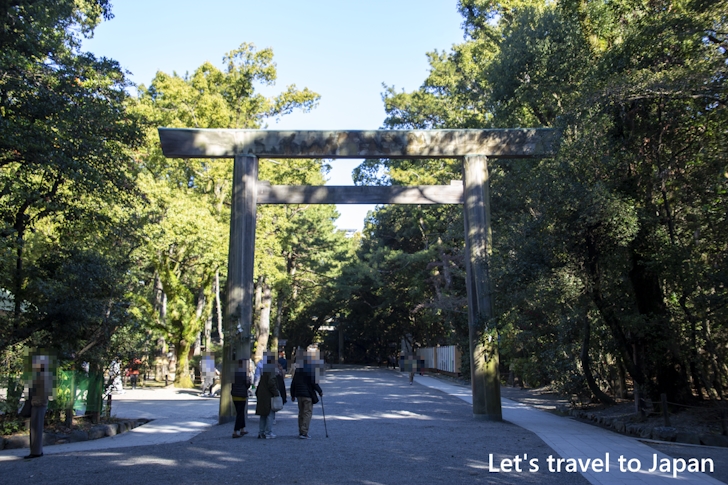
After passing through the second torii gate, there is a hand-water basin (temizusha) on the left. Please rinse your hands and mouth here.
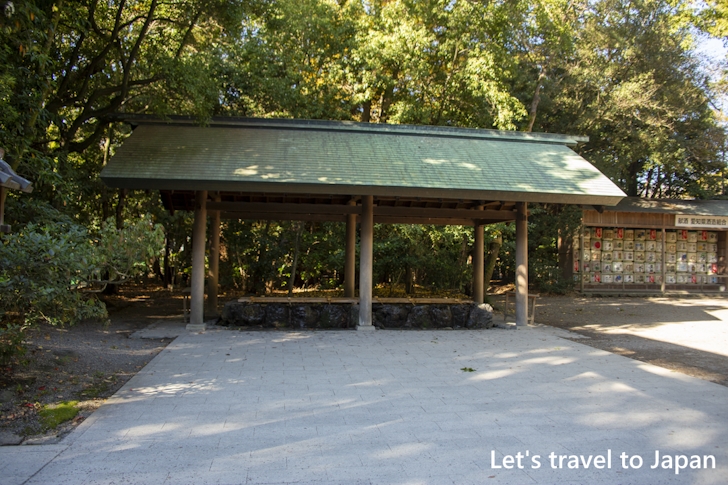
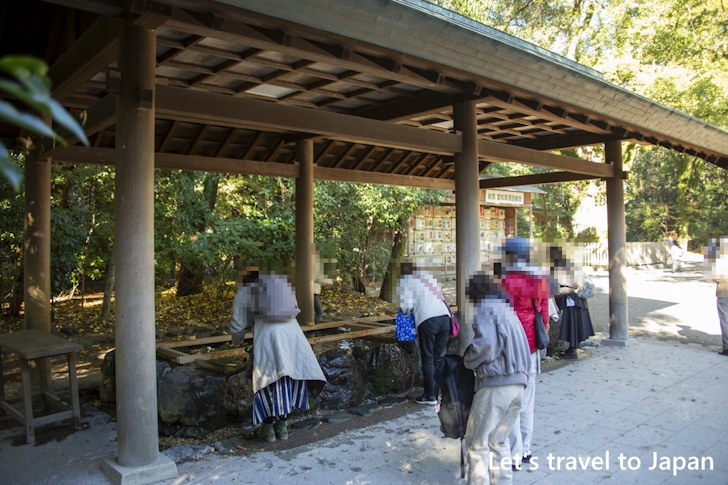
Continue along the approach, pass through the third torii gate, and you will see the Hongu directly ahead. The deity enshrined in the Hongu is Atsuta-no-Ookami.
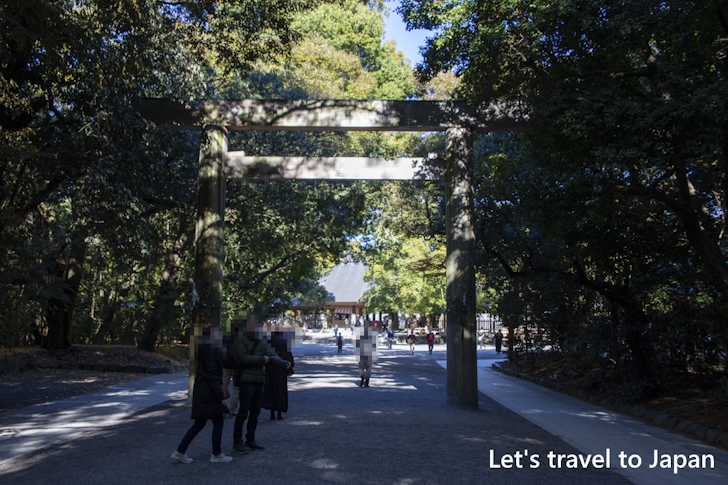
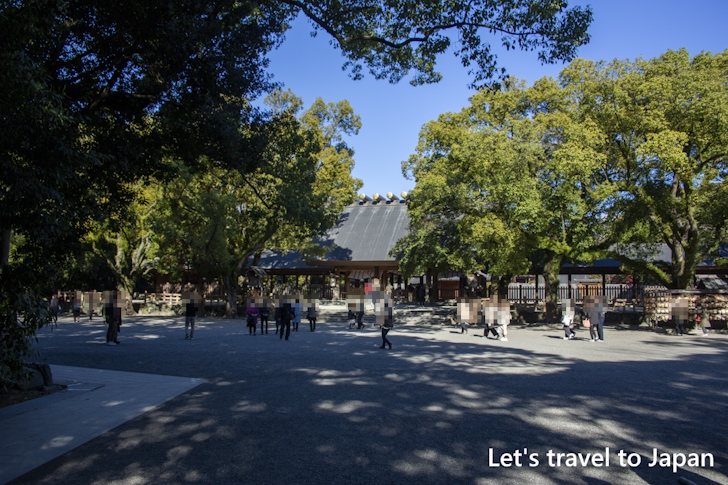
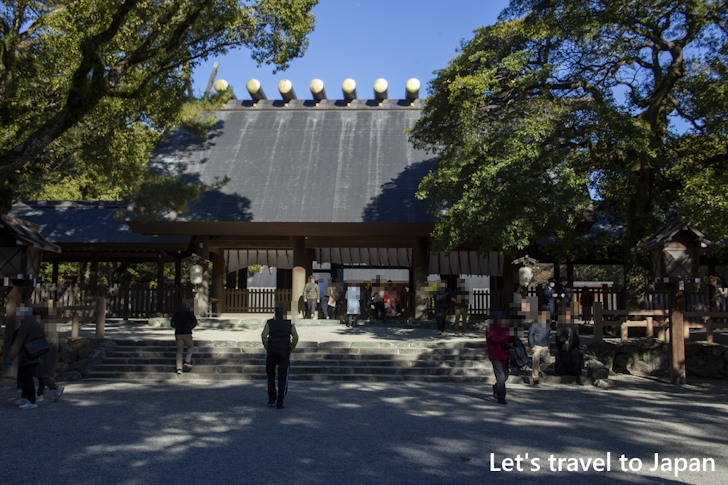
Please note that there are small stairs in front of the Hongu, and photography is prohibited from the top of these stairs onwards.
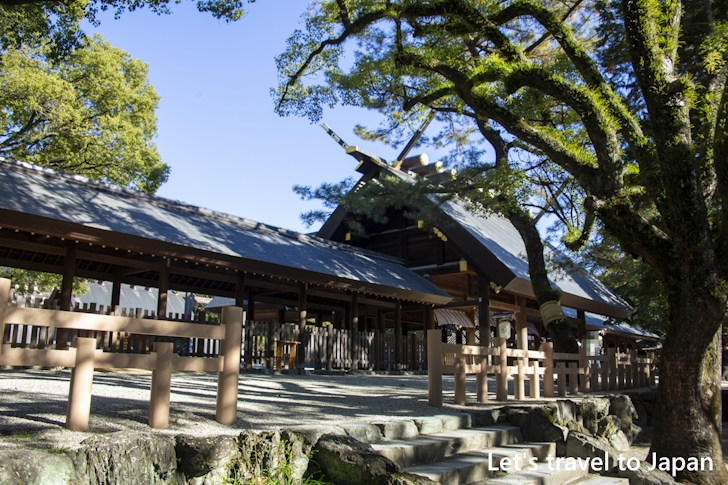

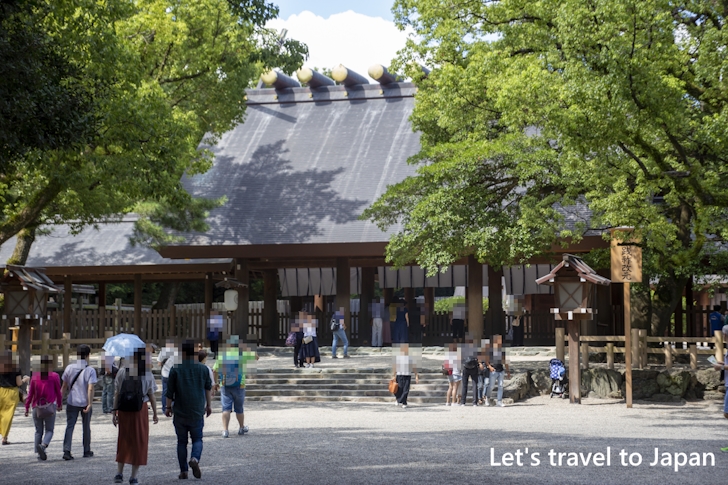
Kitoden and Nagadoko
To the left of the Hongu, there are the Kitouden and Nagadoko.
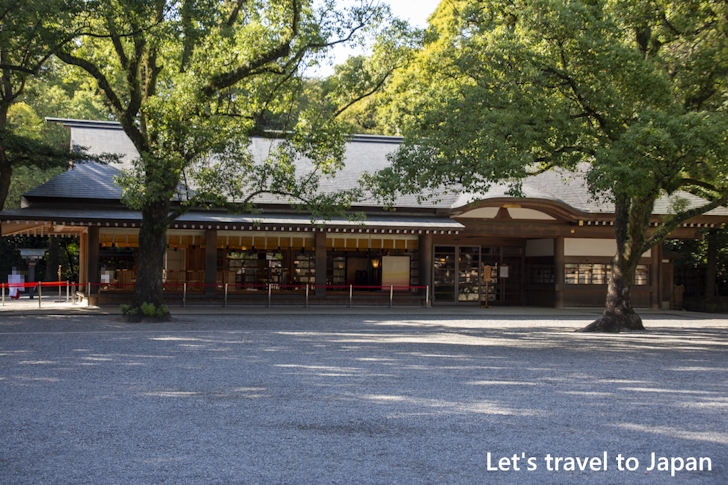
The Kitouden mainly conducts Kurumabarai.
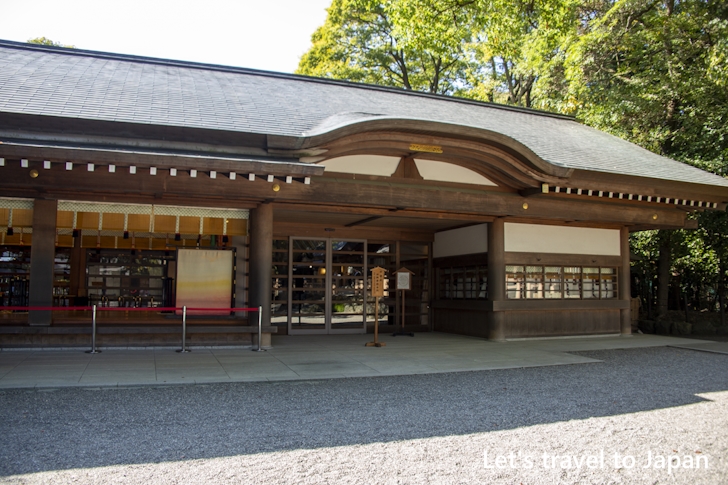
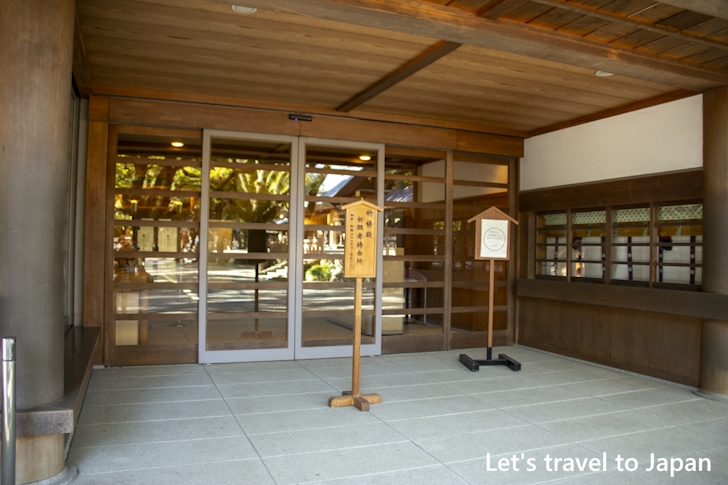
For Kurumabarai, an entrance is prepared along National Route 19 (also known as Route 22).
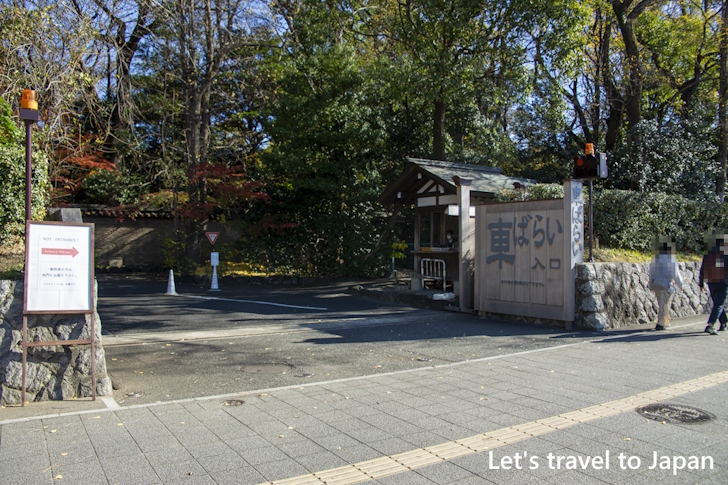
In one corner of the Kitoden is the Nagadoko. When holding a Shinto wedding ceremony at Atsuta Shrine, you can choose from three venues: Omae Kyoshiki, Gishikiden Kyoshiki, and Minamo Shinden Kyoshiki. If you choose the Omae Kyoshiki, it is conducted in Nagadoko.
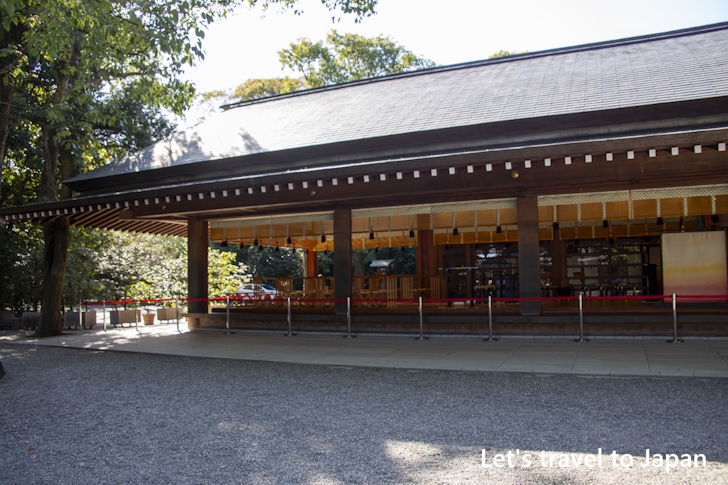
This is what it looked like when a ceremony was previously held. Since it is outdoors, friends and others who could not be invited to the reception can watch from outside.
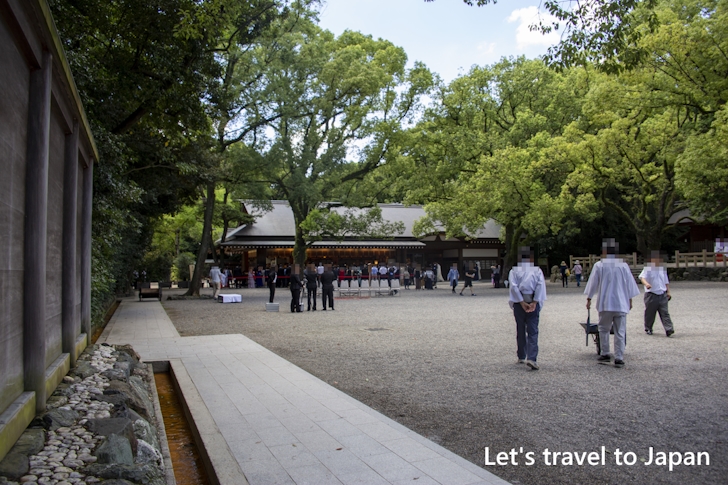
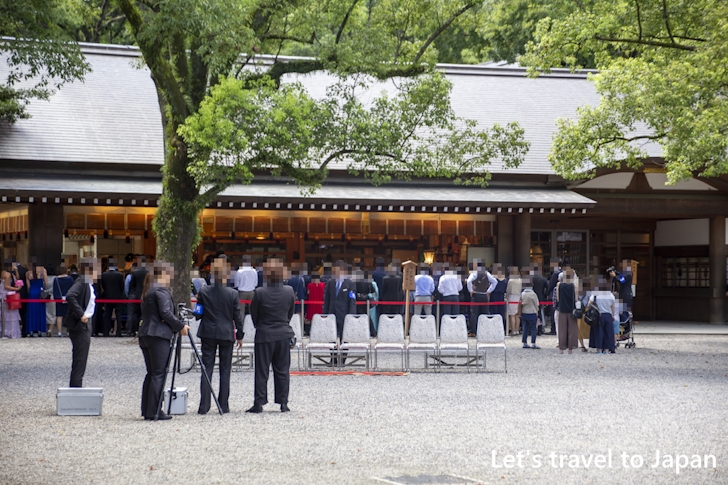
Juyosho and Goshuin(Goshinin)
To the right of the Hongu, there is the Juyosho, where you can receive talismans, amulets, and draw fortune slips. Applications for prayers can also be made here.
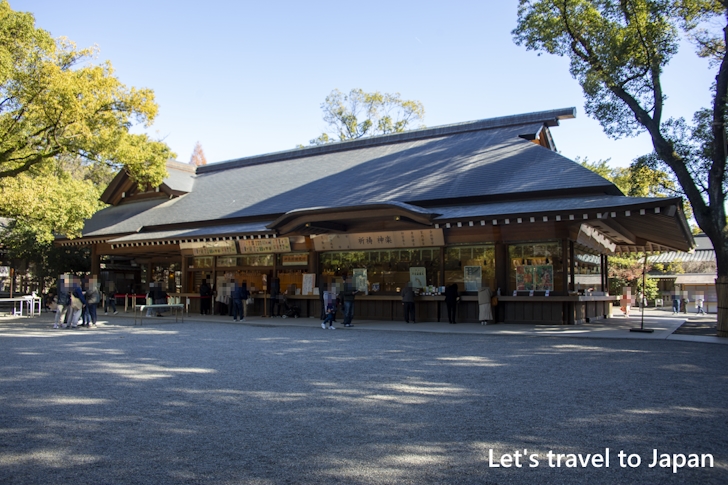
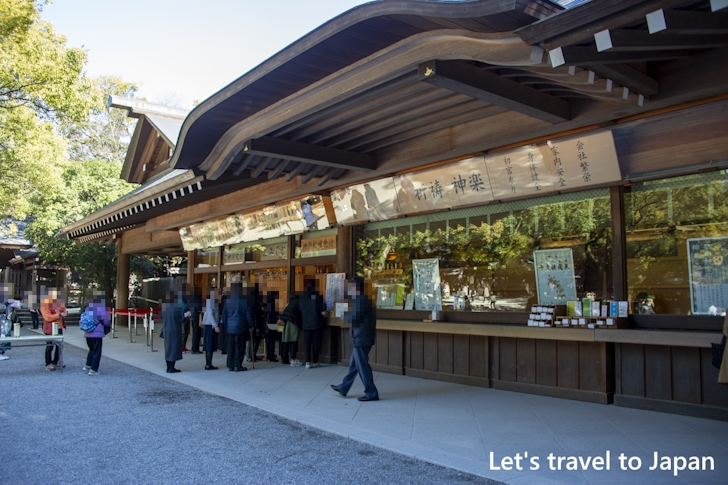
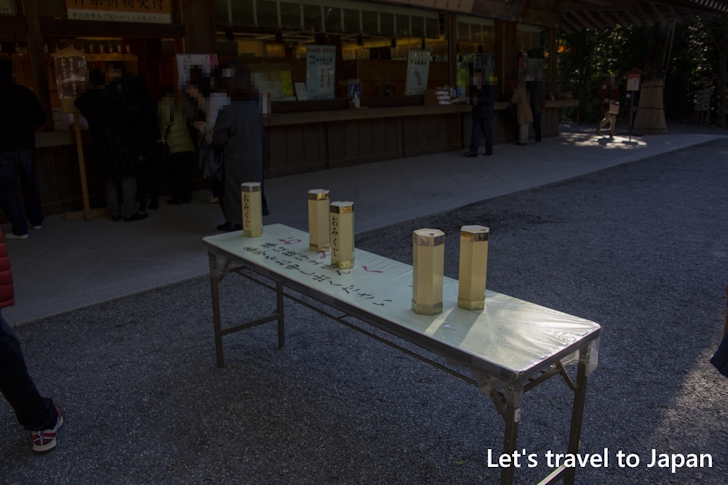
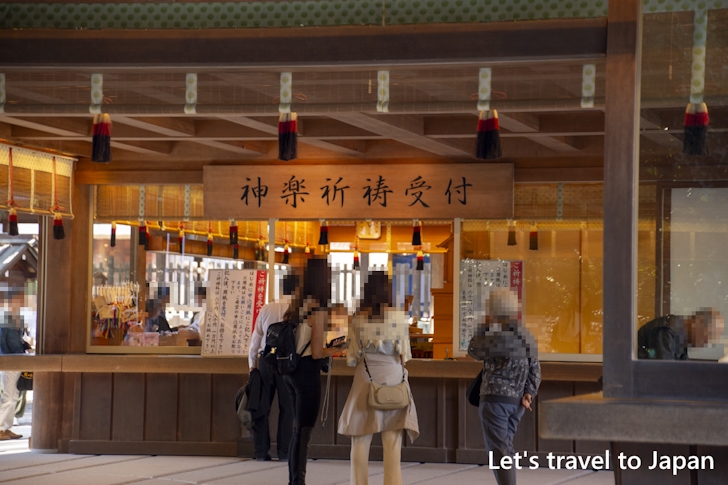
Additionally, the reception for Goshuin(Goshinin) is also conducted at the Juyosho.
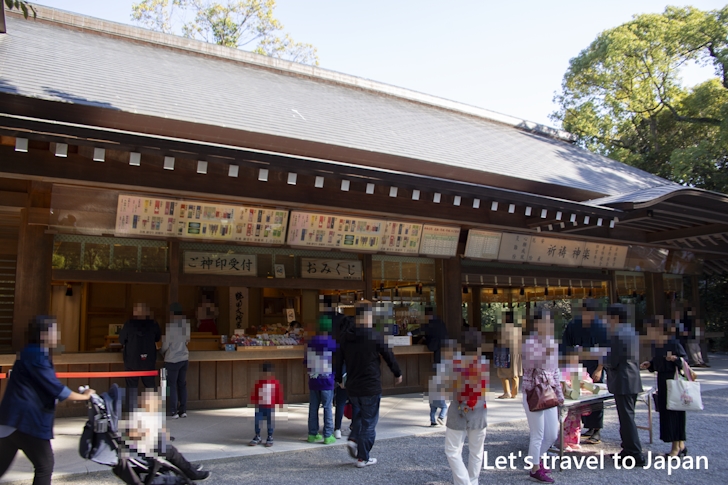
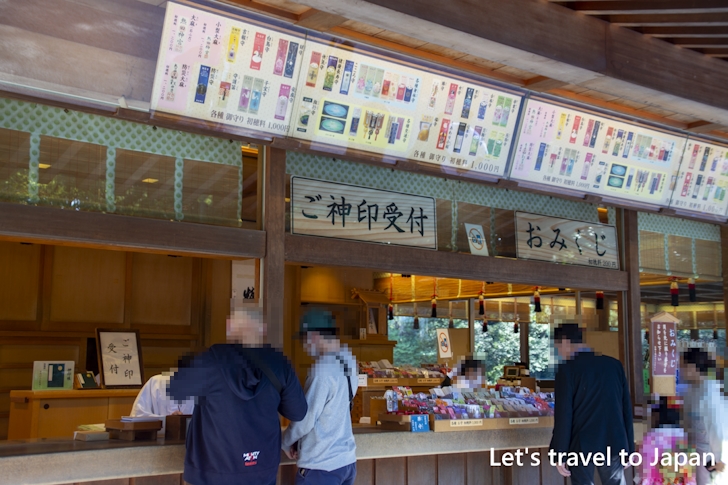
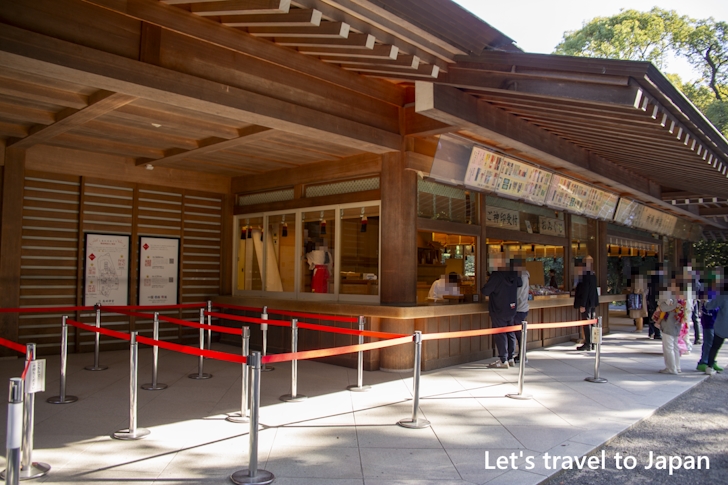
At Atsuta Shrine, you can receive three different Goshuin(Goshinin). The Goshuin(Goshinin) for Betsugu Hakkengu and Kamichikama Shrine can be obtained at the offering hall of Kamichikama Shrine.
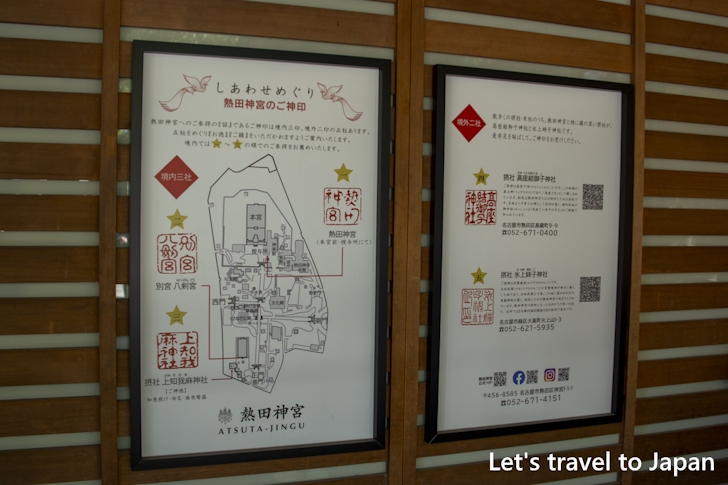
Kaguraden
To the right of the Juyosho, there is the Kaguraden. It is a place where prayers are offered for various occasions such as the Hatsumiya-Moude, prayers for safe childbirth, Shichi-Go-San Moude, and Yakuyoke. (The reception for these prayers is conducted at the Juyosho.)
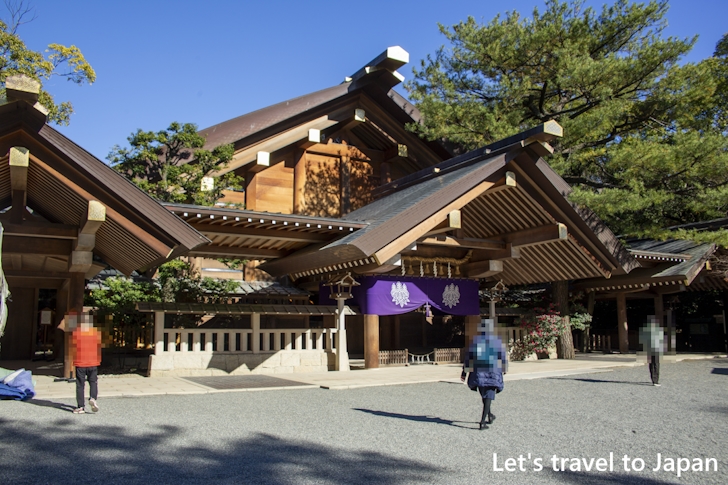
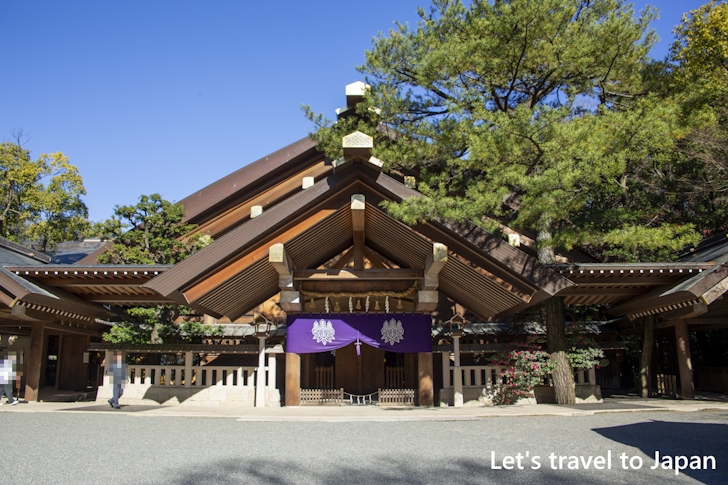
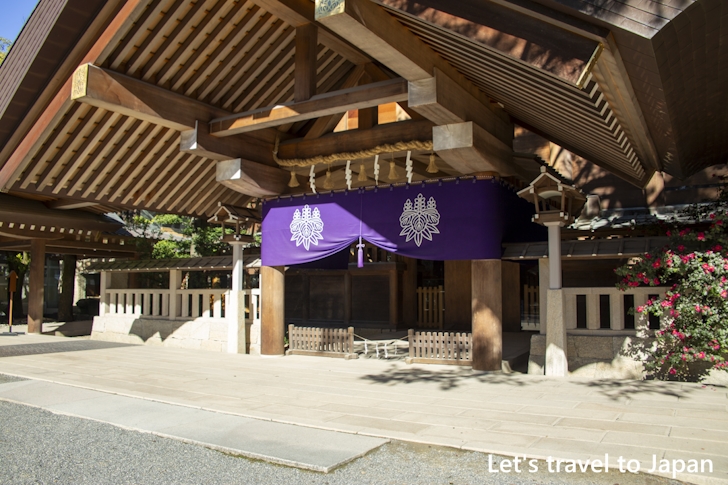
In front of the Kaguraden is a plum tree known as 'Narazu no Ume.' Every February, double-flowered blossoms begin to bloom, but it has never borne fruit, hence its name 'Narazu no Ume' (fruitless plum). It is said to have been depicted in ancient maps of the shrine grounds from the Muromachi period.
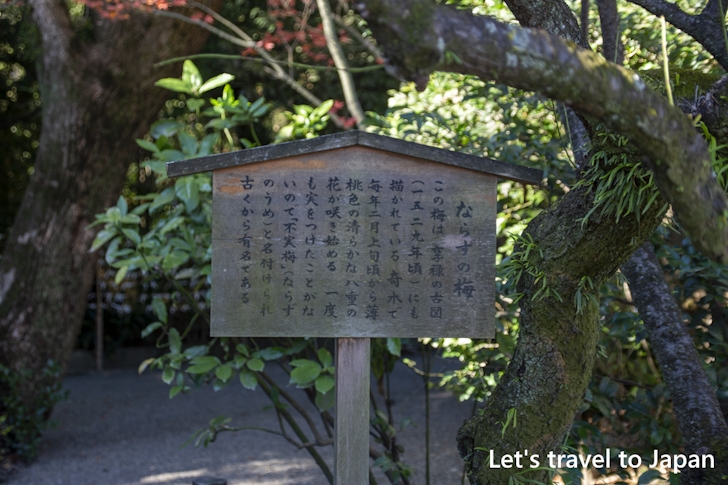
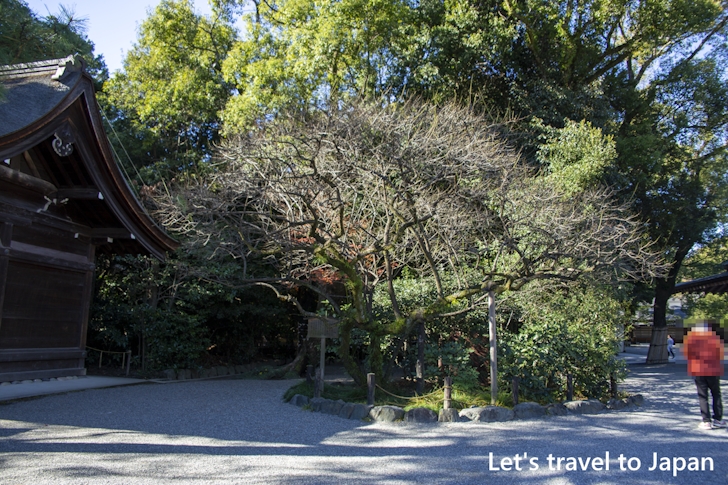
Kokoro no Komichi and Ichinomisaki Shrine
At the very back of Atsuta Shrine, near the rear of the Hongu, is Ichinomisaki Shrine. Ichinomisaki Shrine is one of the auxiliary shrines of Atsuta Shrine. Previously, it was a sacred area off-limits to the public, but it was opened to the public in December 2012. At Ichinomisaki Shrine, the Aramitamaof Atsuta-no-Ookami is enshrined.
The path leading to Ichinomisaki Shrine is known as 'Kokoro no Komichi'. There are entrances on both the left side of the main shrine and the right side of the Prayer Hall, leading to Ichinomisaki Shrine. Please note that photography is prohibited on Kokoro no Komichi and at Ichinomisaki Shrine. Additionally, Kokoro no Komichi is only accessible from 9 AM to 4 PM."
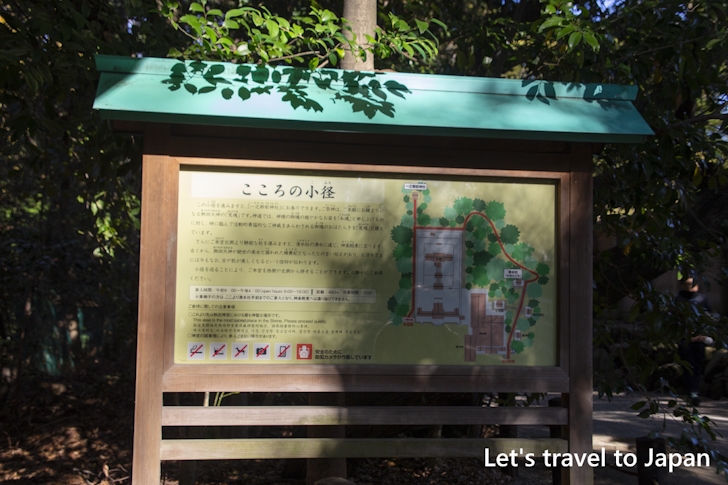
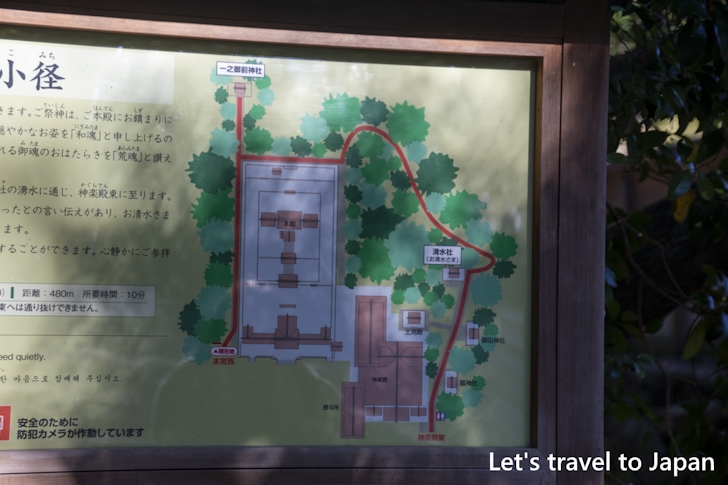
If you are proceeding from the left side of the Hongu, turn right along the threshold of the Hongu and then continue straight ahead.
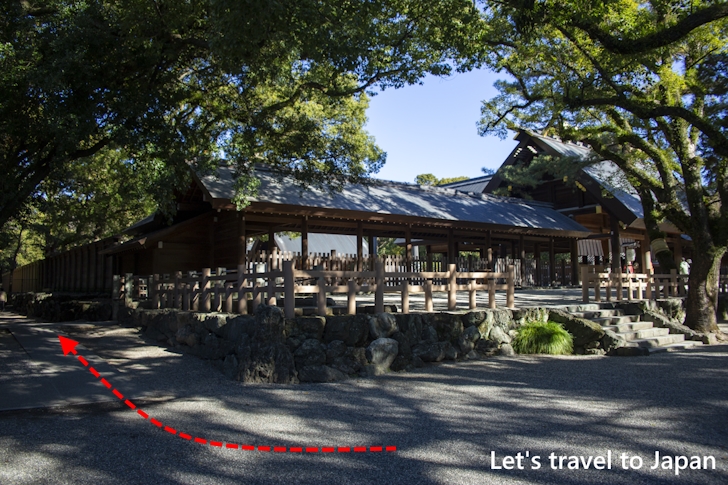
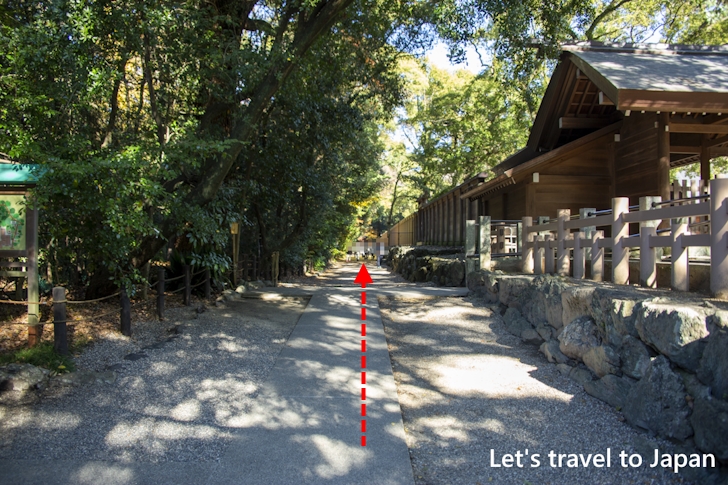
If you are proceeding from the right side of the Kaguraden, there is a sign near the right end of the hall. Turn left at the sign, then continue straight on the pathway to the right. The left path leads to the Doyoden.
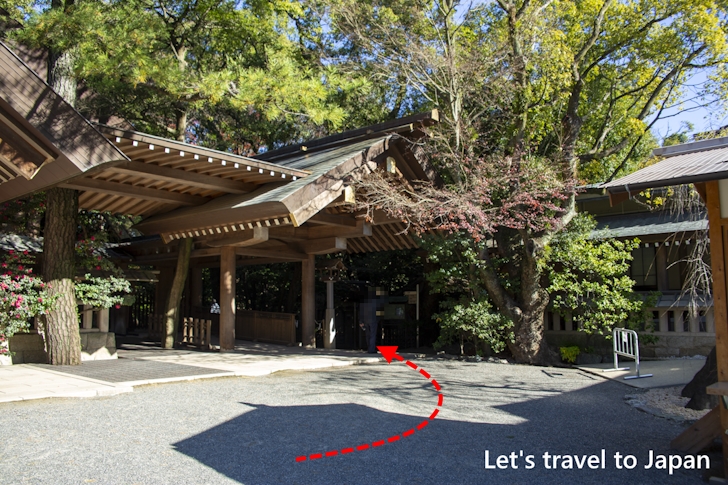
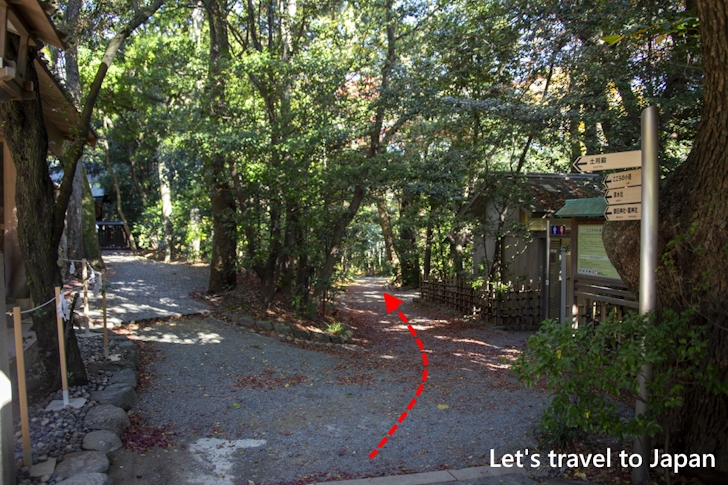
Please note, Shimizu Shrine is located further along Kokoro no Komichi, entered from the Kaguraden side. I have confirmed with Atsuta Shrine via telephone that photography is allowed up to Shimizu Shrine.
Shimizu Shrine and Oshimizu-sama
As you follow Kokoro no Komichi from the right side of the Kaguraden, you will come across Shimizu Shrine. Shimizu Shrine is one of the minor shrines of Atsuta Shrine. The deity enshrined here is the water goddess, Mizuhanome-no-Kami.
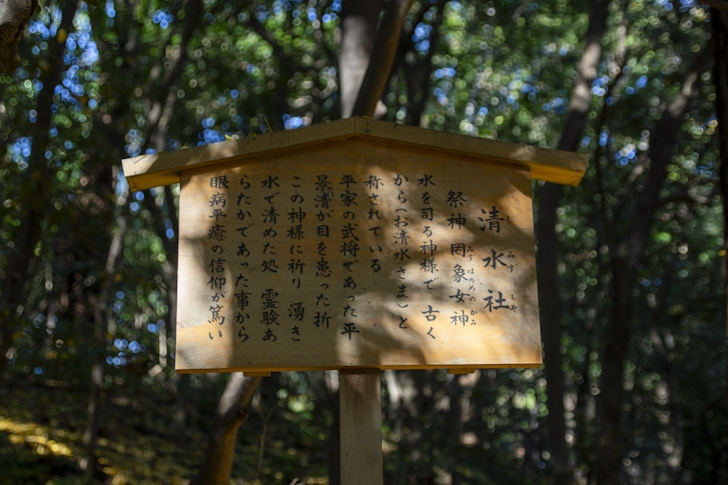
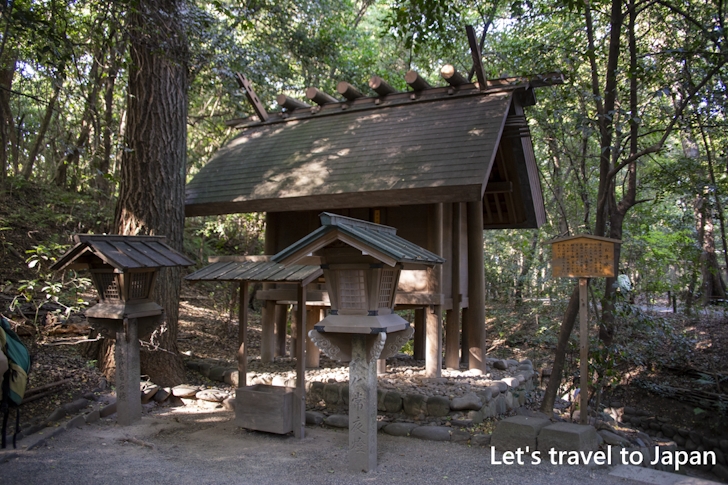
To the right of Shimizu Shrine, there is a spring. It is said that washing your eyes with this water will improve your vision, and washing your skin will make it beautiful. This spring is affectionately known as 'Oshimizu-sama.' A ladle is provided near the spring, so worshippers typically scoop water and pour it three times over the stone in the center of the spring before praying.
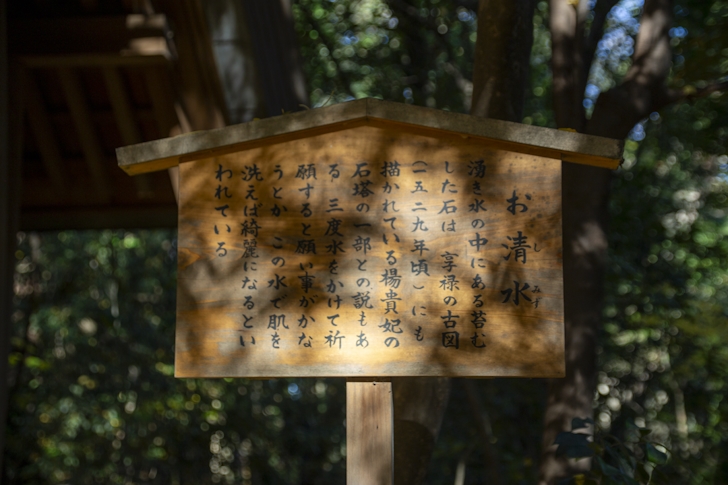
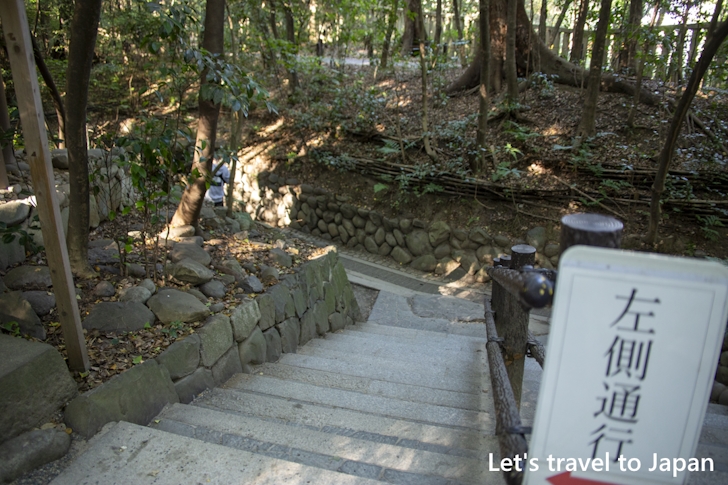
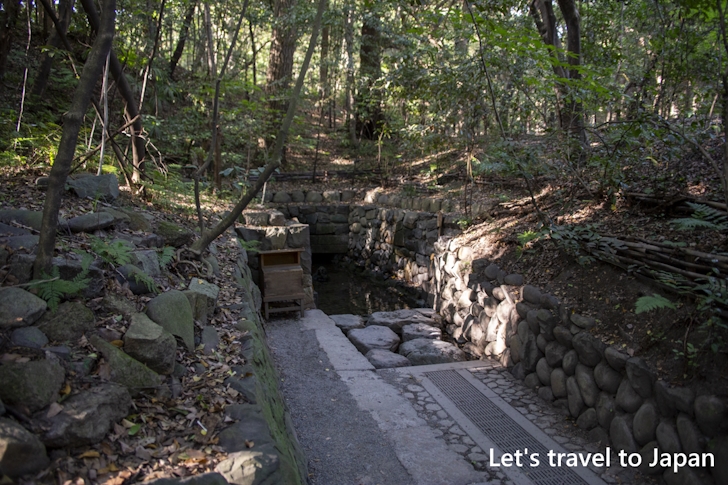
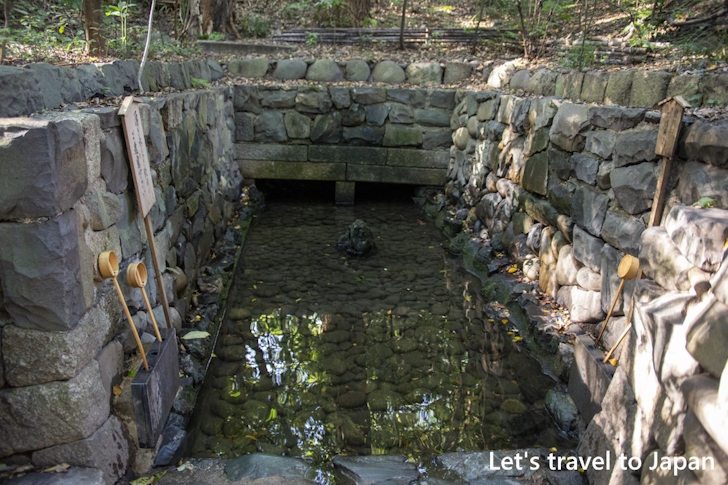
Atsuta Shrine's Great Camphor Tree and the Seven Camphor Trees
Atsuta Shrine is home to many camphor trees. Particularly famous is the great camphor tree (Ookusu) located right beside the hand-water basin. It is said to be over 1000 years old and is believed to have been planted by Kobo Daishi (Kukai).
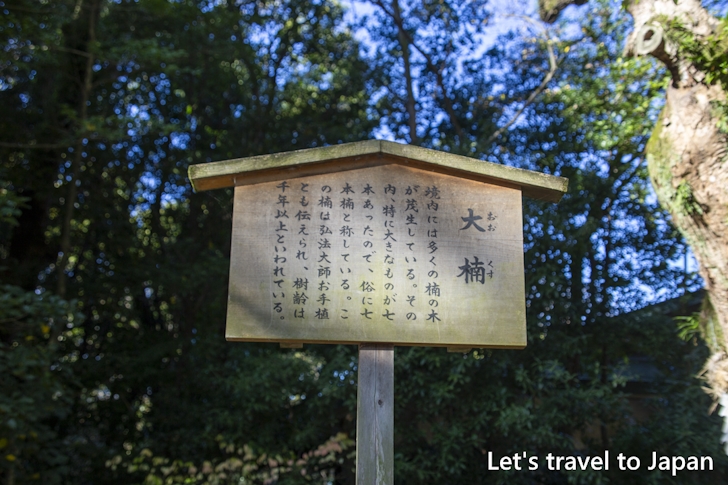
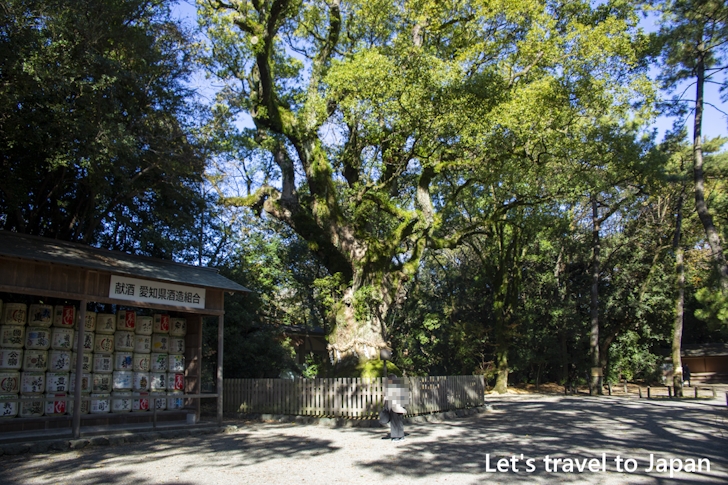
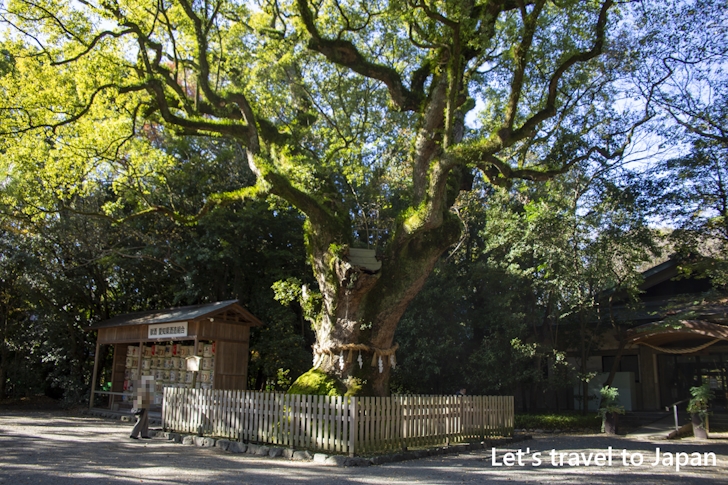
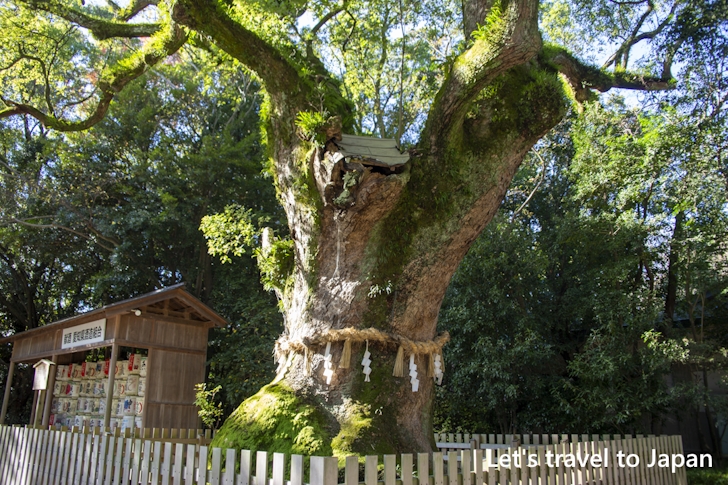
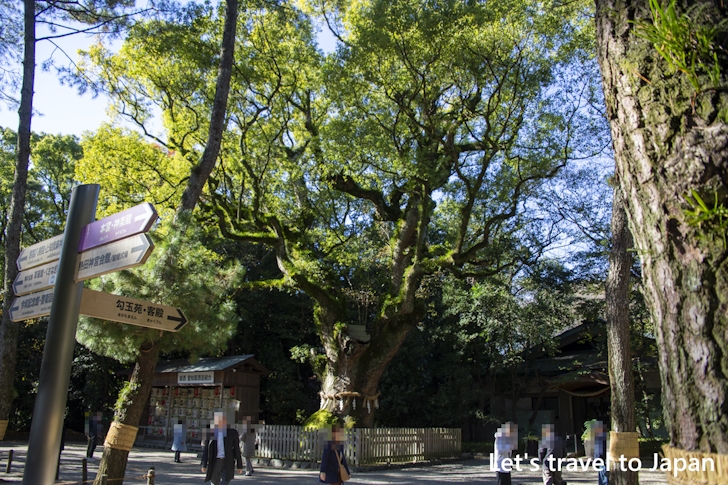
A snake is said to reside in this great camphor tree, and eggs are offered to it.
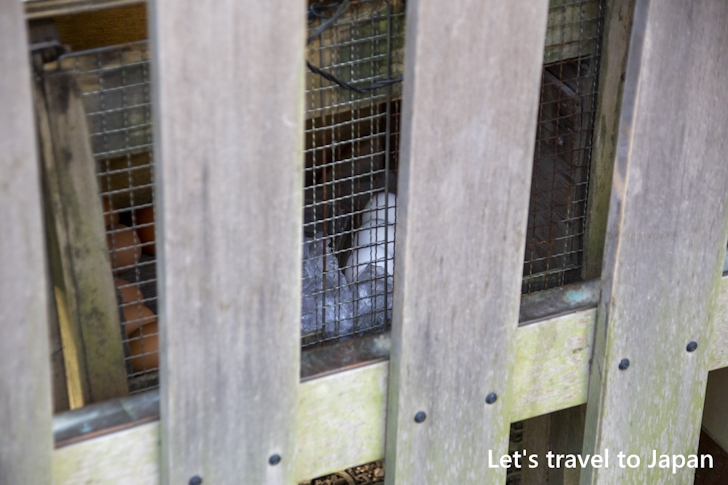
Among the camphor trees in Atsuta Shrine, seven particularly large ones are collectively known as the 'Seven Camphor Trees,' and this great camphor tree is one of them. Currently, two of the seven trees can be seen by visitors. One is located along the path to Shimizu Shrine.
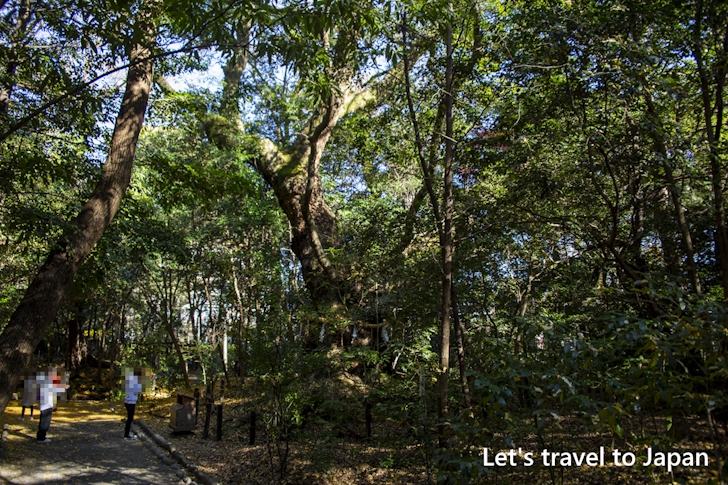
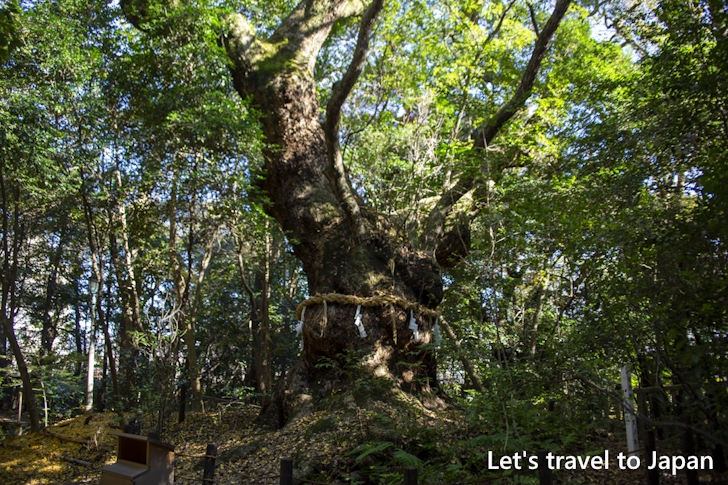
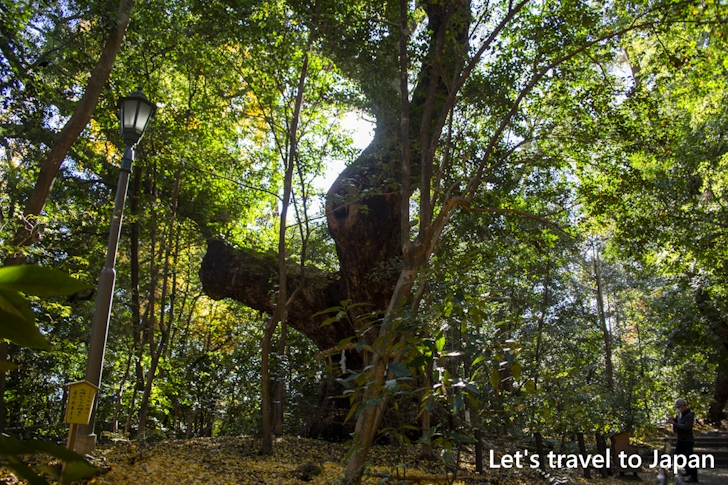
The other is situated to the right of the area near the third torii gate, where the Nobunaga-bei is located.
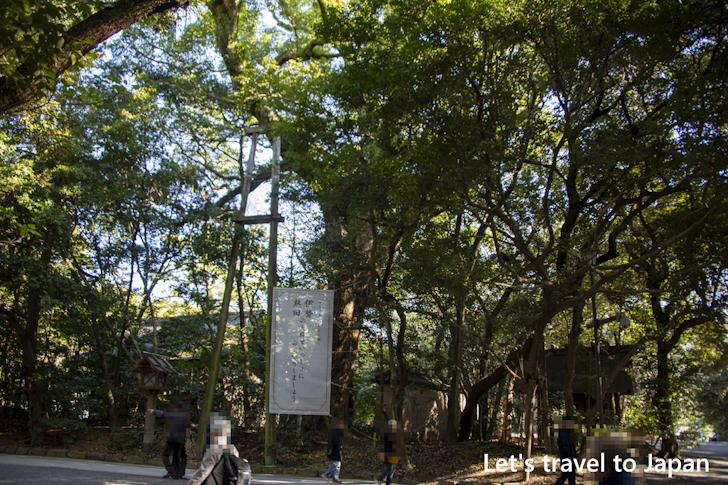
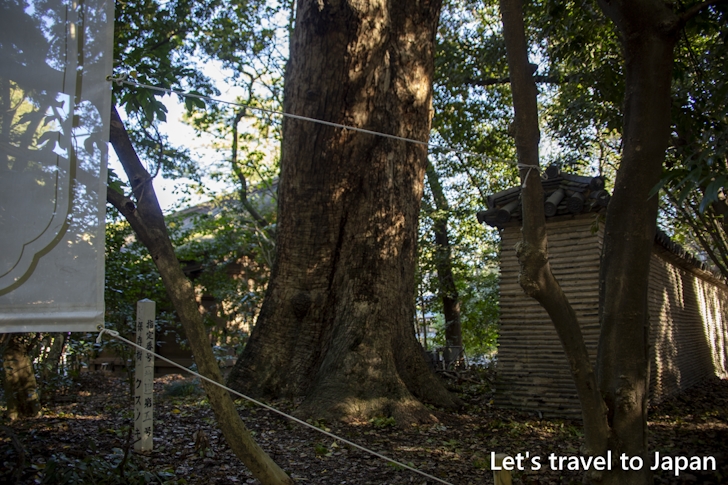
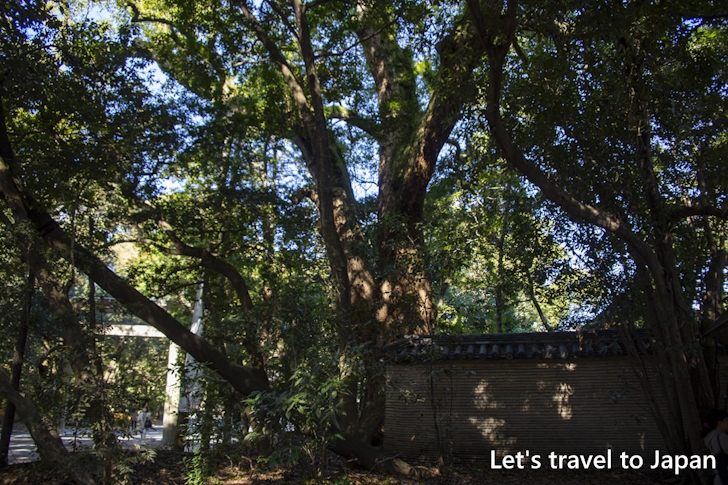
The remaining four are said to be in areas not generally accessible to the public, and their exact locations are unknown.
Nobunaga-bei
The Nobunaga-Bei is a mud wall donated by Oda Nobunaga as a token of gratitude for his great victory, which he had prayed for before the Battle of Okehazama. It is one of Japan's three great mud walls, alongside the Ooneri-Bei of Hyogo's Nishinomiya Shrine and the Taiko-Bei of Kyoto's Sanjusangendo.
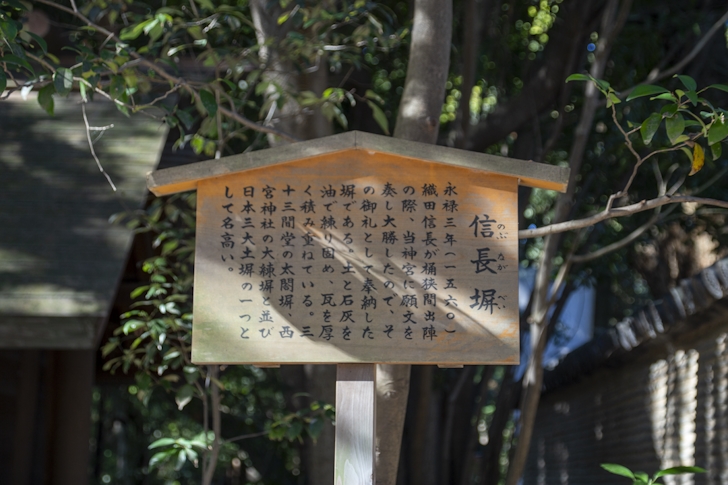
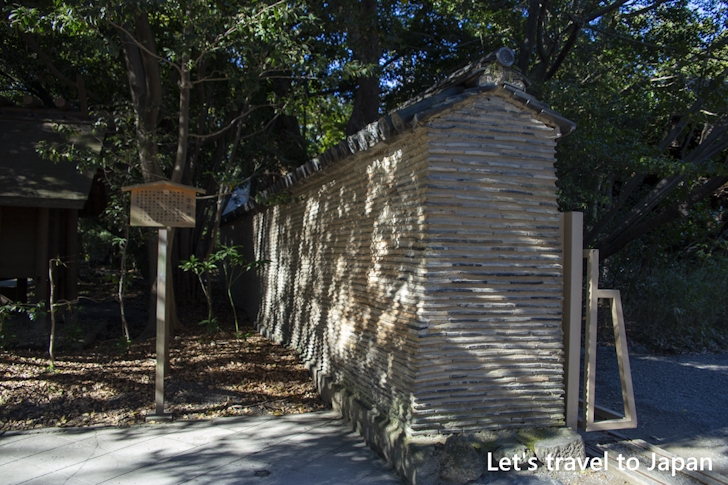
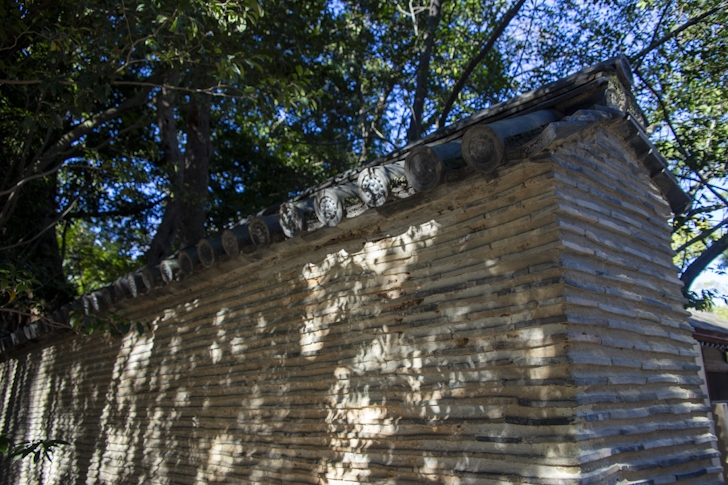
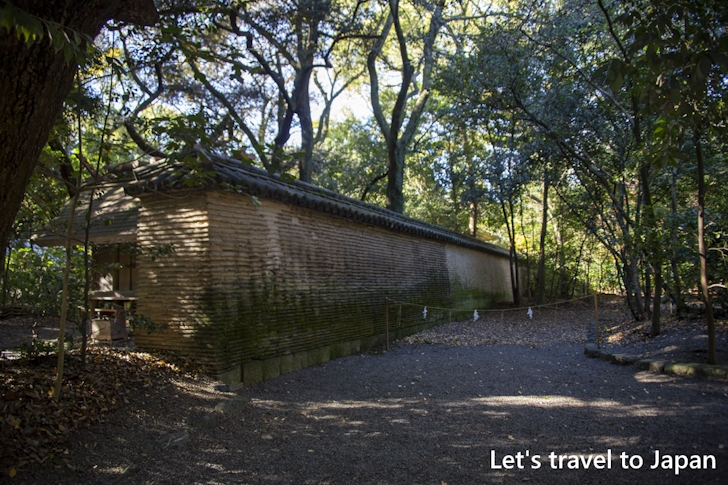
Homotsukan
If you turn right before the second torii gate, you will find the Homotsukan, also known as Bunkaden. Constructed in 1966, it houses about 6,000 items donated by the Imperial Family and many others, with exhibits changing monthly.
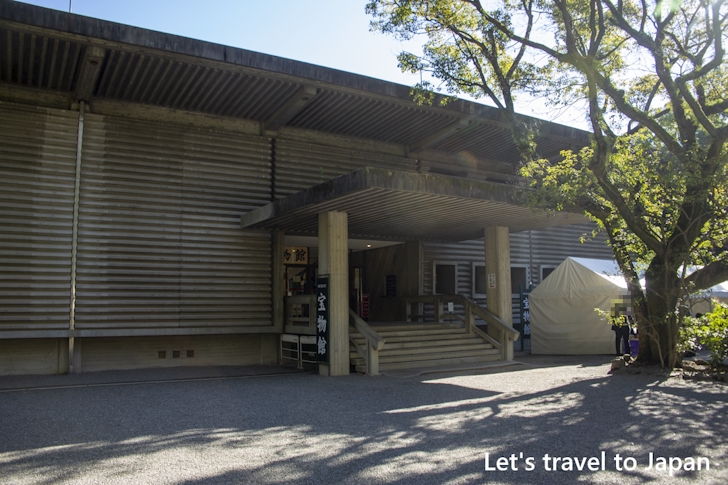
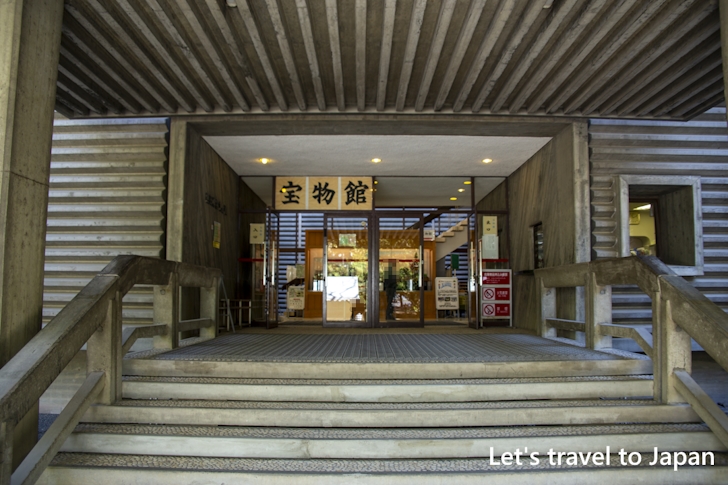
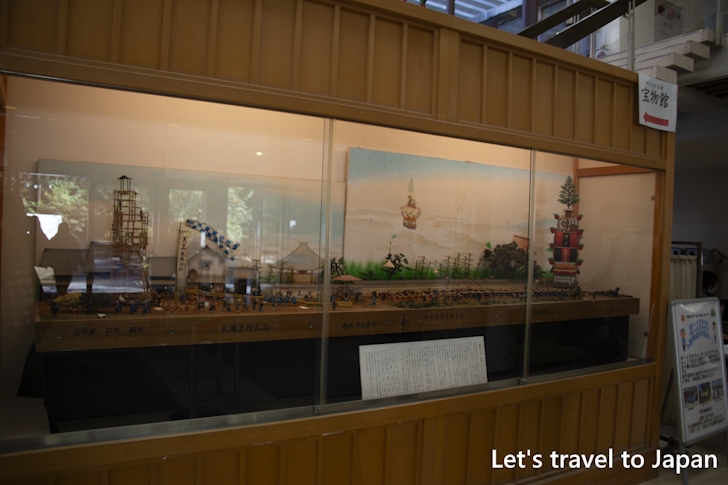
To enter, proceed to the left side. There is an entrance fee for the Homotsukan: 500 yen for adults and 200 yen for elementary and middle school students. (A combined ticket with the Kusanagikan is also available for purchase.)
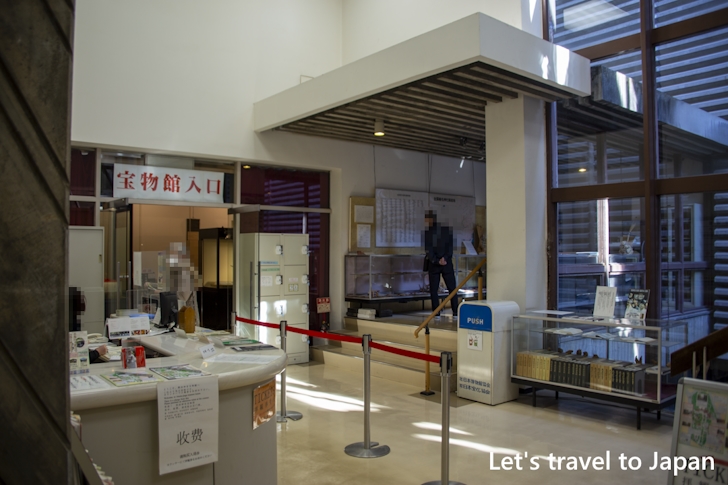
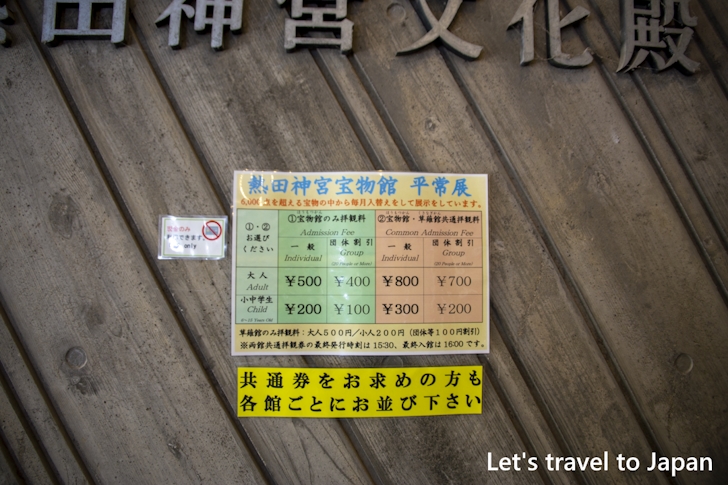
Currently, a diorama is displayed in the showcase in front of the entrance. Previously, a sword known as Sueno-Aoe (also called Taro-Tachi) was exhibited here. This sword is now displayed in the Kusanagikan.
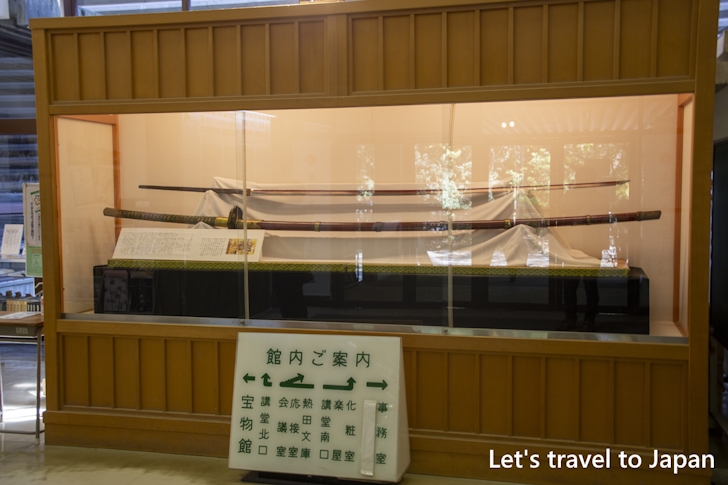
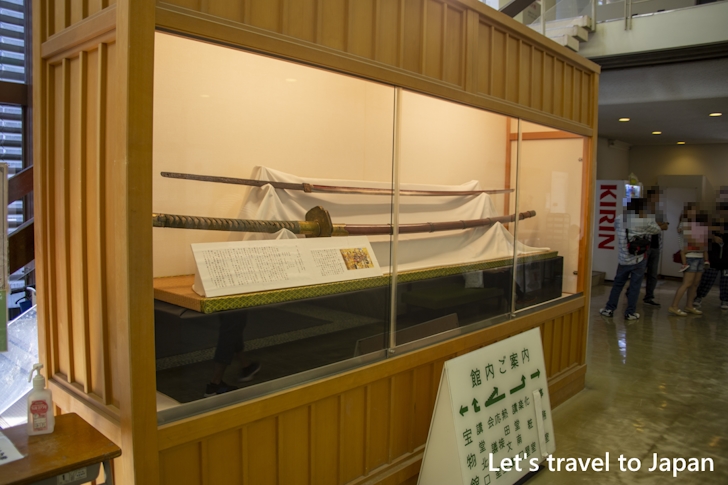
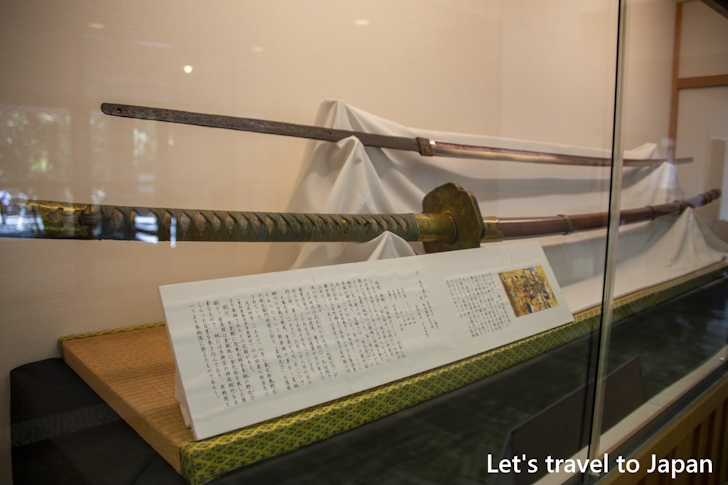
Betsugu Hakkengu
After passing through the main gate and immediately turning left, you will find Betsugu Hakkengu (a separate shrine within Atsuta Shrine). It holds a high status similar to the Hongu, and the deity enshrined here is the same as in the Hongu, Atsuta-no-Ookami. Please note that there is a small staircase in front of the Betsugu, but photography is prohibited from the top of these stairs onward.
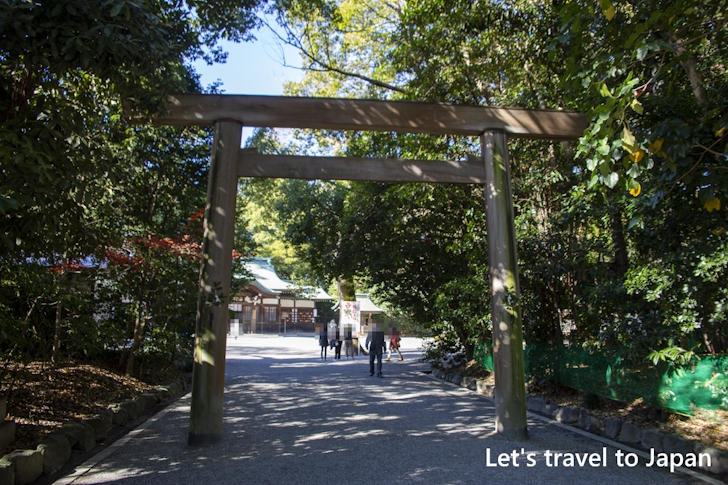
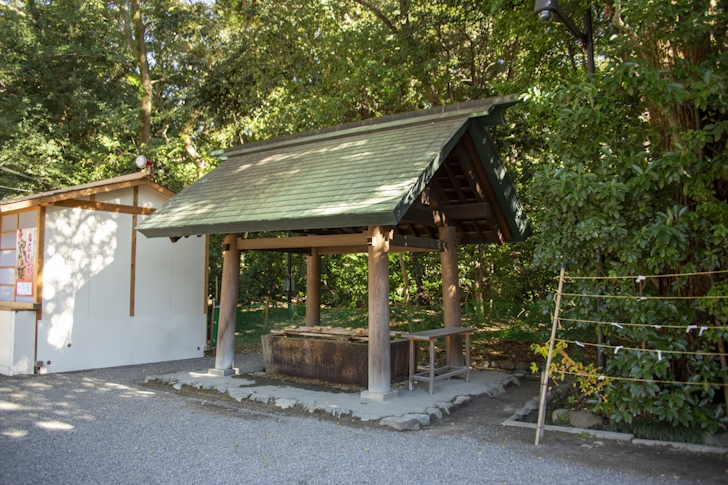
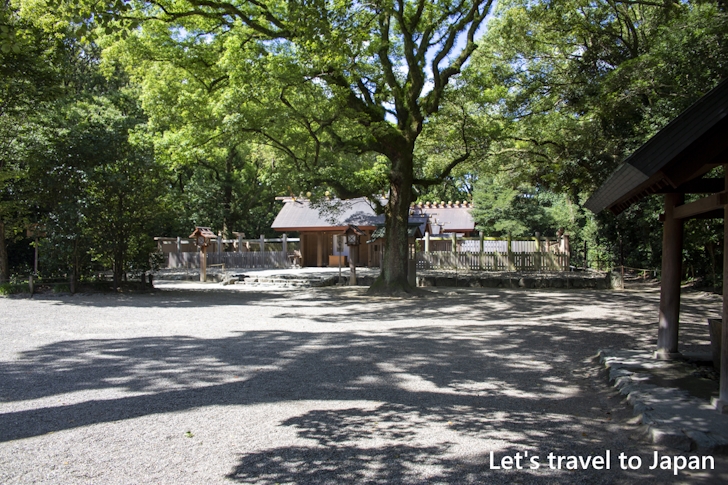
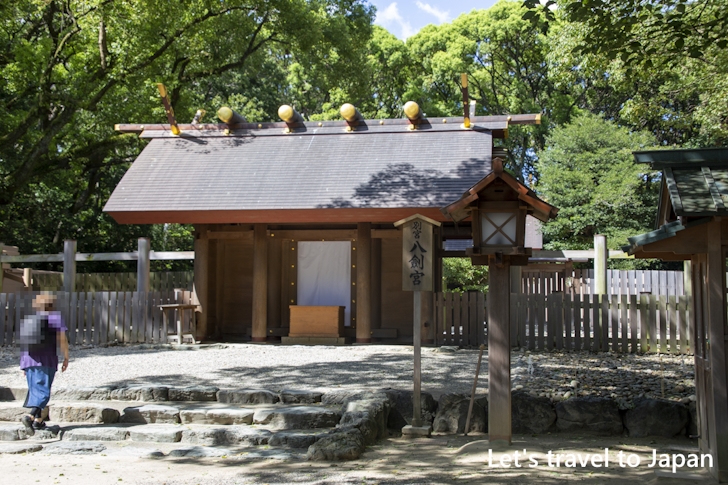
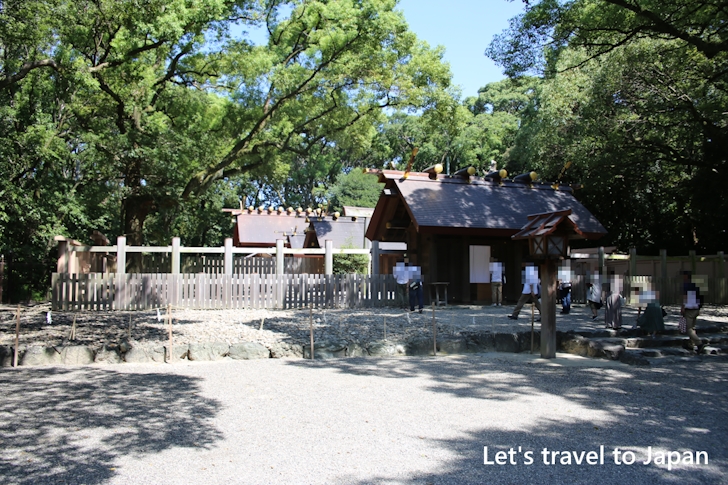
In the precincts of Betsugu Hakkengu, there is a camellia tree known as Taroan Tsubaki, which is said to be about 300 years old.
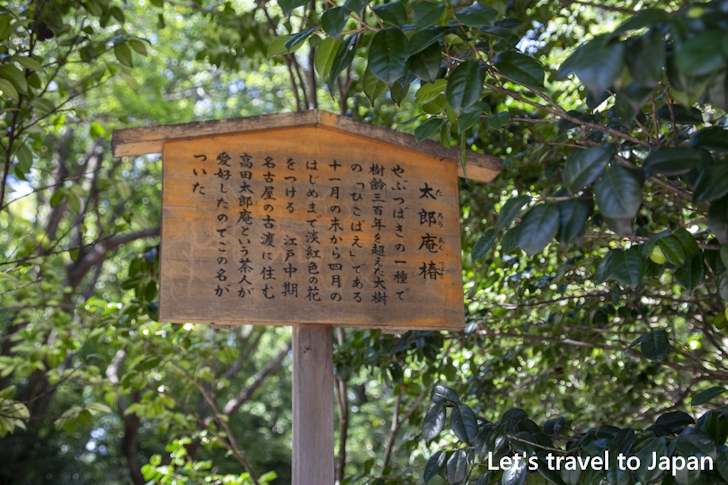
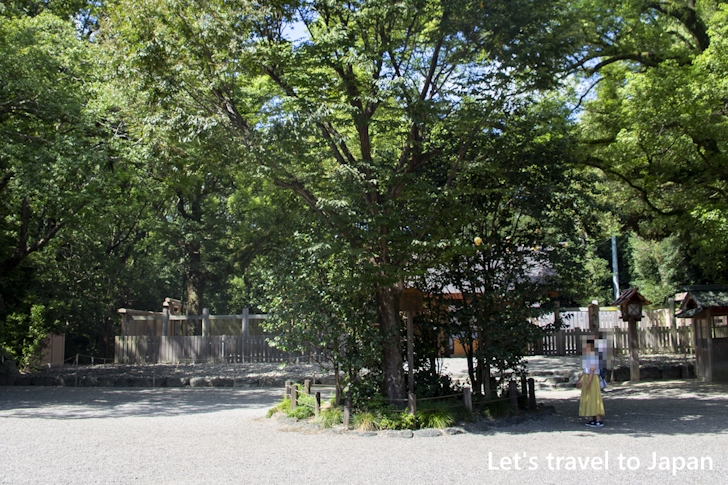
Kamichikama Shrine
Kamichikama Shrine is one of the auxiliary shrines of Atsuta Shrine. Like Betsugu Hakkengu, it is located to the immediate left upon passing through the main gate. The enshrined deity is Otoyonomikoto. Known as the Bodhisattva of Wisdom, the shrine is believed to bestow benefits for naming ceremonies and academic success.
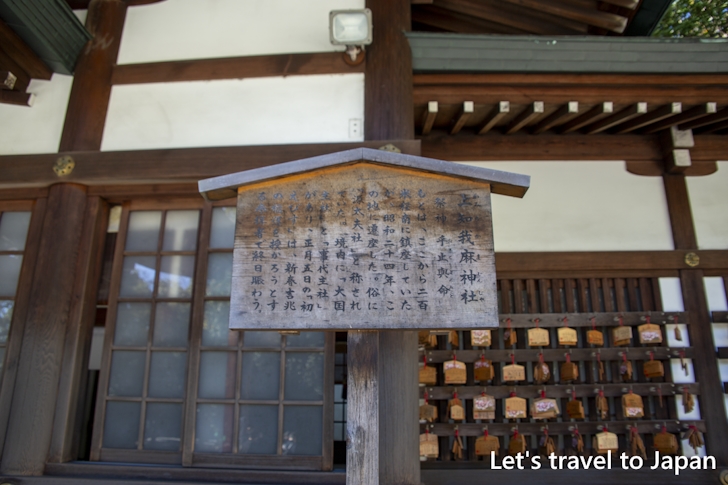
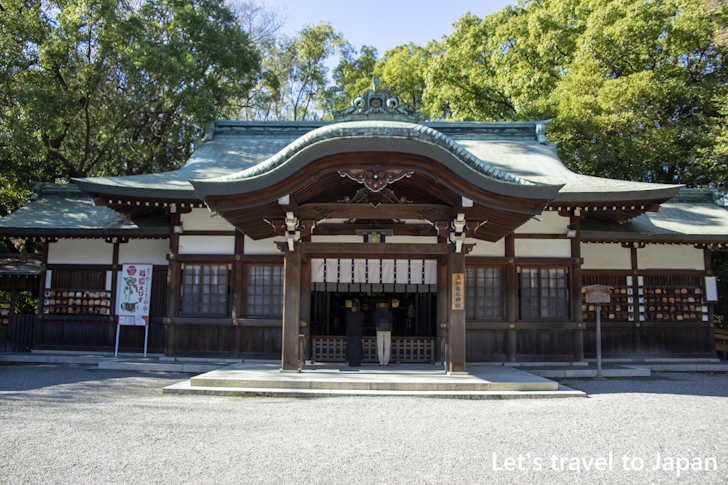
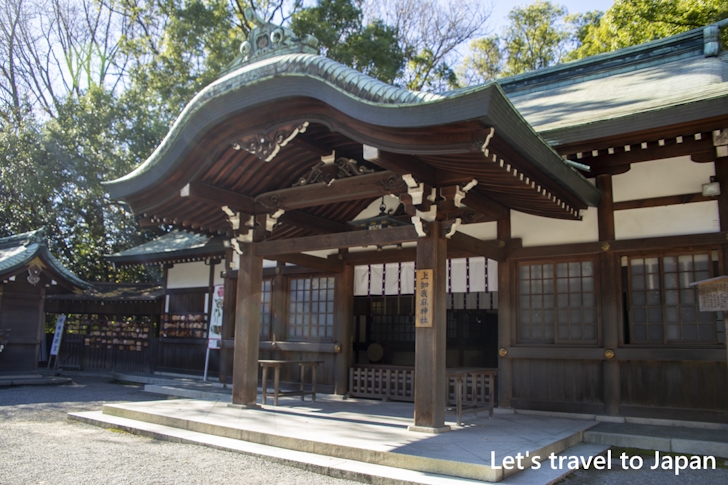
To the right of Kamichikama Shrine is one of the minor shrines, Okuninushi Shrine, where the deity Okuninushi-no-mikoto is enshrined. To the left is another minor shrine, Kotoshironushi Shrine, with the deity Kotoshironushi-no-mikoto. Okuninushi-no-mikoto, also known as Daikokuten, is associated with benefits like business prosperity and family safety. Kotoshironushi Shrine, related to Ebisu, also bestows benefits for business prosperity and family safety.
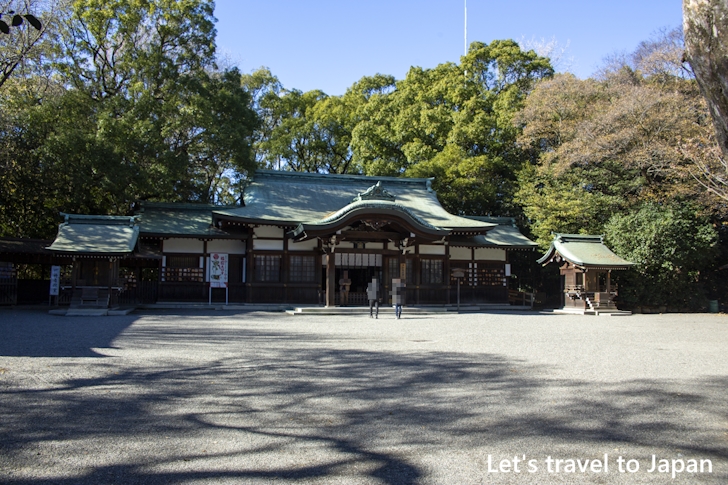
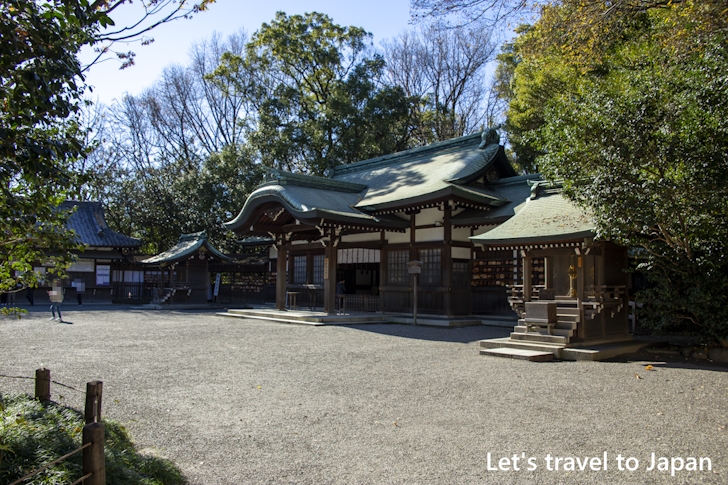
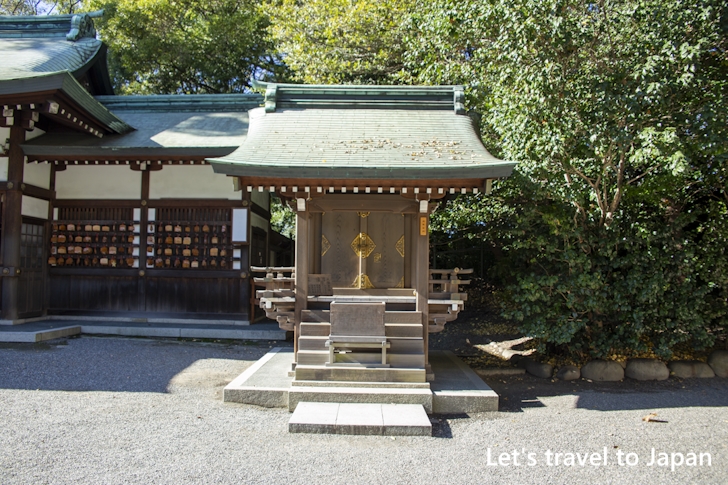
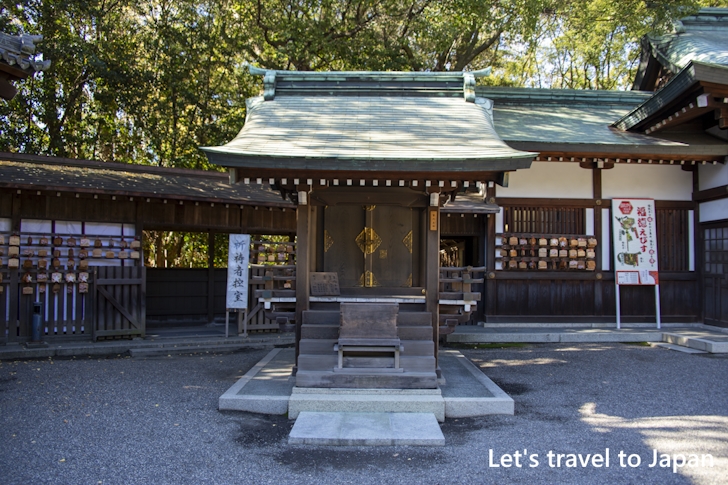
Every year on January 5th, the Hatsu-Ebisu festival for Okuninushi Shrine and Kotoshironushi Shrine is celebrated.
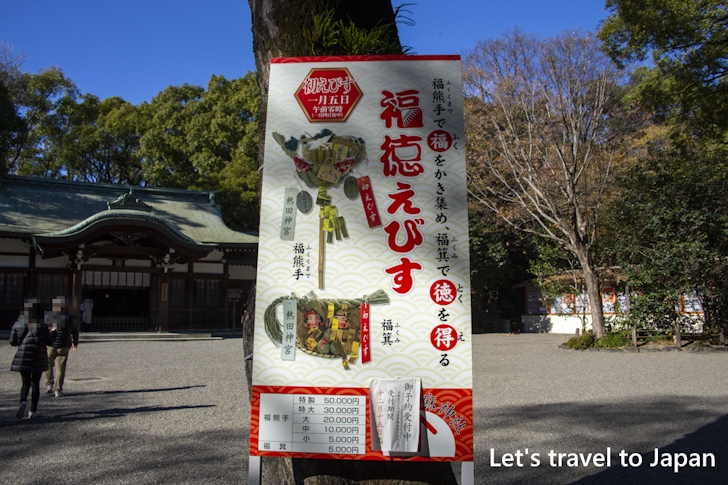
There is an offering hall to the left of Kamichikama Shrine. Here, you can receive talismans and amulets, draw fortune slips, and also receive Goshuin (Goshinin) for Kamichikama Shrine and Betsugu Hakkengu.
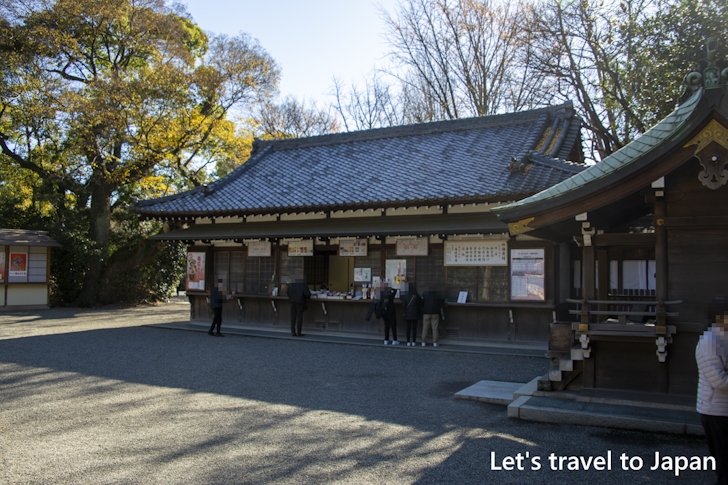
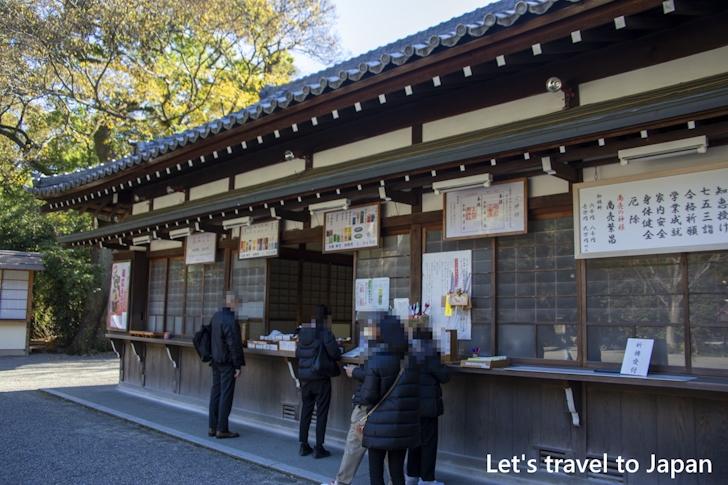
Shimochikama Shrine
Shimochikama Shrine is one of the auxiliary shrines of Atsuta Shrine. After exiting through the West Gate and turning right, it is located just before the Subway Atsuta Shrine West Station.
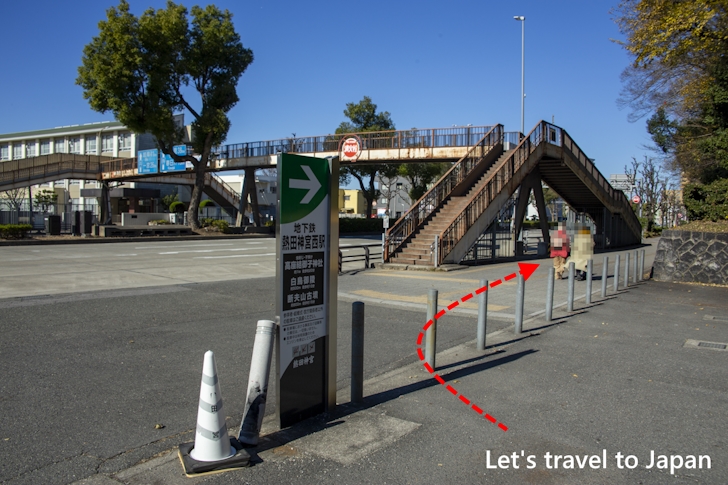
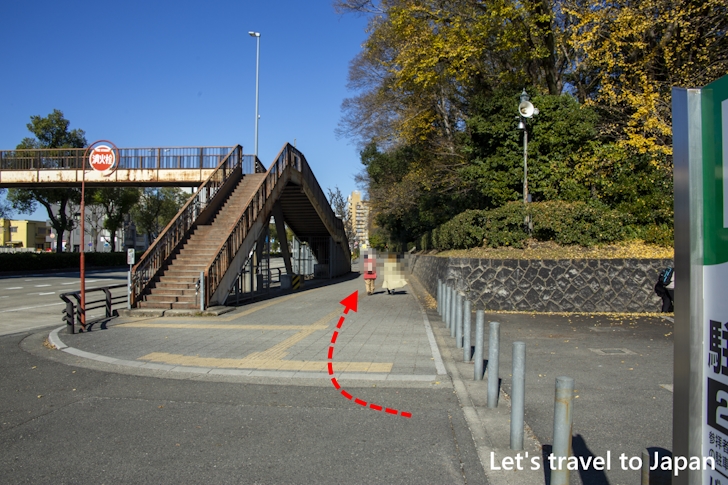
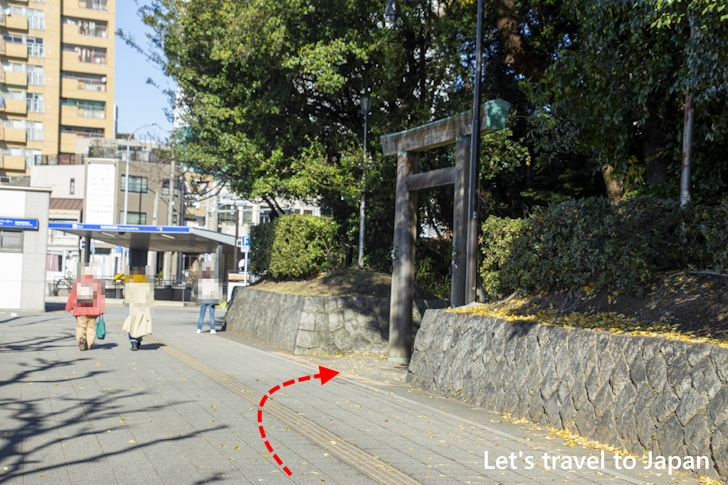
The enshrined deity at Shimochikama Shrine is Mashikitobe-no-mikoto. This deity has long been revered as a protector for safe travel.
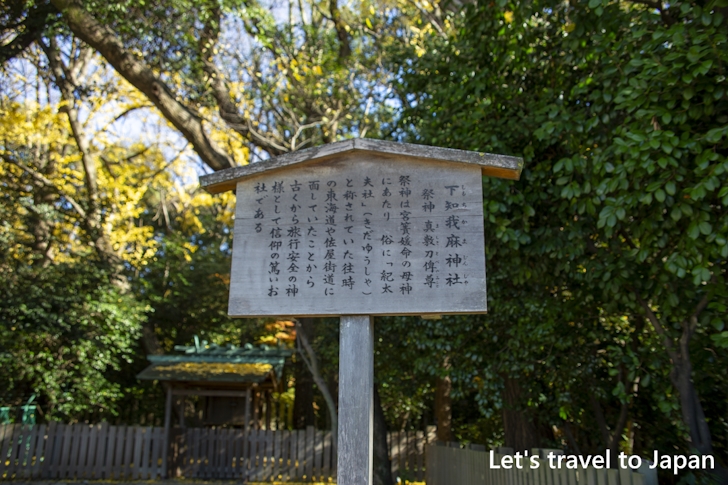
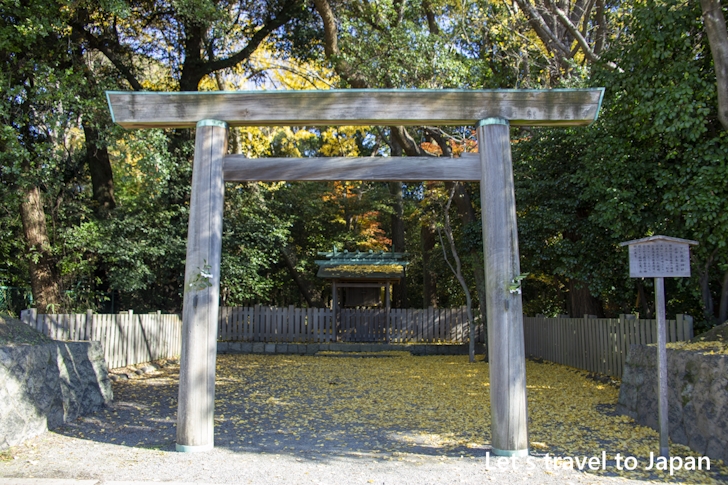
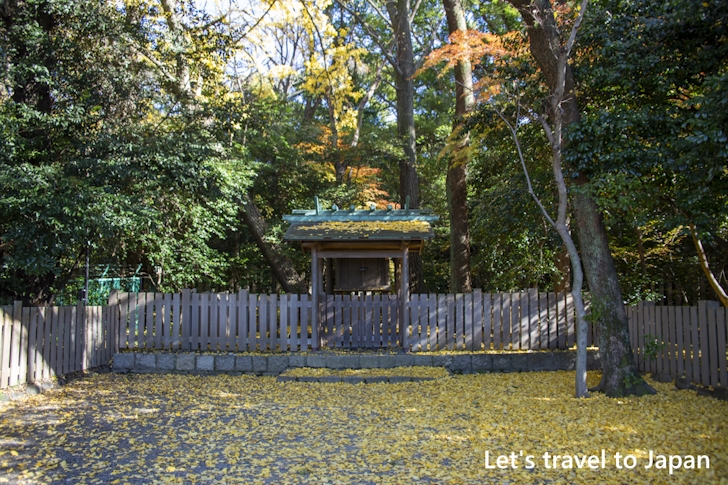
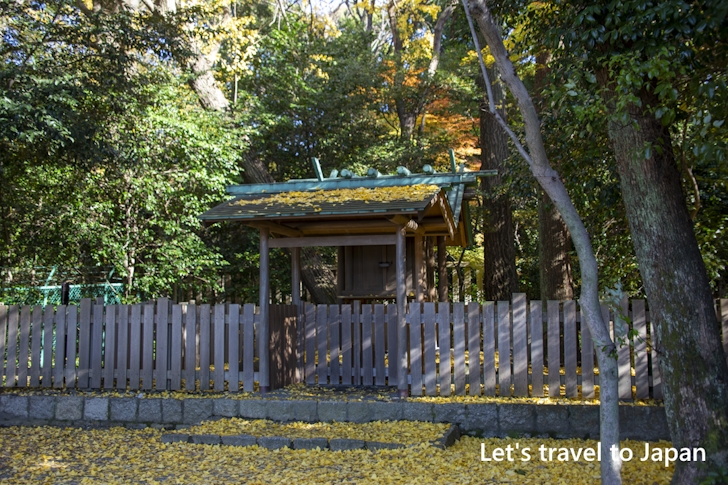
Seisetsu-mon
Seisetsu-mon is said to be the north gate of the Hongu. This gate is never opened and is also known as Akazu-no-mon. The reason for the gate being permanently closed dates back to 668 AD, when the Kusanagi sword was stolen and taken through Seisetsu-mon. The gate was sealed to ensure that the divine sword would never be taken out again.
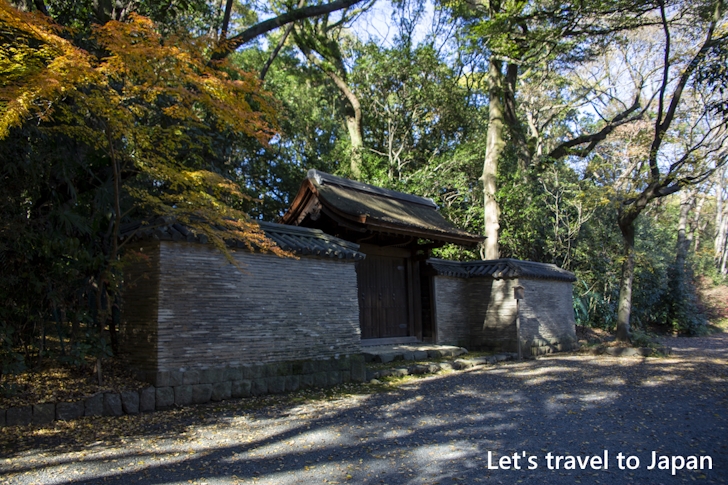
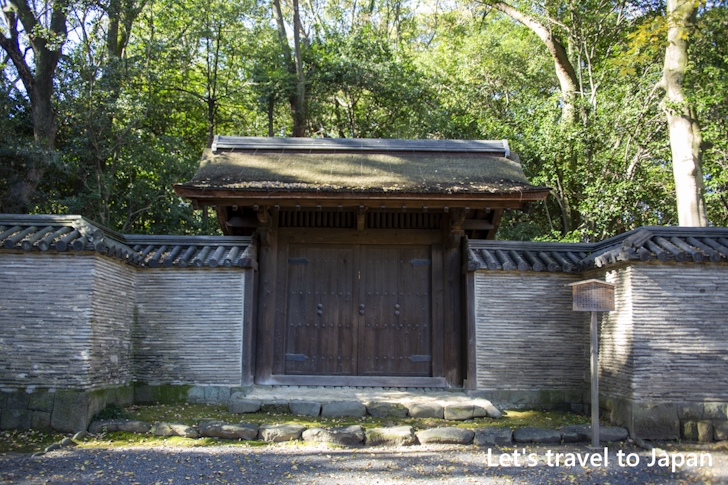
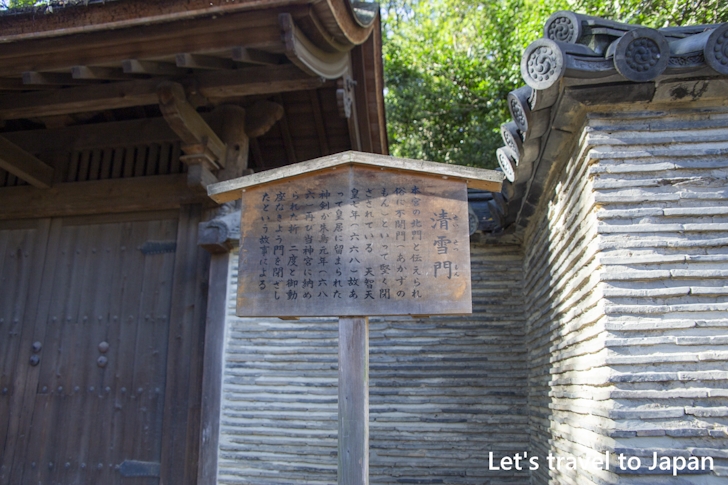
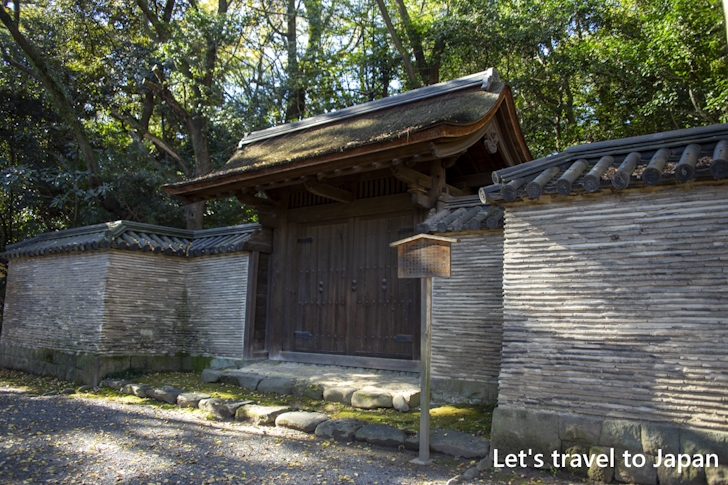
Hisakimiko Shrine, Hikowakamiko Shrine, Minamishingu Shrine, Mita Shrine, Ryu Shrine
I'll introduce the other auxiliary shrines within the precincts of Atsuta Shrine.
Hisakimiko Shrine
The enshrined deity of Hisakimiko Shrine is Amanooshihomimi-no-mikoto.
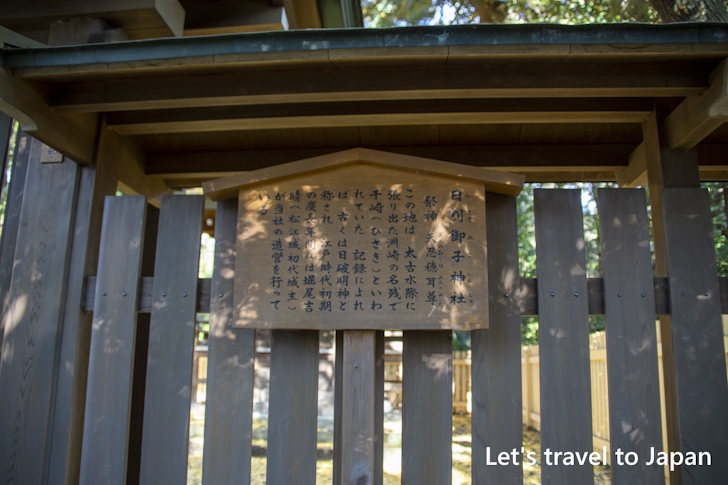
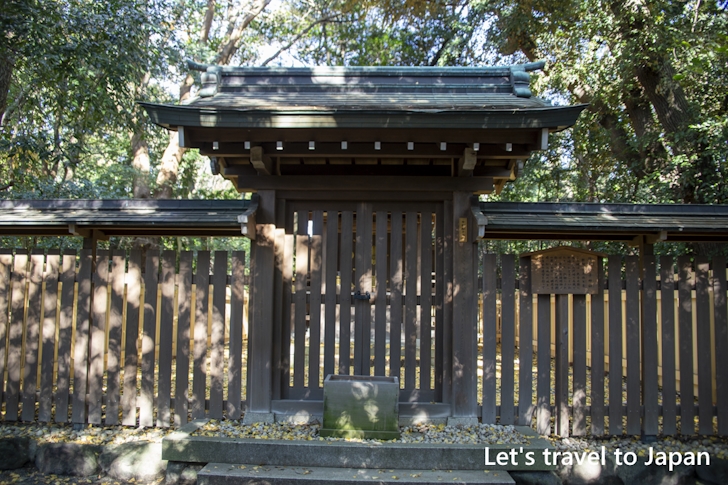
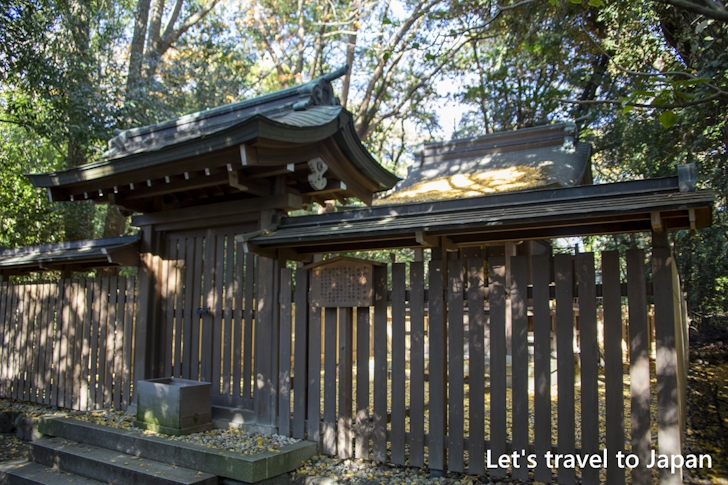
Hikowakamiko Shrine
The enshrined deity of Hikowakamiko Shrine is Amanohohakari-no-mikoto.
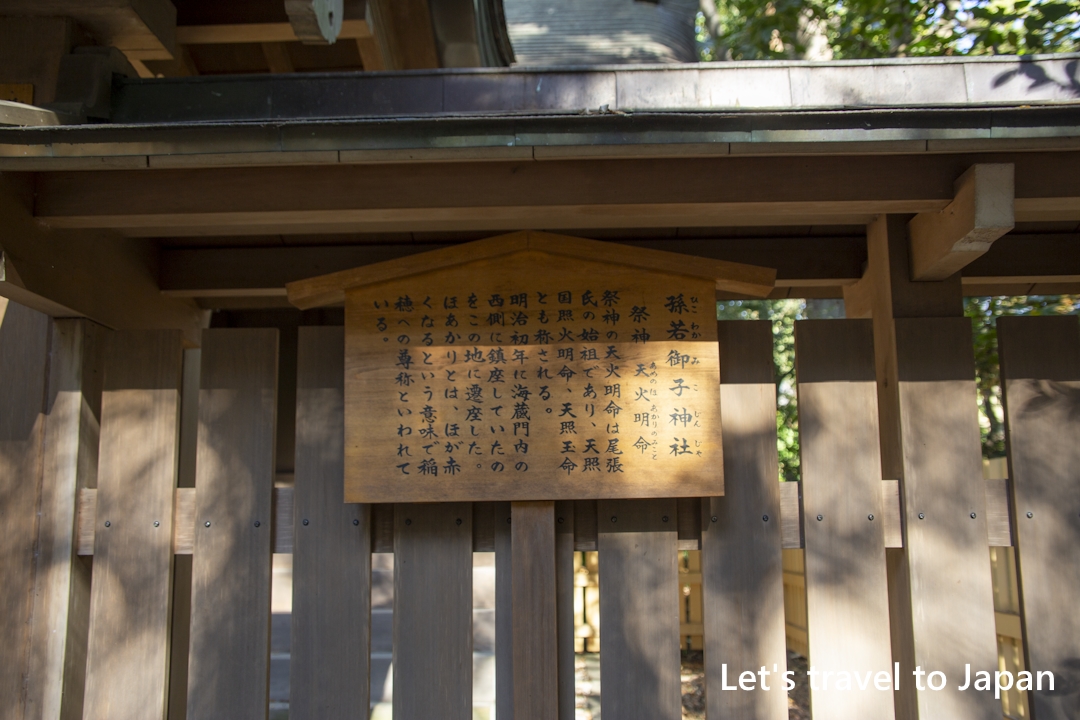
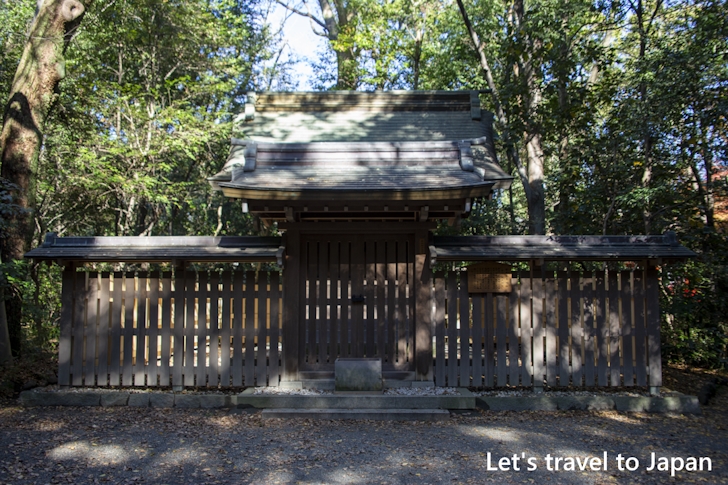
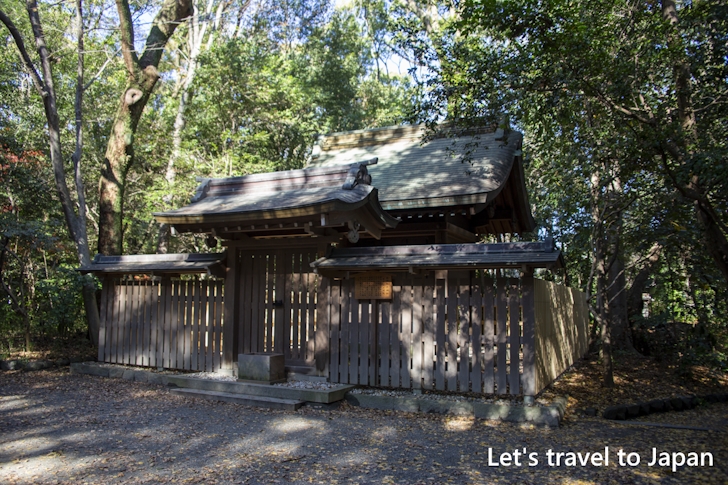
Minamishingu Shrine
The enshrined deity of Minamishingu Shrine is Susanoo-no-mikoto. This shrine is unique for its vermillion paint.
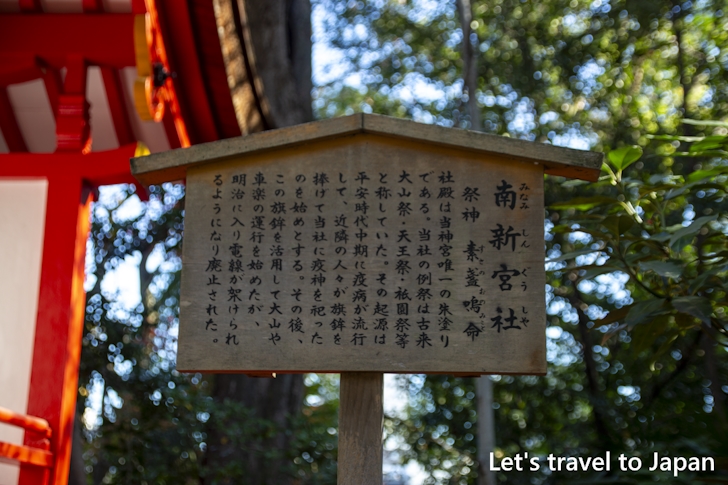
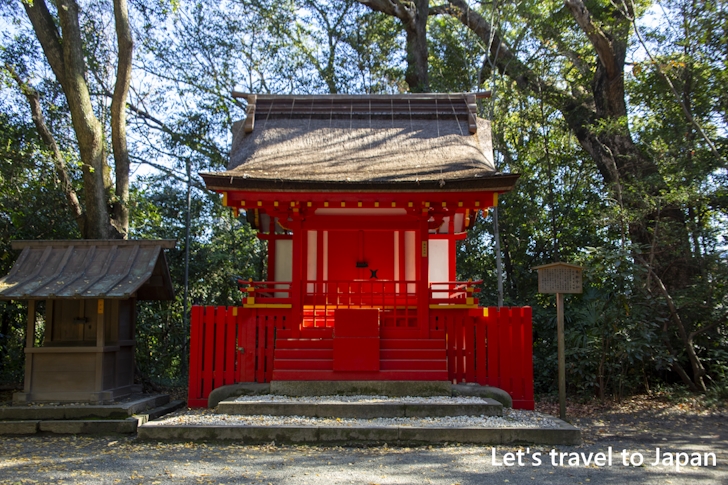
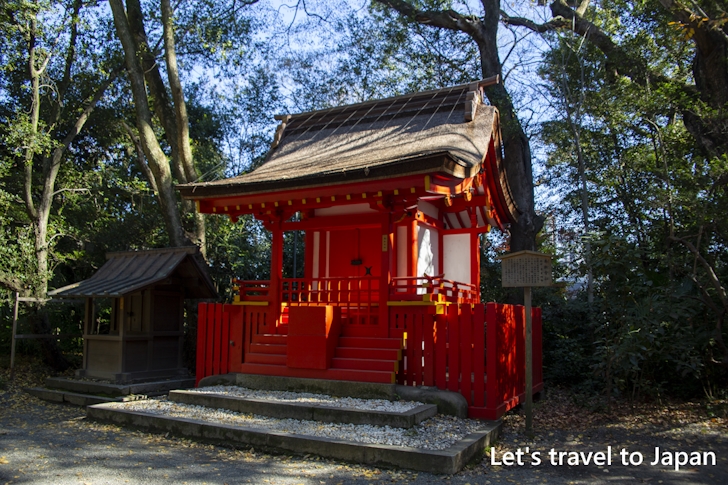
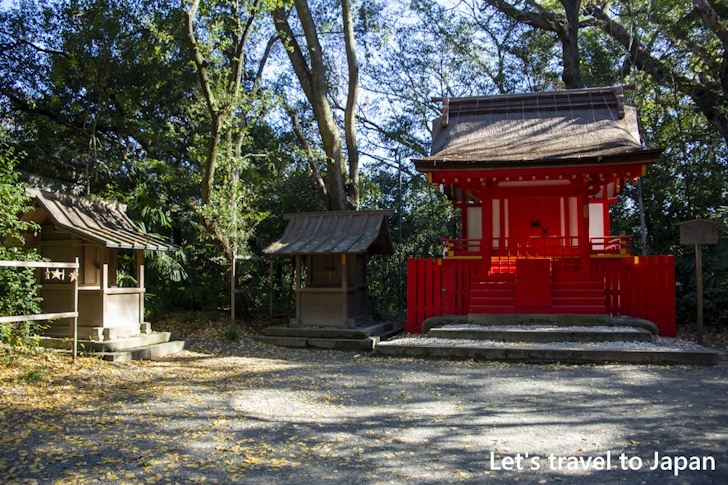
Mita Shrine
The enshrined deity of Mita Shrine is Ootoshi-no-kami.
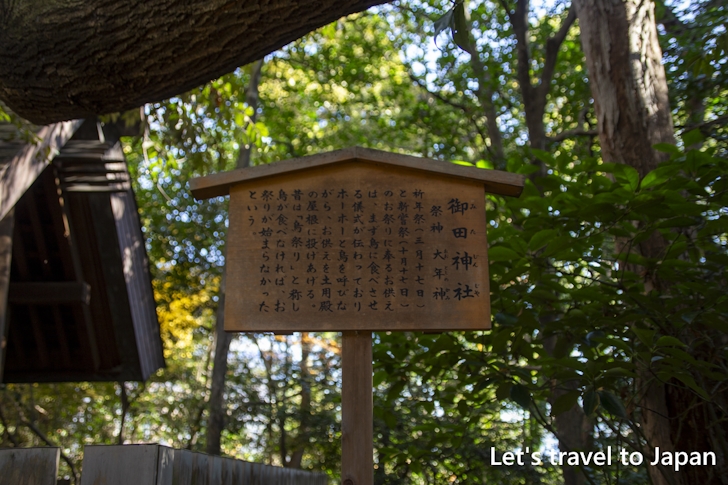
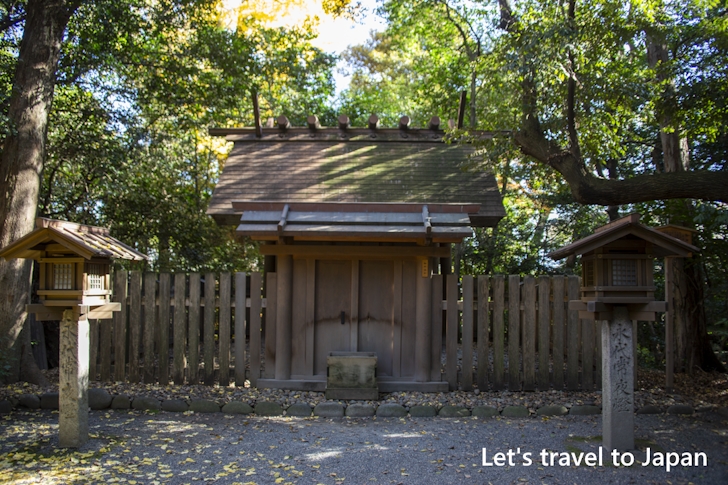
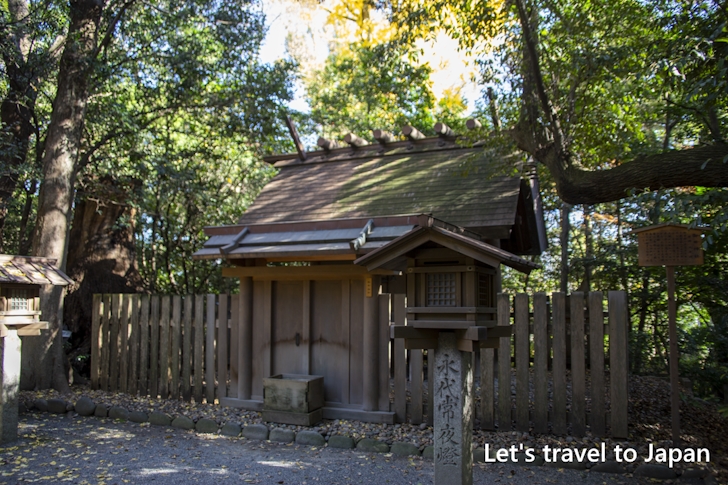
Ryu Shrine
The enshrined deities of Ryu Shrine are Kibitakehiko-no-mikoto and Ootomonotakehi-no-mikoto.
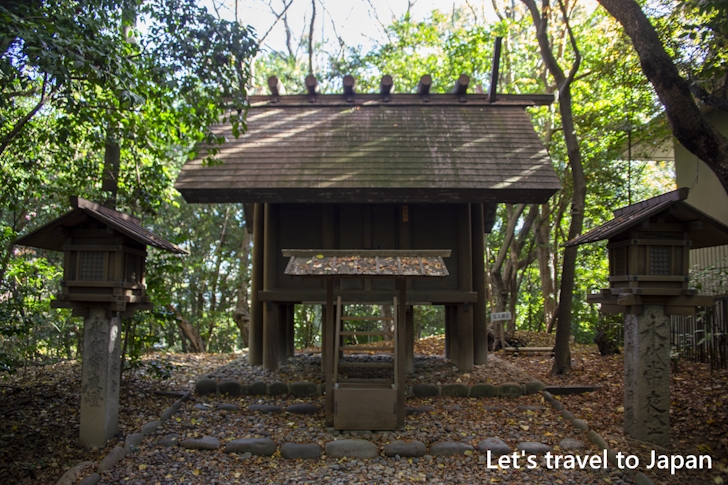
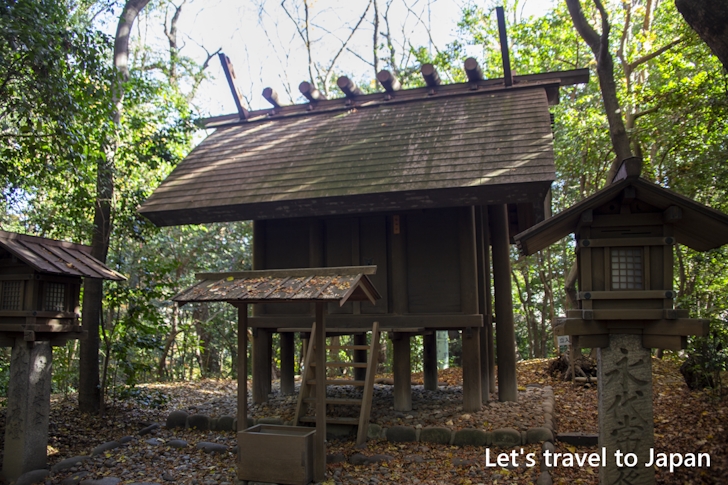
Kusunomimae Shrine, Sugawara Shrine
I'll introduce the other main subsidiary shrines within the precincts of Atsuta Shrine.
Kusunomimae Shrine
The enshrined deities of Kusunomimae Shrine are Izanagi-no-Mikoto and Izanami-no-Mikoto. Commonly known as the "Koyasu-no-kami" or "Okusu-sama," it is revered as the deity of safe childbirth.
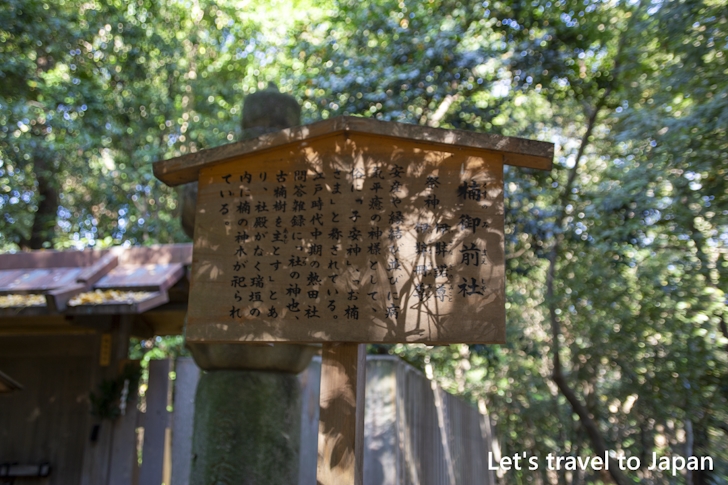
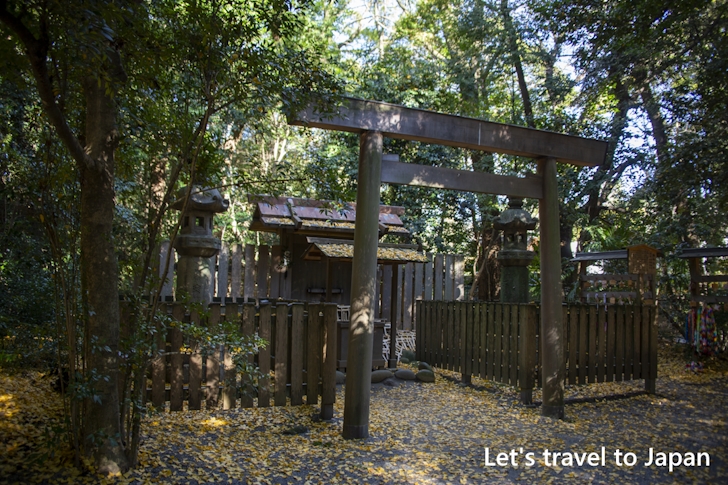
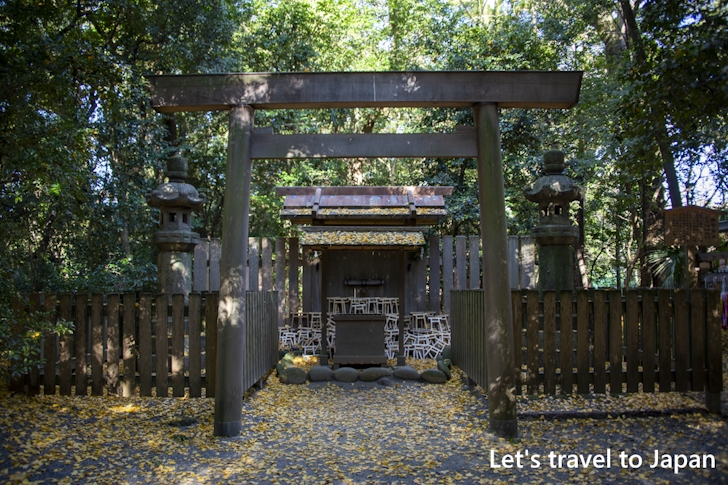
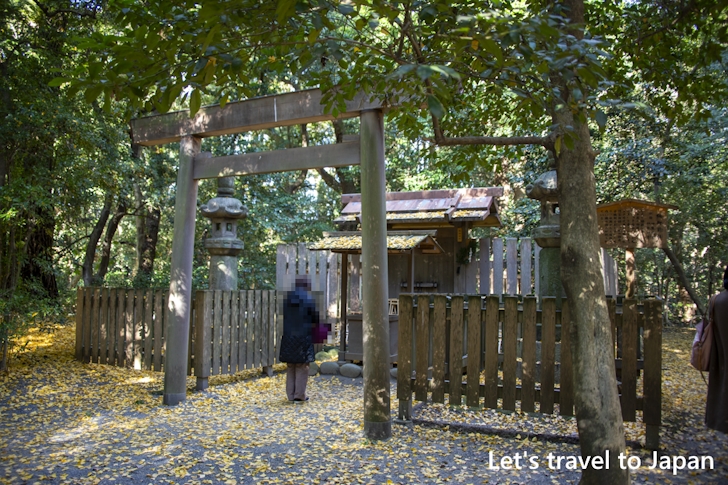
Sugawara Shrine
The enshrined deity of Sugawara Shrine is Sugawara no Michizane. Revered as the deity of learning and arts, the shrine's front is adorned with numerous votive tablets for academic success, exam success, and wish fulfillment.
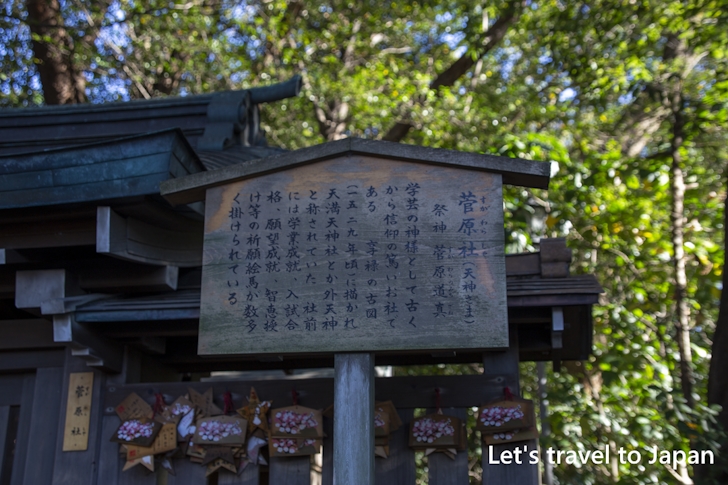
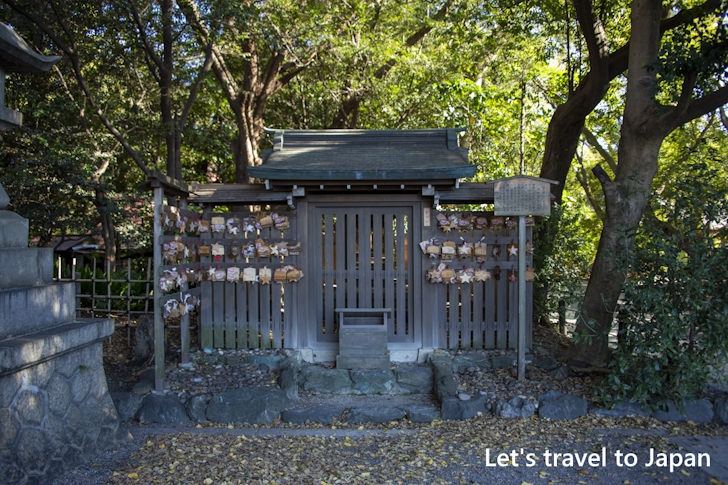
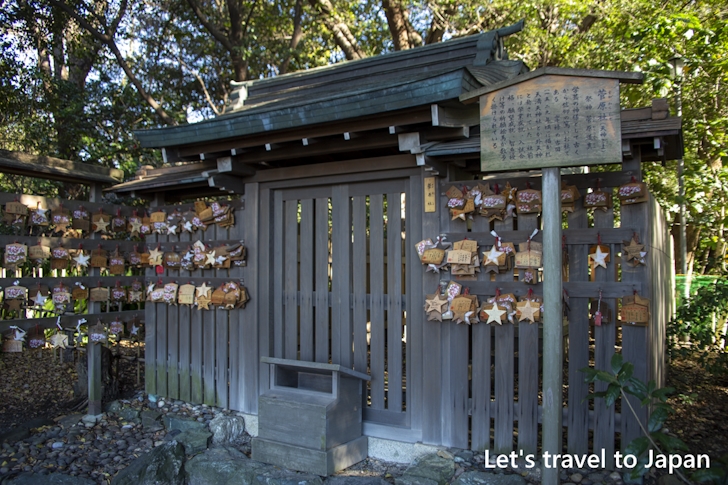
Tsurugi no Houko Kusanagi-kan
In the Tsurugi no Houko Kusanagi-kan, a portion of the swords that have been dedicated to Atsuta Shrine over time are on display. The swords exhibited are rotated monthly. Additionally, there is a section where you can experience holding actual wakizashiand katana, as well as replicas of magara tachi made to their actual length and weight. (Photography is prohibited in the exhibition rooms inside the hall, but you can take photos in the experience corner).
The Kusanagi-kan charges an admission fee of 500 yen for adults and 200 yen for elementary and middle school students. (A combined ticket for the Kusanagi-kan and the Treasure Hall is also available for purchase.)
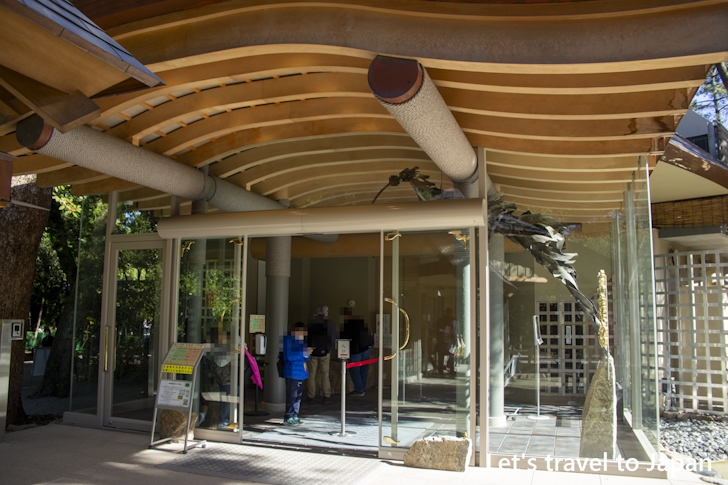
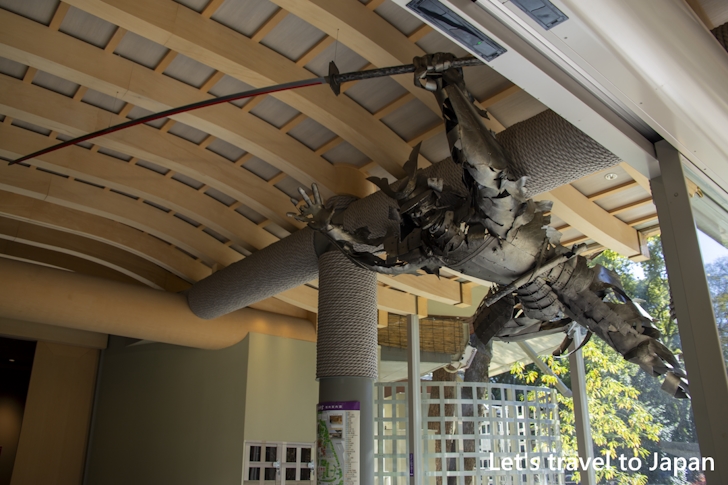
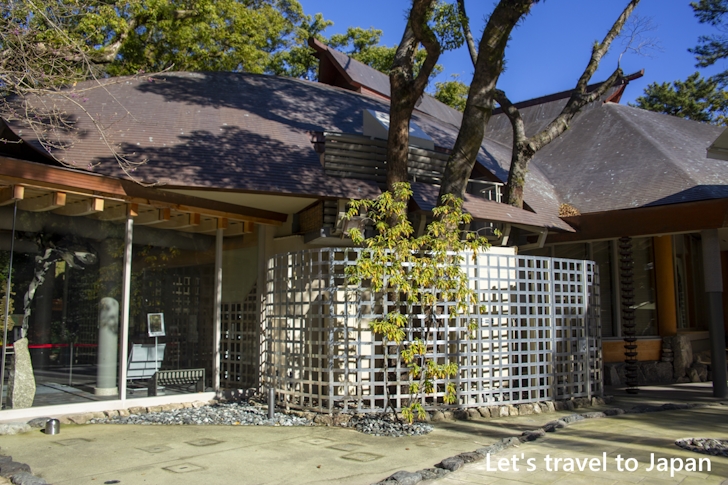
In the experience corner, you can actually hold the wakizashi and katana.
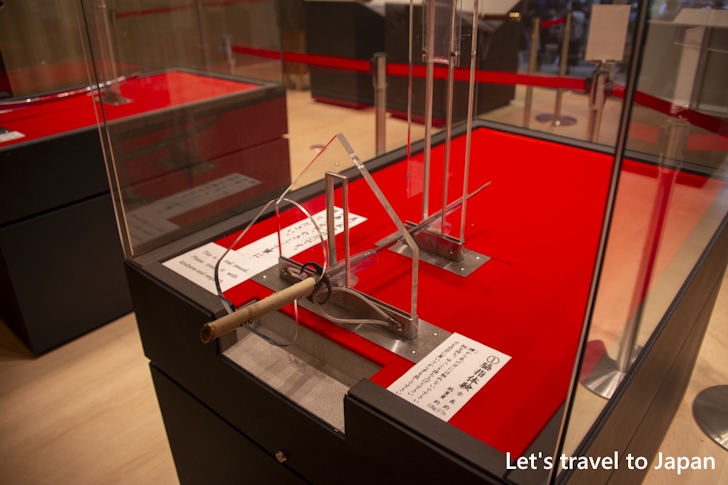
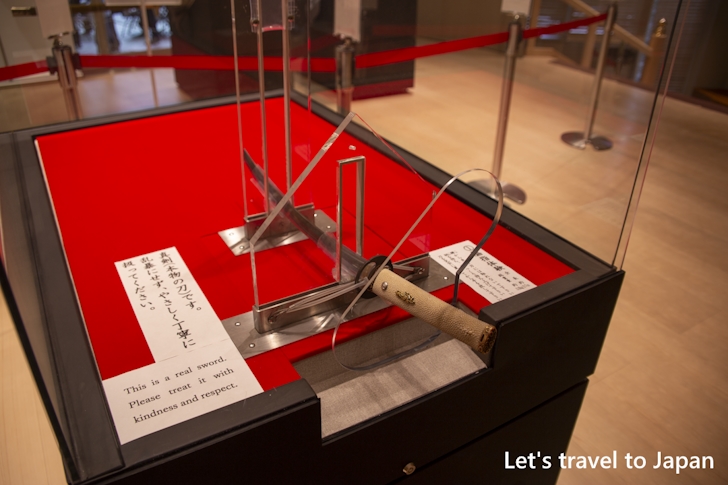
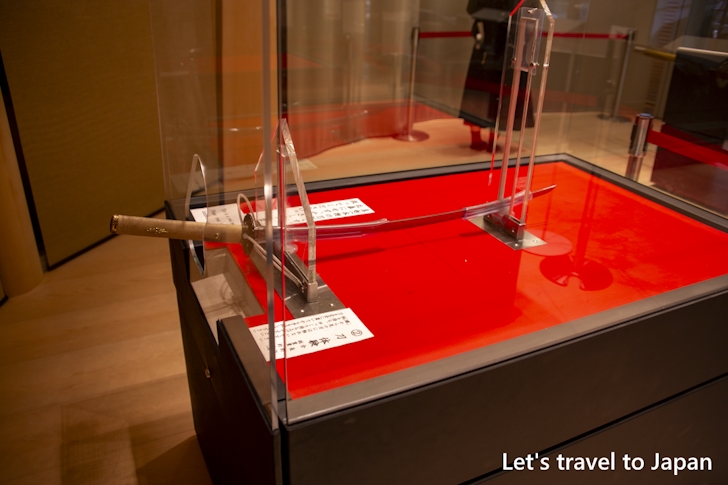
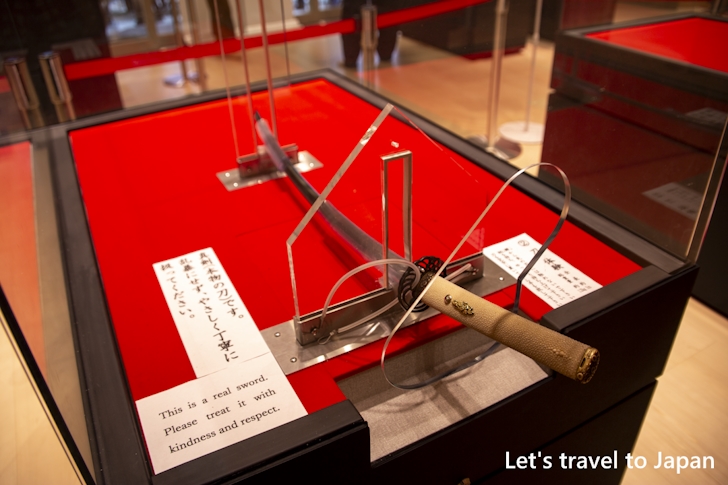
Although they are replicas, you can hold the Chiyotsuru Kuniyasu (Jiro Tachi) and Sue no Aoe (Taro Tachi).
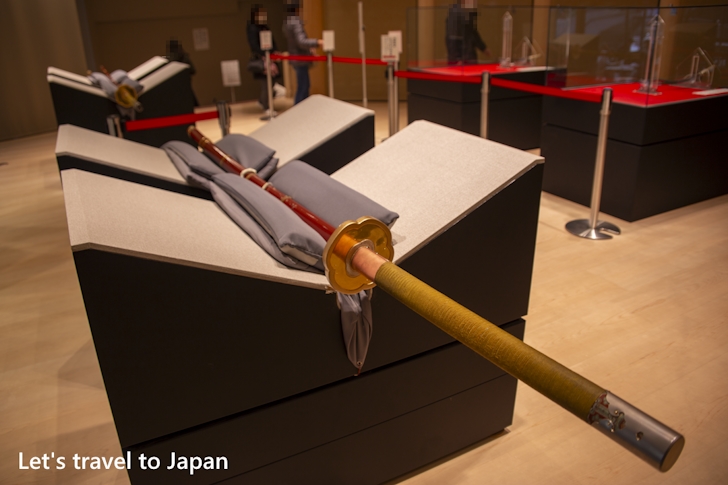
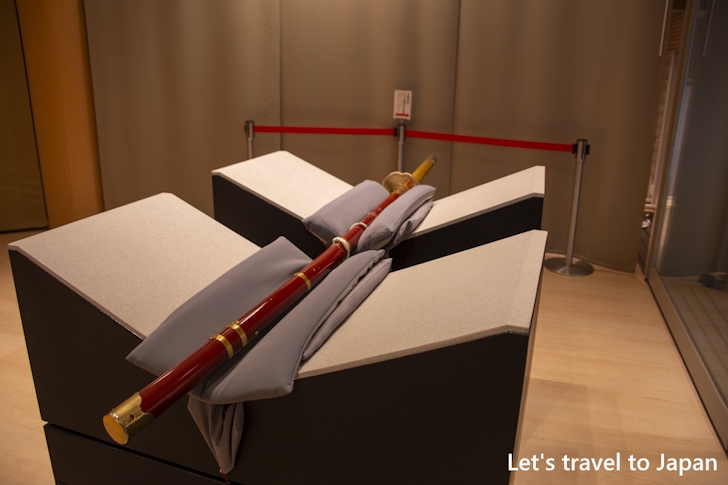
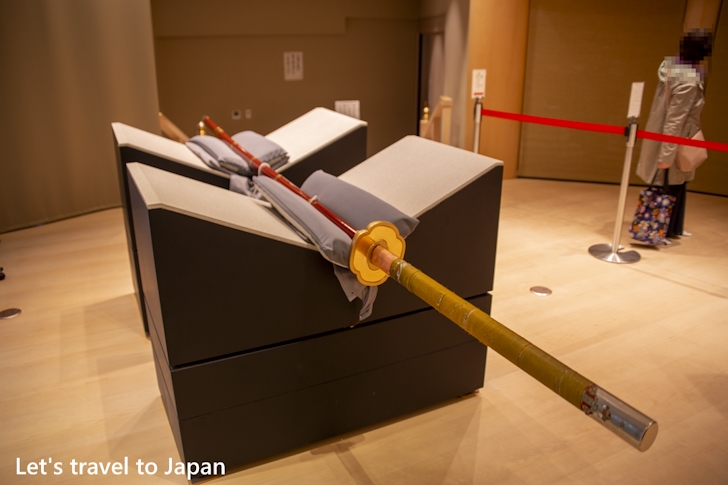
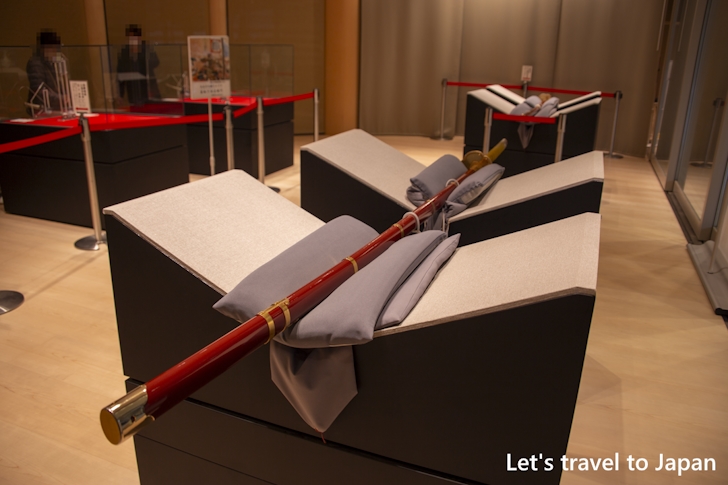
Kusanagi Hiroba
In 2021, the Kusanagi Hiroba opened as a rest area near the Minami Shin-ike. Reflecting the port town atmosphere of Aichi Prefecture's Nagoya City, Atsuta Ward, which was part of the historic Tokaido Gojyusantugi, the plaza features a sailboat reminiscent of Miyajuku.
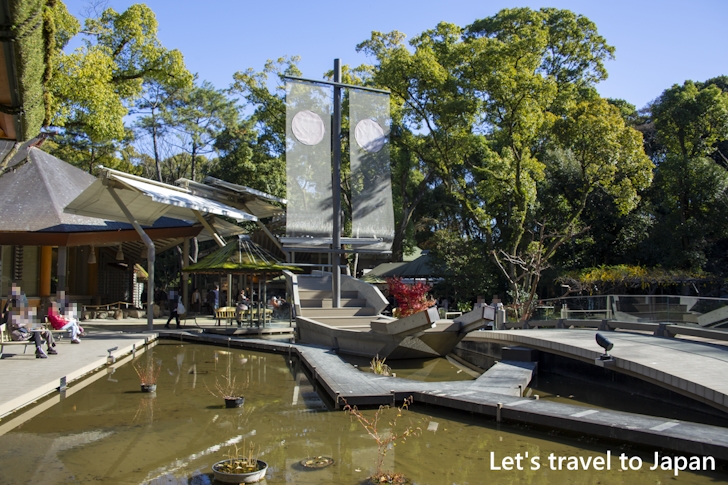
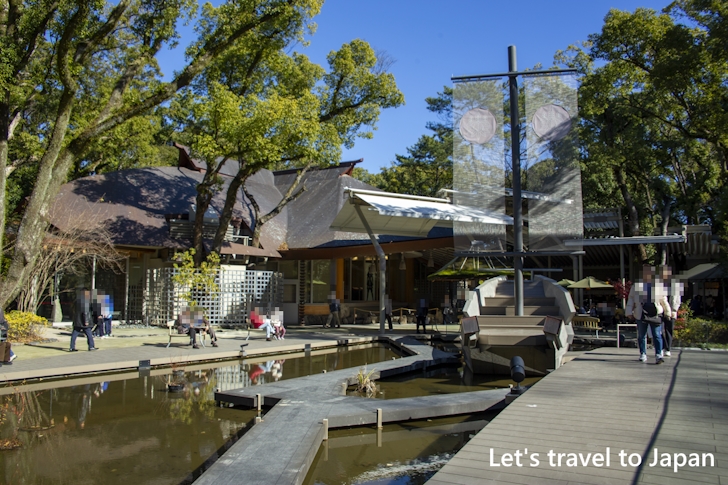
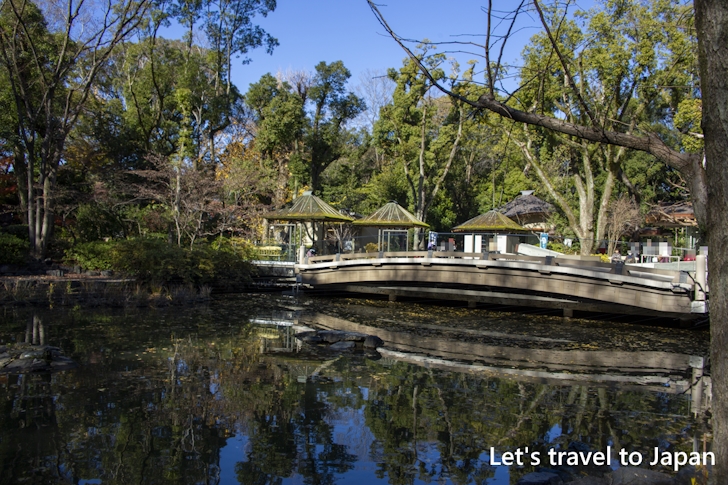
Kusanagi Hiroba also has a shop selling souvenirs inspired by the swords owned by Atsuta Shrine and local Nagoya sweets.
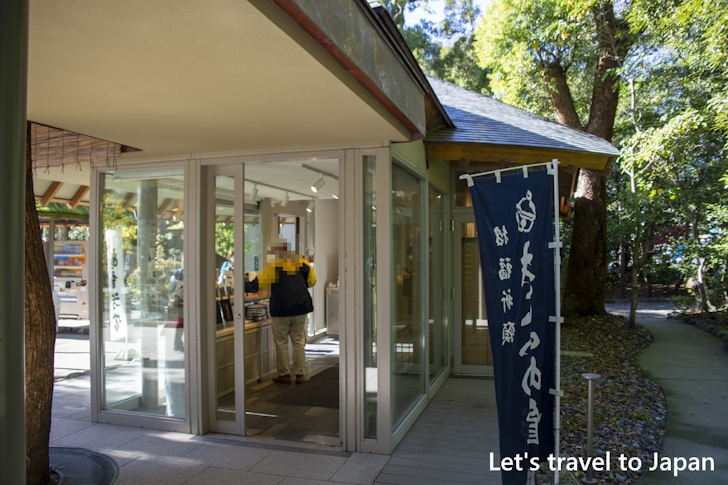
Nijuugojo-bashi
Near Kusanagi Hiroba is the Nijuugojo-bashi, Nagoya's oldest stone bridge, now accessible for crossing.
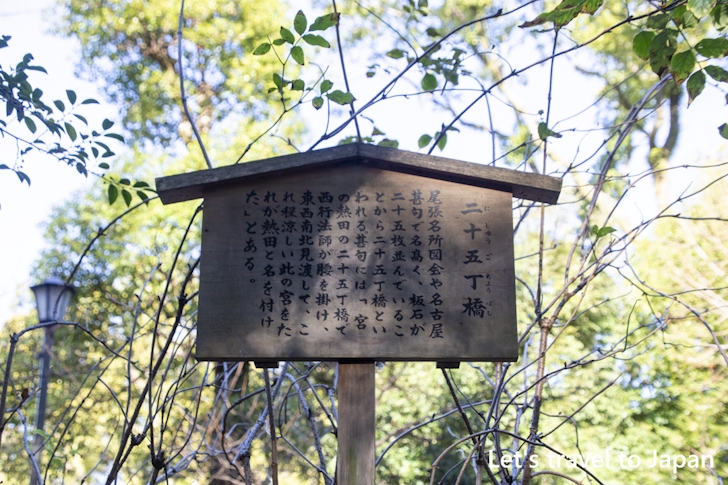
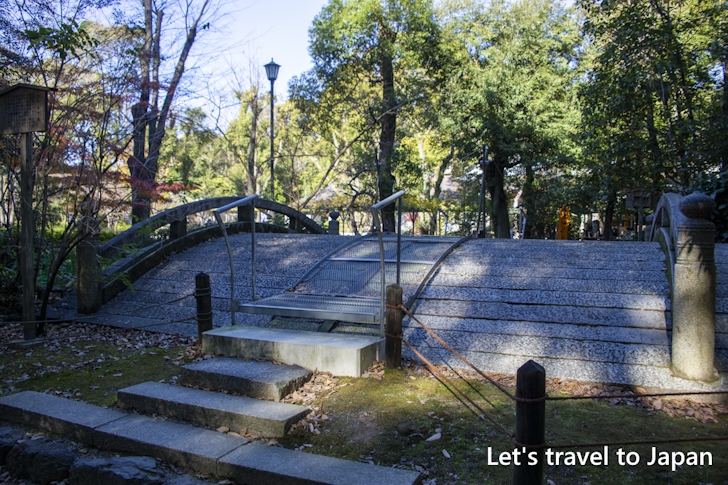
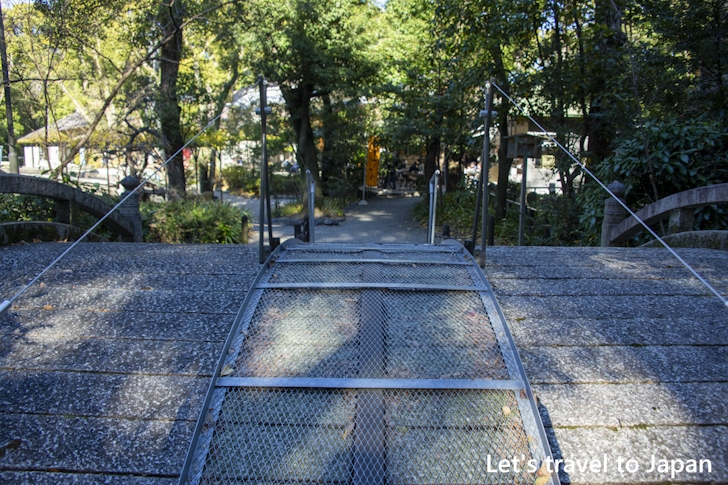
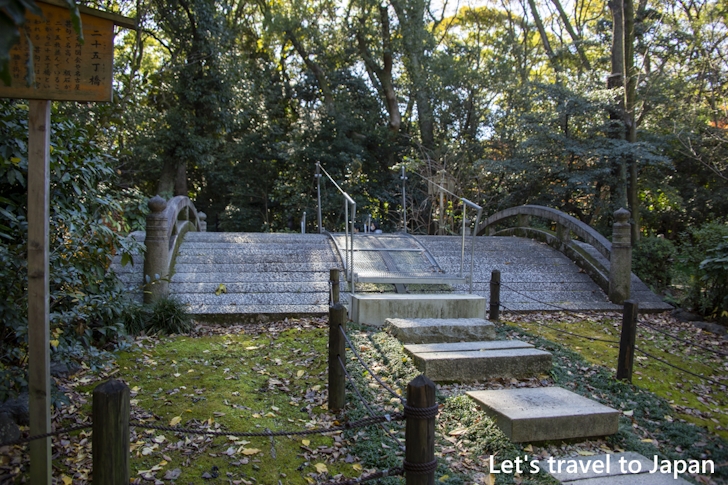
From the side, the Nijuugojo-bashi looks as follows.
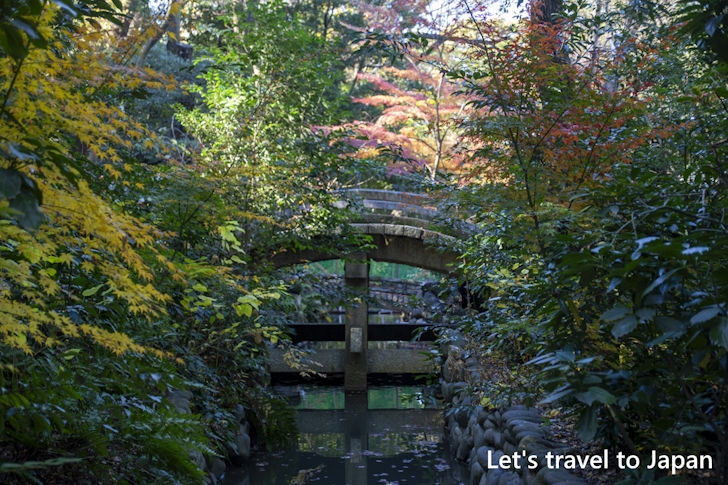
Atsuta Shrine chicken
At Atsuta Shrine, you may sometimes see chickens near the temizusha or the Homotsukan. These chickens are not kept by Atsuta Shrine; they have merely settled in the area. The following two chickens were observed in 2023.
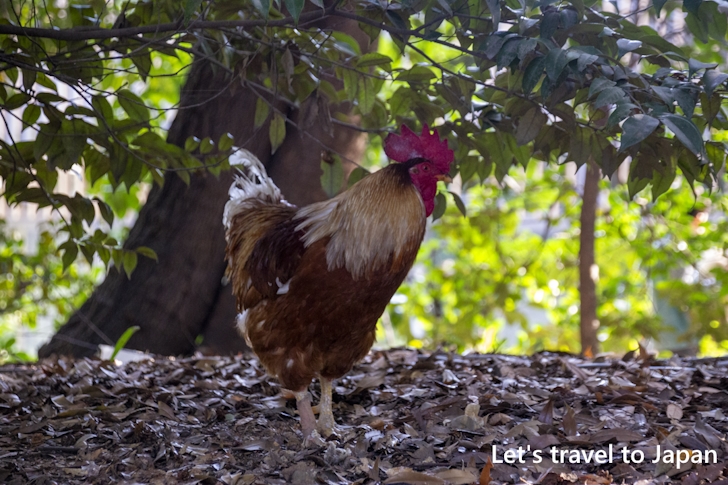
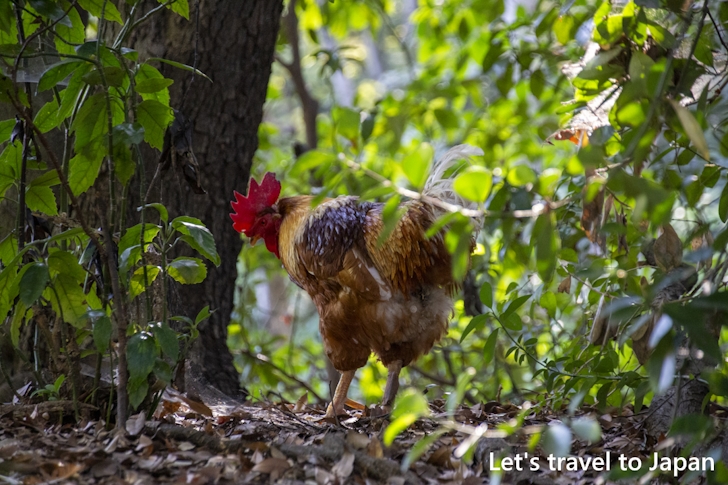
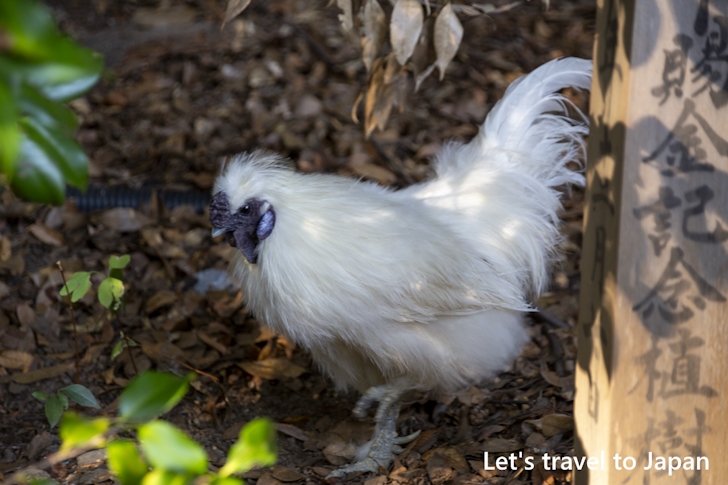
The next two were spotted in 2019.
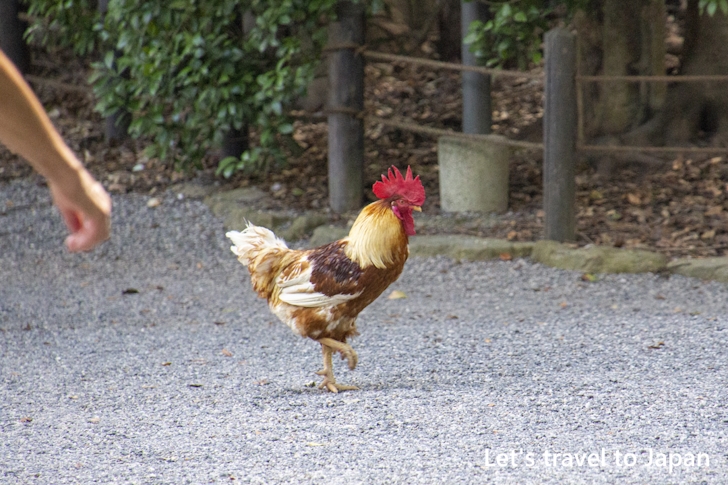
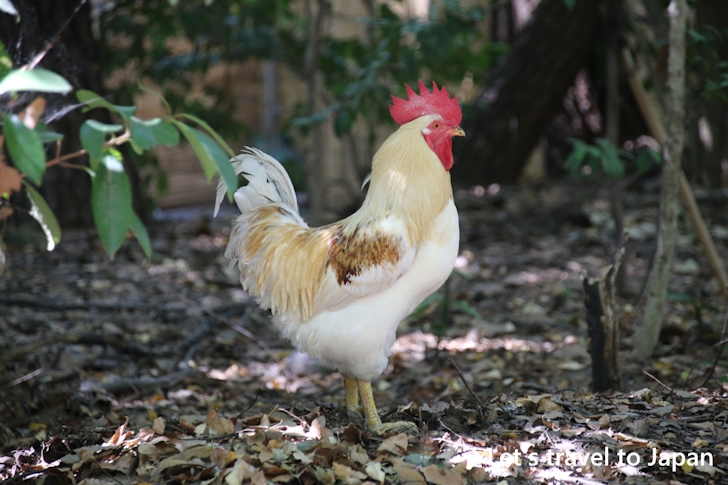
Atsuta Shrine Food & Cafe
There are three restaurants and cafes within the grounds of Atsuta Shrine.
Kusanagi Hiroba
There is Miya-Kishimen Jingu branch in Kusanagi Hiroba. In addition to a variety of kishimen, set meals are also available. Opening hours are 09:00 to 17:00, seven days a week.
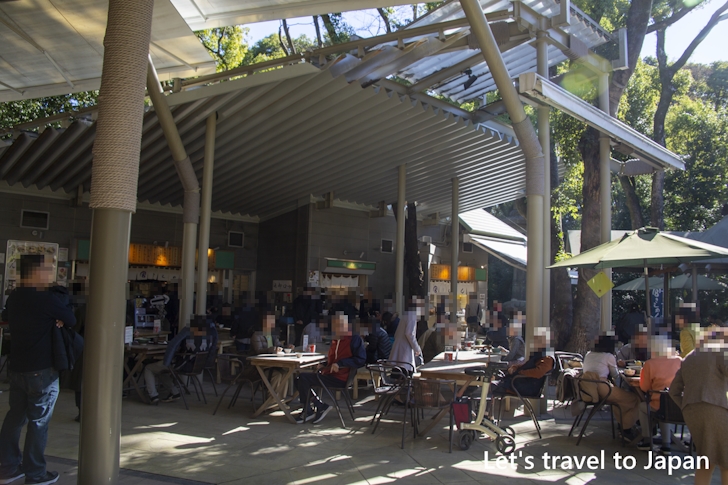
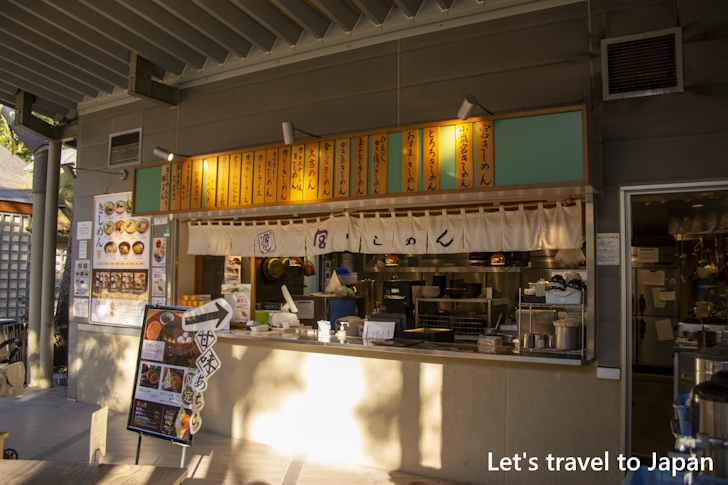
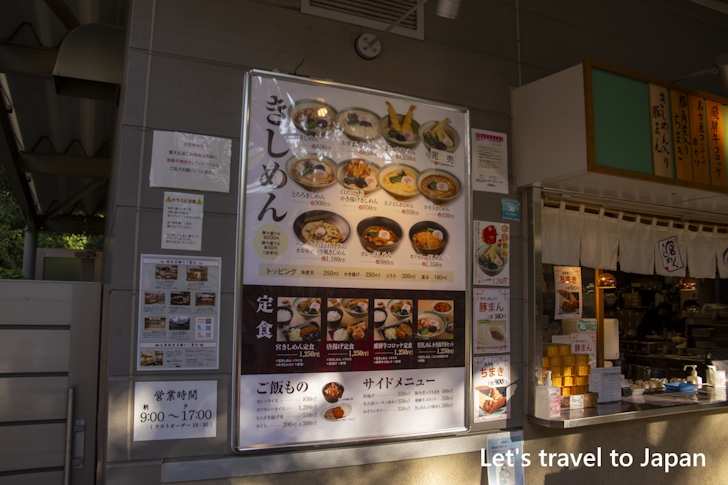
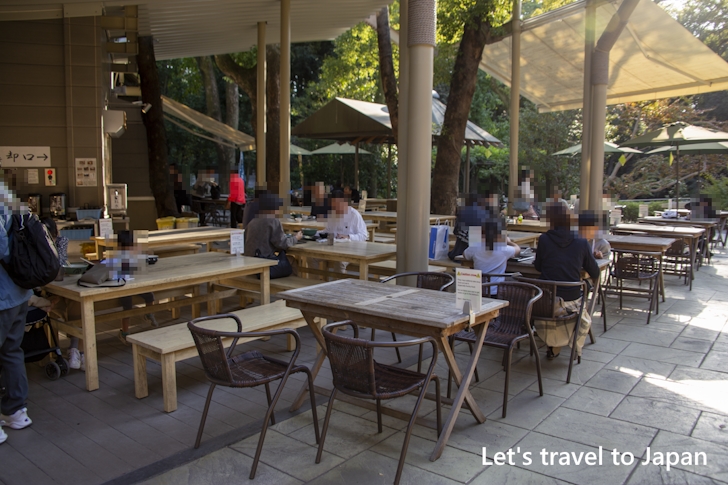
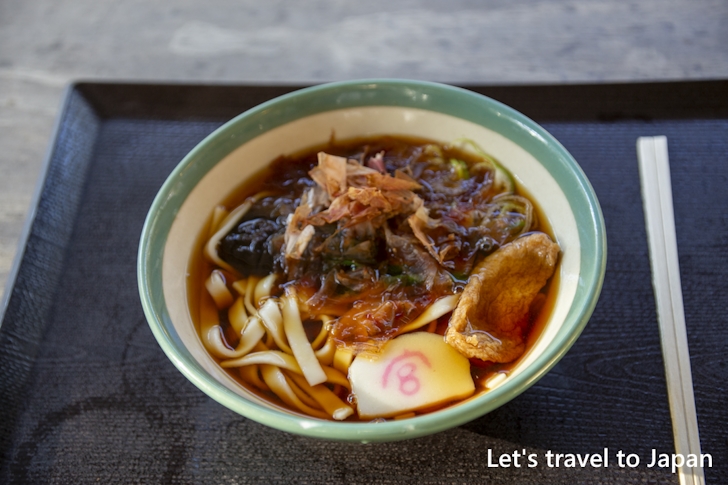
At the adjacent store, you can get various drinks, zenzai, ice cream, etc.
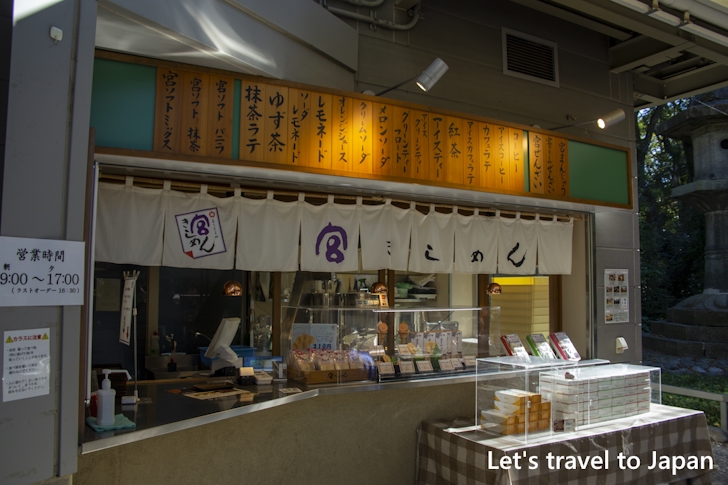
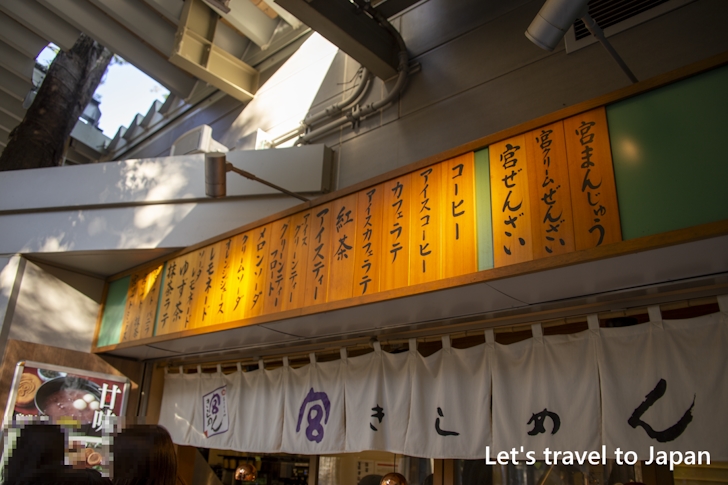
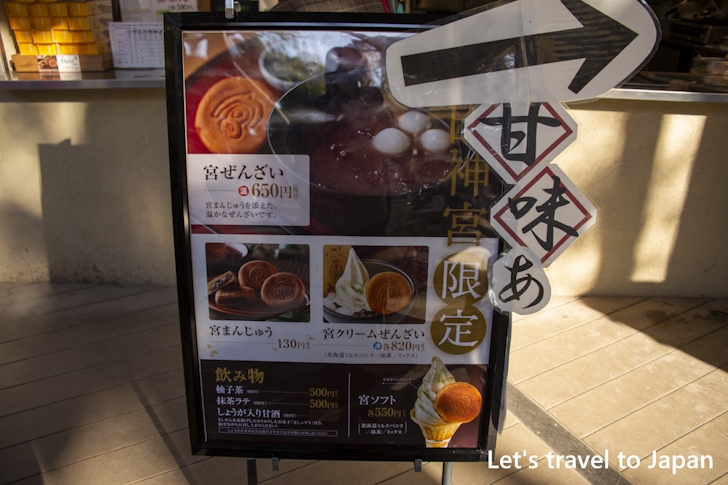
Miya-Kishimen Jingu branch will be renovated in 2021 to coincide with the opening of Kusanagi Hiroba. I will also post photos before the renovation.
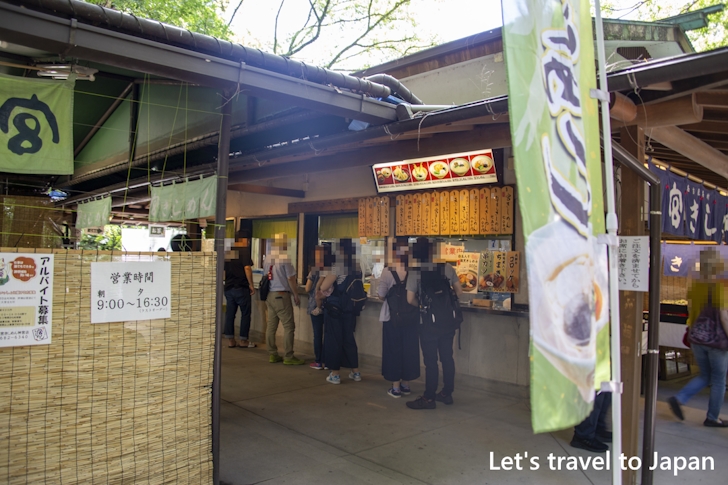
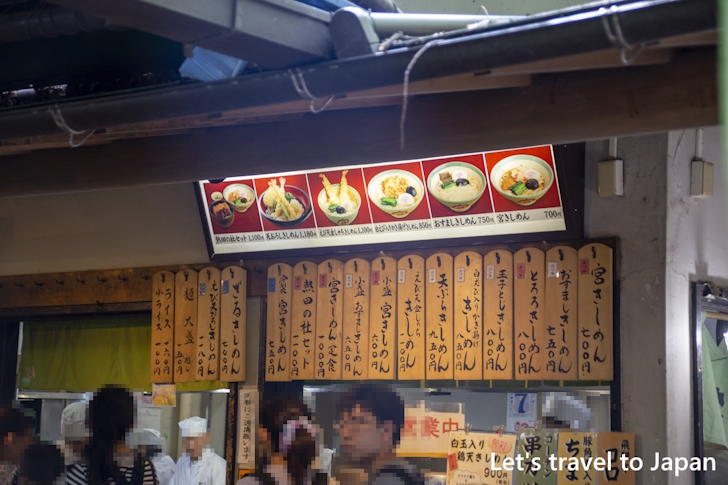
Minamo Cafe
Minamo Cafe is a cafe utilizing the waiting room of the 'Minamo Shinden Kyoshiki'. It is located behind the area where the large camphor tree is situated. The operating hours are from 09:30 to 16:30. The cafe is closed on days when there are weddings or tea ceremonies."
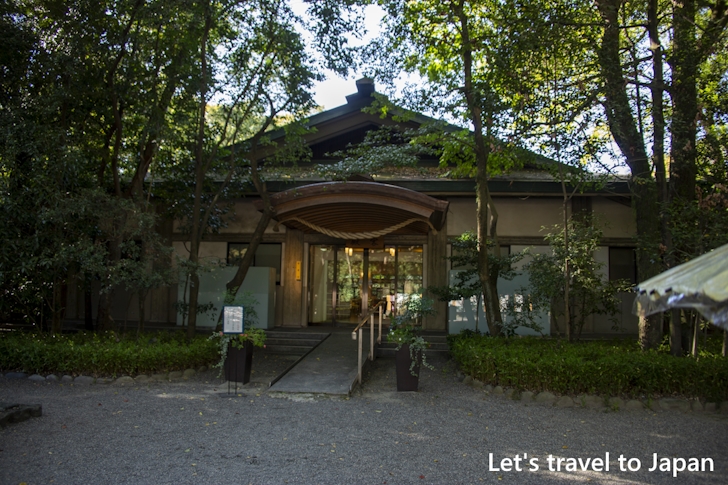
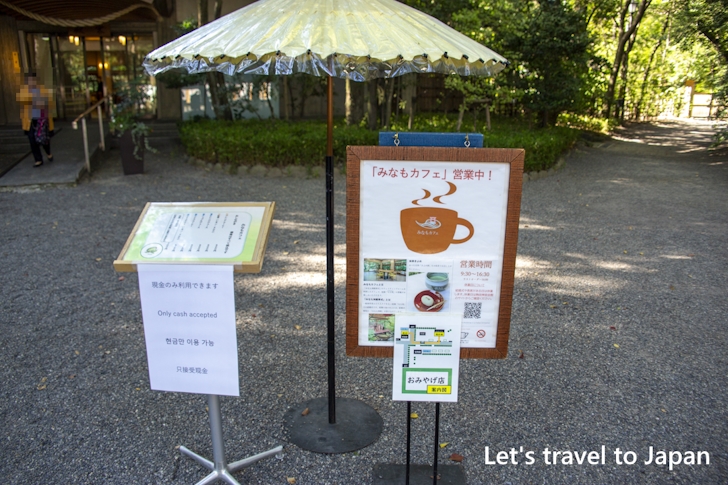
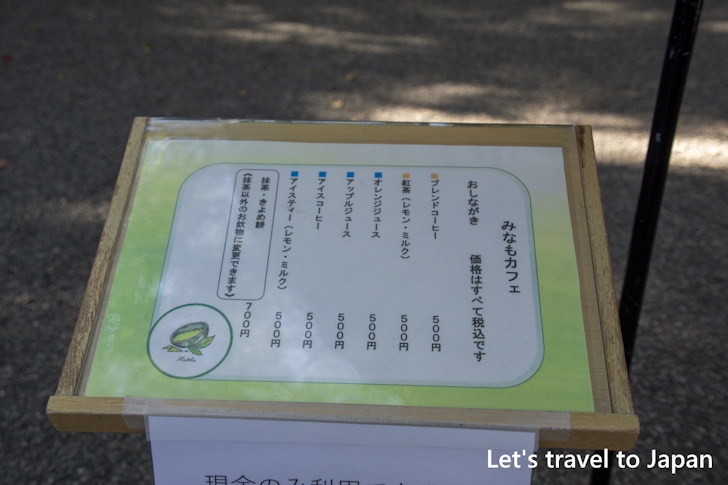
Atsuta Shrine Hall houses a tea lounge
The Atsuta Shrine Hall houses a tea lounge that is available for use. Its business hours are from 09:00 to 17:00. Please note that the lounge may be closed during the New Year's holidays, festivals, and other special events.
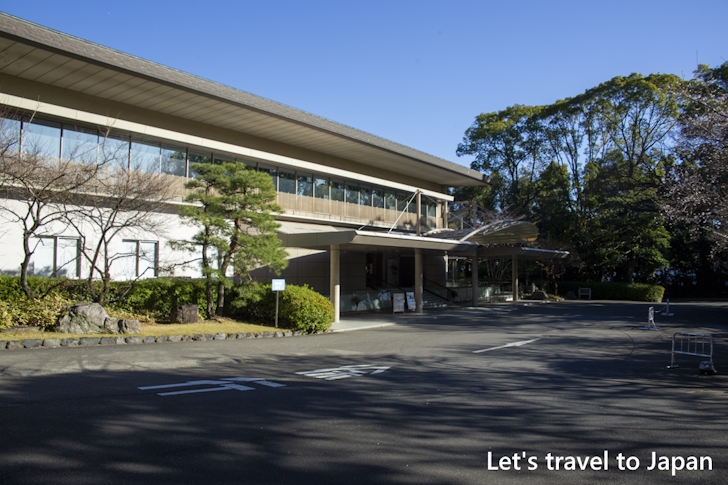
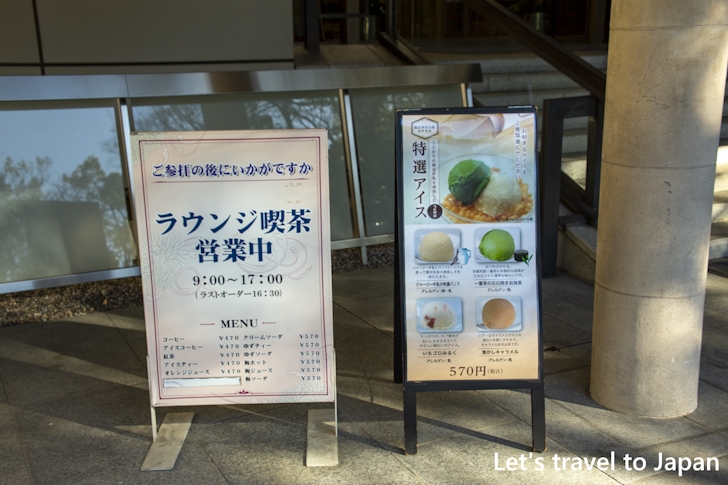
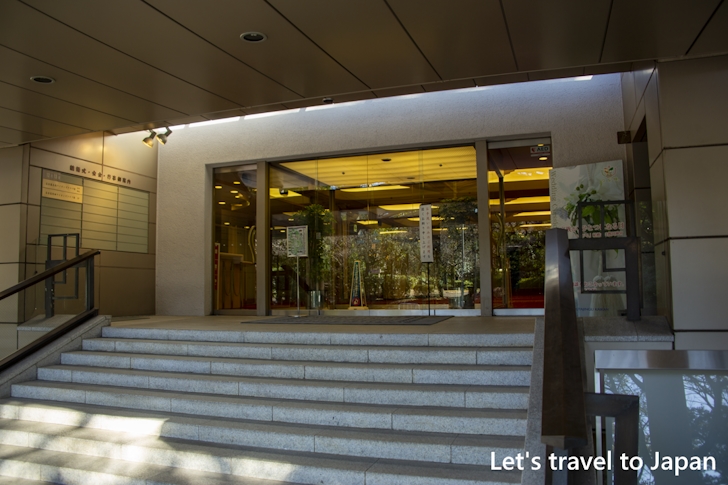
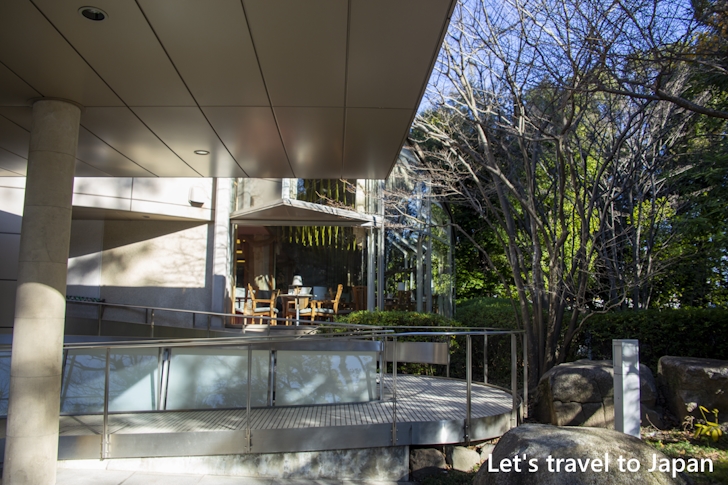
Snowy landscape of Atsuta Shrine
This is the snowy landscape of Atsuta Shrine.
For more detailed information about snowy landscape of Atsuta Shrine, please see 「Complete guide to the highlights of snowy landscape of Atsuta Shrine」.
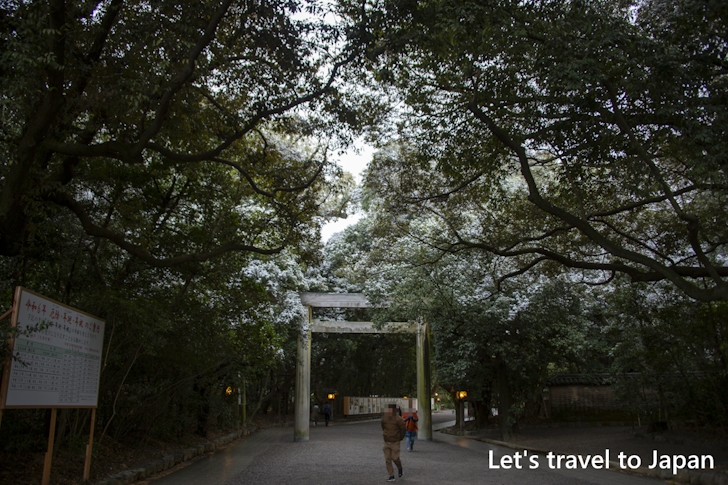
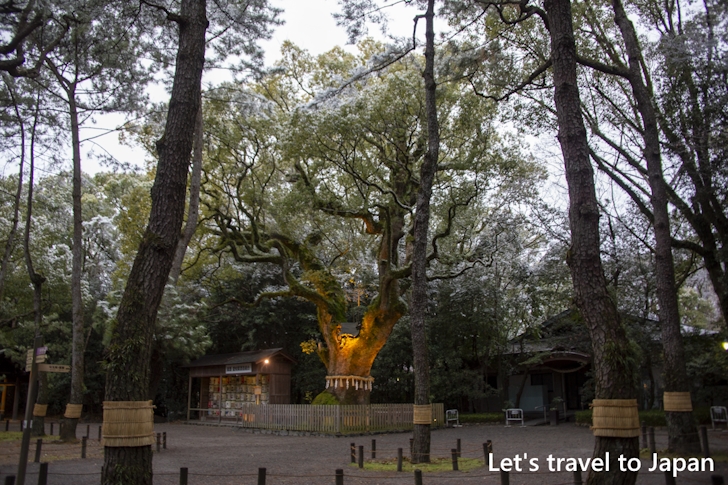
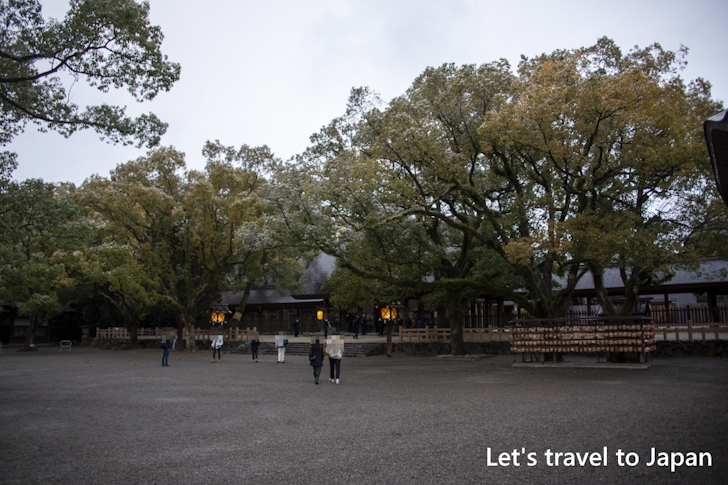
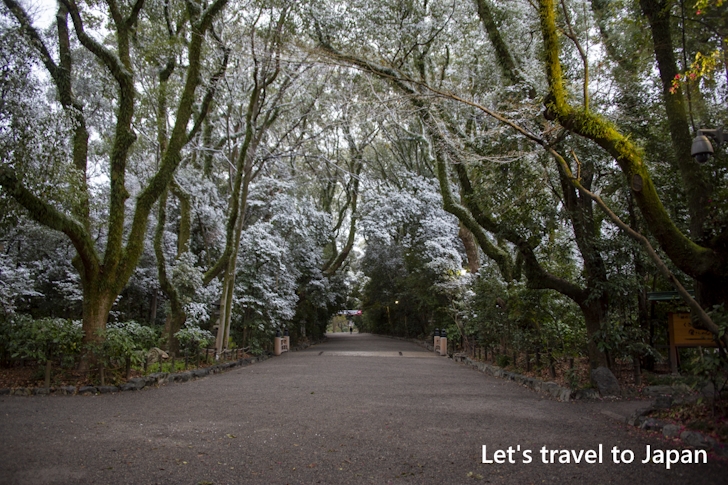
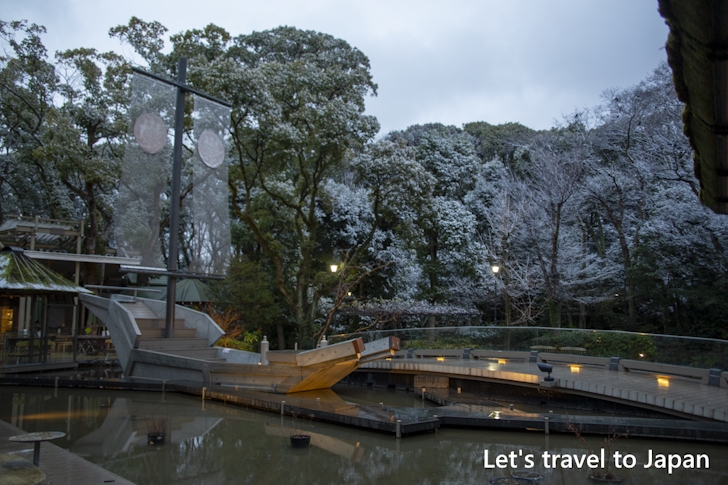
List of photos related to Atsuta Shrine
Please see below for a list of photos related to Atsuta Shrine.
Festivals and Rituals at Atsuta Shrine
I will introduce the festivals and rituals held at Atsuta Shrine that I have actually participated in.
Hosha Shinji
The Hosha Shinji at Atsuta Shrine is a ceremony praying for a bountiful harvest and the removal of disasters, and it takes place in the front courtyard of the Kagura-den. A total of 36 arrows are offered, aimed at a large target with 'Oni' written on the back. The 'chigi' attached to the target is believed to become a talisman for warding off evil, and when the last arrow is shot, worshippers rush towards the target.
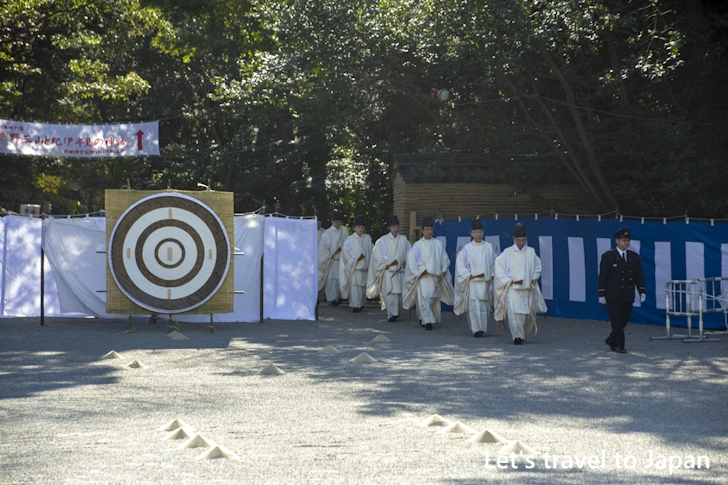
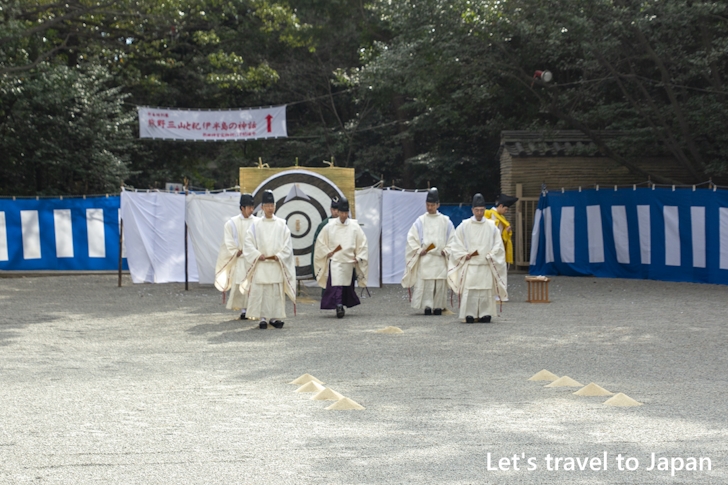
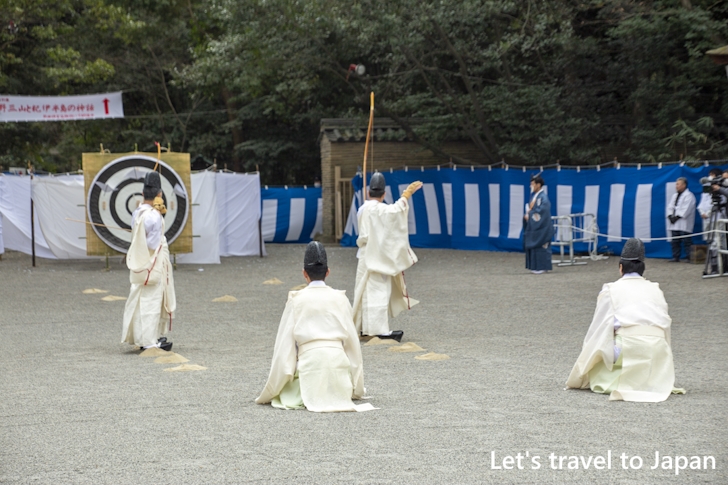
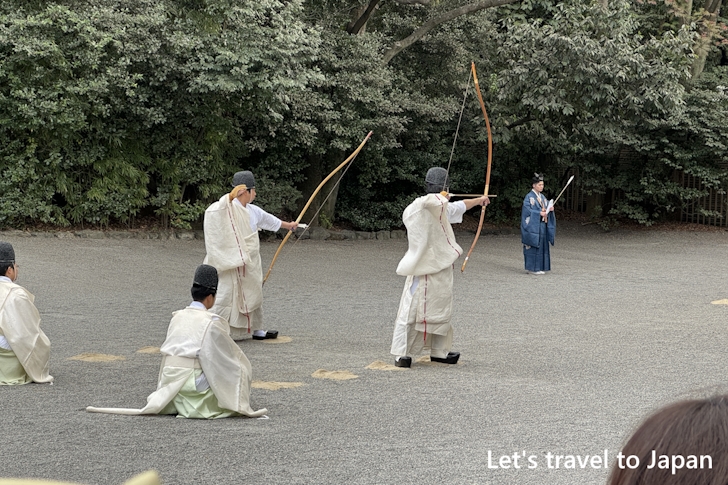
For more detailed information about the Hosha Shinji, please visit 「Complete guide to the highlights of the Hosha Shinji ceremony at Atsuta Shrine」.
Chigo Procession (Onzo Sai)
The Onzo Sai festival at Atsuta Shrine is a ceremony where offerings of silk and linen garments are made to the deity. It takes place at the Honden. After the offered garments arrive at the East Gate, about 300 people form a splendid procession and advance to the Honden. During this procession, children can participate in the Chigo procession at the end.
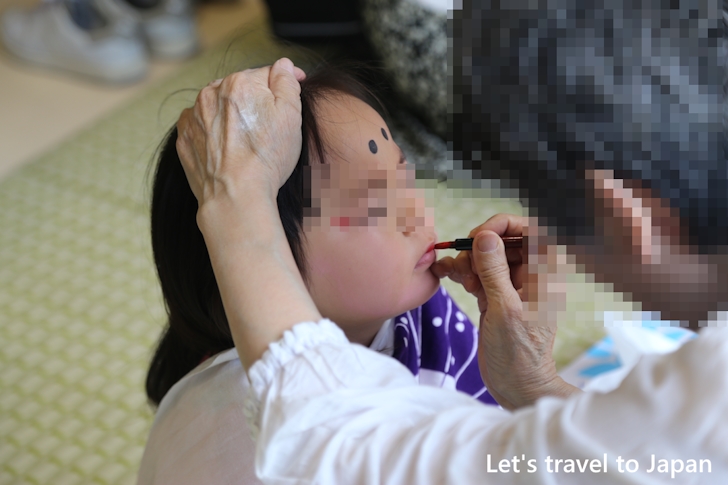
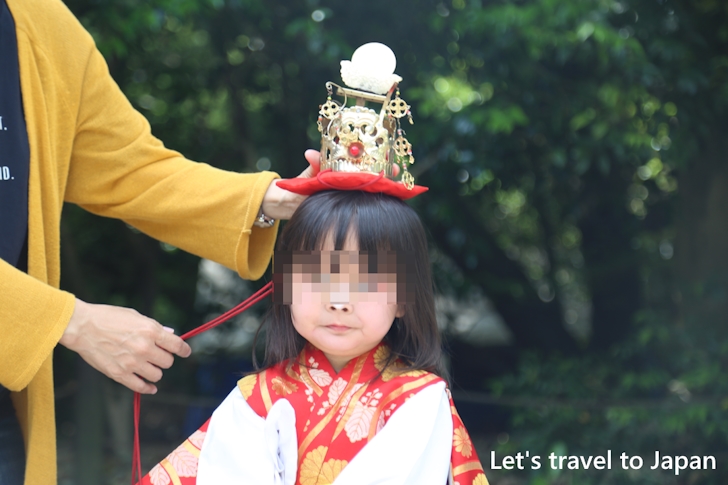
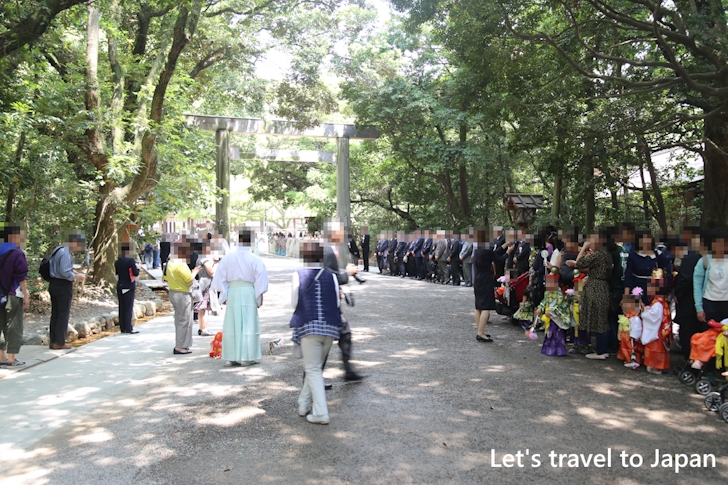
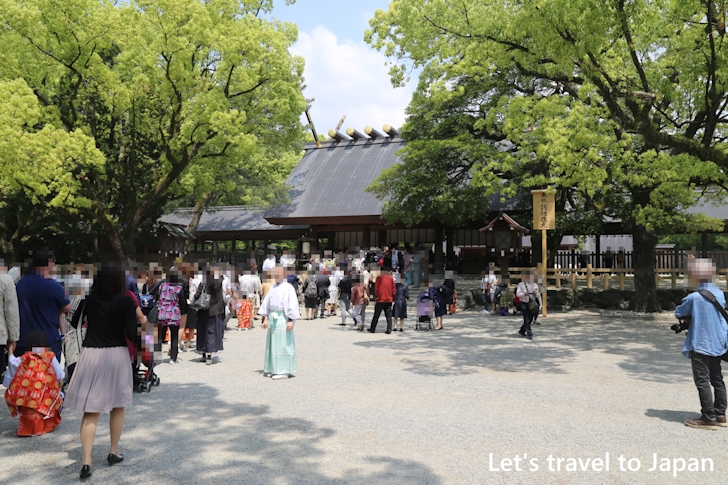
For more detailed information about the Chigo Procession (Onzo Sai), please visit 「Complete guide to the highlights of the Chigo Procession (Onzo Sai) at Atsuta Shrine」.
Address and access method of Atsuta Shrine
Address of Atsuta Shrine
The address of Atsuta Shrine is 1-1-1 Jingu, Atsuta-ku, Nagoya, Aichi Prefecture.
Access method of Atsuta Shrine
I will explain how to access Atsuta Shrine from Nagoya Station. The nearest stations are Meitetsu Jingumae Station for the East Gate, Nagoya Municipal Subway Atsuta-Jingu-Nishi Station for the West Gate, and Nagoya Municipal Subway Atsuta-Jingu-Tenmacho for the Main Gate (South Gate).
When using Meitetsu Jingumae Station:
Meitetsu Nagoya Main Line
7 minutes
Walk
3 minutes
When using Nagoya Municipal Subway Atsuta-Jingu-Nishi Station:
Nagoya Municipal Subway Higashiyama Line
5 minutes
Nagoya Municipal Subway Meijo Line
12 minutes
Walk
7 minutes
When using Nagoya Municipal Subway Atsuta-Jingu-Tenmacho Station:
Nagoya Municipal Subway Higashiyama Line
5 minutes
Nagoya Municipal Subway Meijo Line
14 minutes
Walk
7 minutes
Atsuta Shrine parking lot
Atsuta Shrine has several parking lots available for free. For information on the location of each parking lot and how to access it, please see 「Complete guide to parking at Atsuta Shrine」.
Attractions near Atsuta Shrine
Several notable attractions are located near Atsuta Shrine:
Nagoya Castle
Nagoya Castle is a striking historical landmark in Nagoya, Japan, known for its iconic architecture and stunning golden shachi ornaments adorning the rooftop. Visitors can explore the castle's extensive grounds, lush gardens, and informative museum, which provides a captivating glimpse into Japan's rich feudal history. The beautifully reconstructed castle serves as a testament to Japan's architectural prowess and offers a memorable experience for history and culture enthusiasts.
Higashiyama Zoo and Botanical Gardens
Higashiyama Zoo and Botanical Gardens is a municipal zoo and botanical garden located in Nagoya, Aichi Prefecture. It opened in 1937. Within the grounds, there are not only a zoo and botanical garden but also an amusement park, a natural animal museum, a world medaka museum, an petting zoo, and an observation deck called the Higashiyama Sky Tower. In addition to its convenient location just a few minutes' walk from the subway station, admission is free for junior high school students and younger, making it a popular spot for families.
Little World Museum of Man
Little World is an open-air ethnographic museum featuring 32 houses from 23 different countries. Visitors can explore buildings that have either been relocated or restored from various countries and can also enjoy cuisines from around the world. In some areas, you can try on traditional ethnic clothing and take a stroll or snap photos within designated areas while wearing the attire. Regular events and fairs are held, making it enjoyable no matter how many times you visit.
Dino Adventure Nagoya
Dino Adventure Nagoya is a dinosaur-themed amusement park located within the Odaka Ryokuchi Park in Nagoya, Aichi Prefecture. The park features a self-guided walking course through a forest where numerous lifelike dinosaurs are placed. Each of these dinosaurs moves and makes sounds, offering visitors an experience as if they have stepped into a prehistoric world.
Other information about Atsuta Shrine
Official site (English version) about Atsuta Shrine :
https://www.atsutajingu.or.jp/
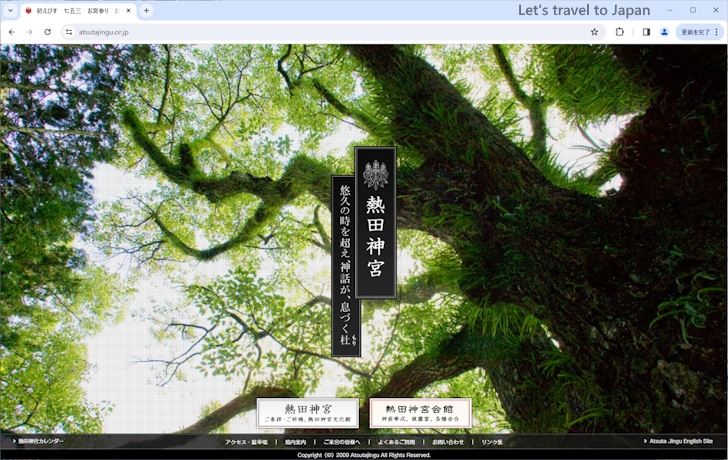
-- --
Thank you for reading to the end.
( Written by Tatsuo Ikura )